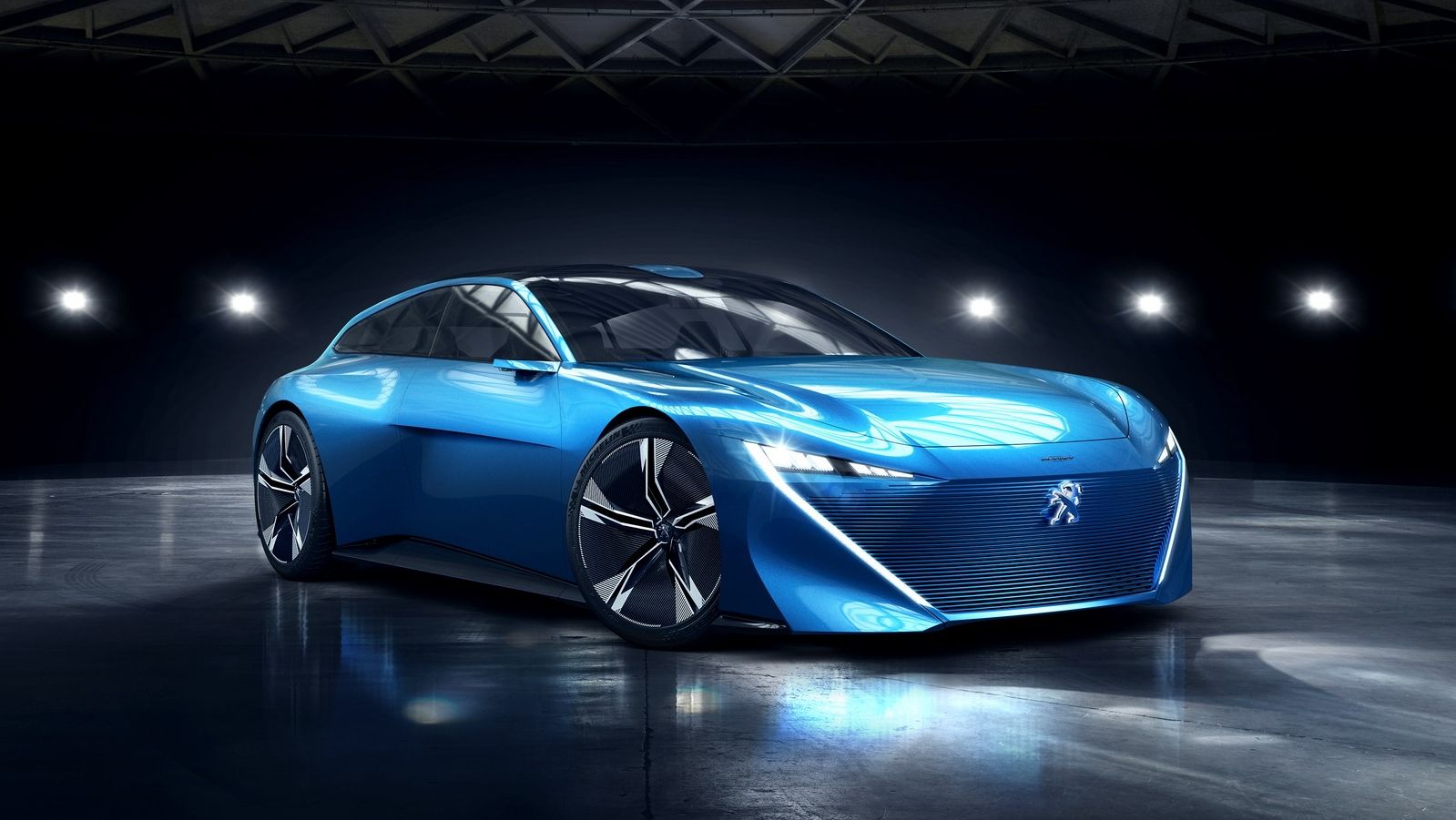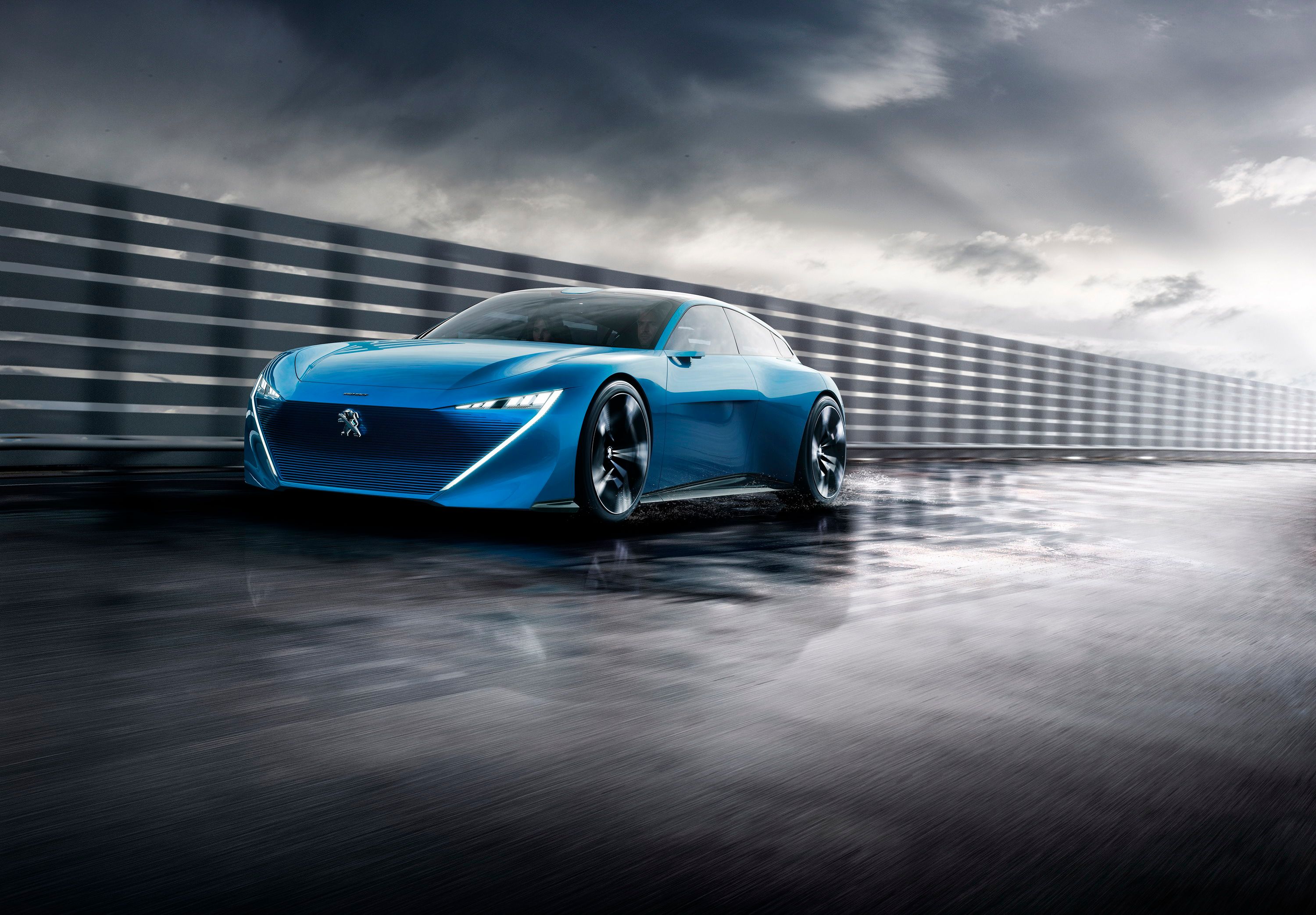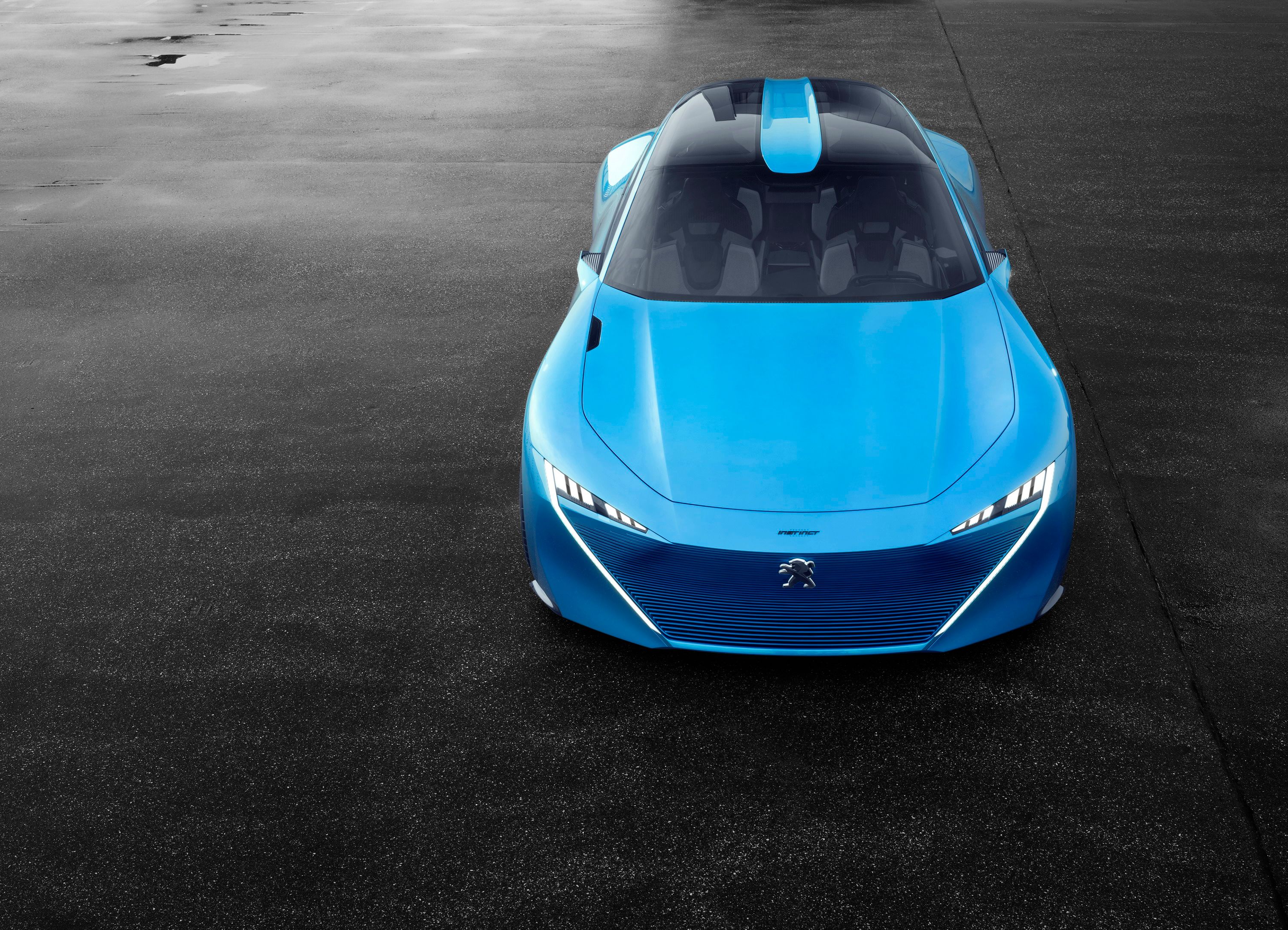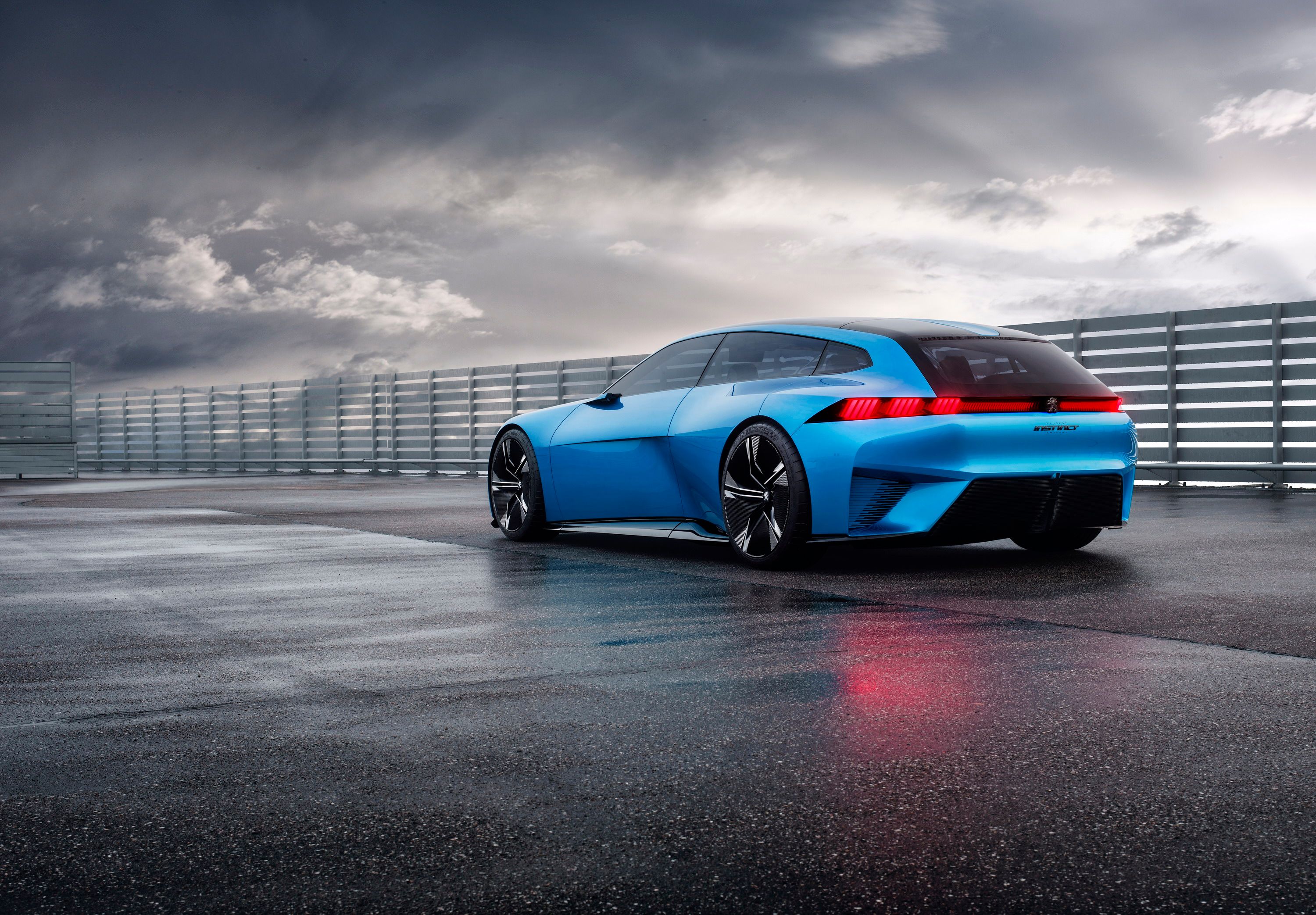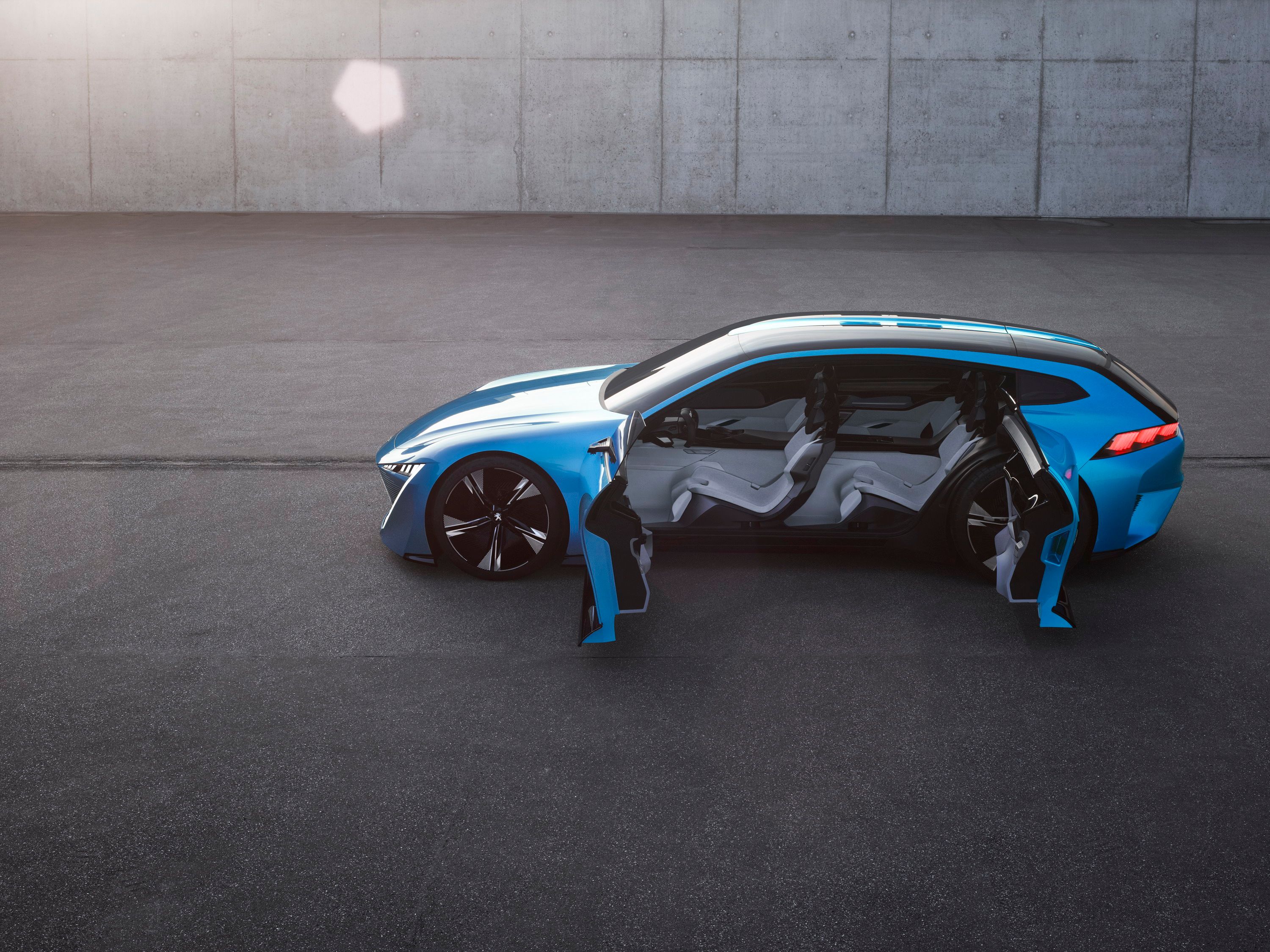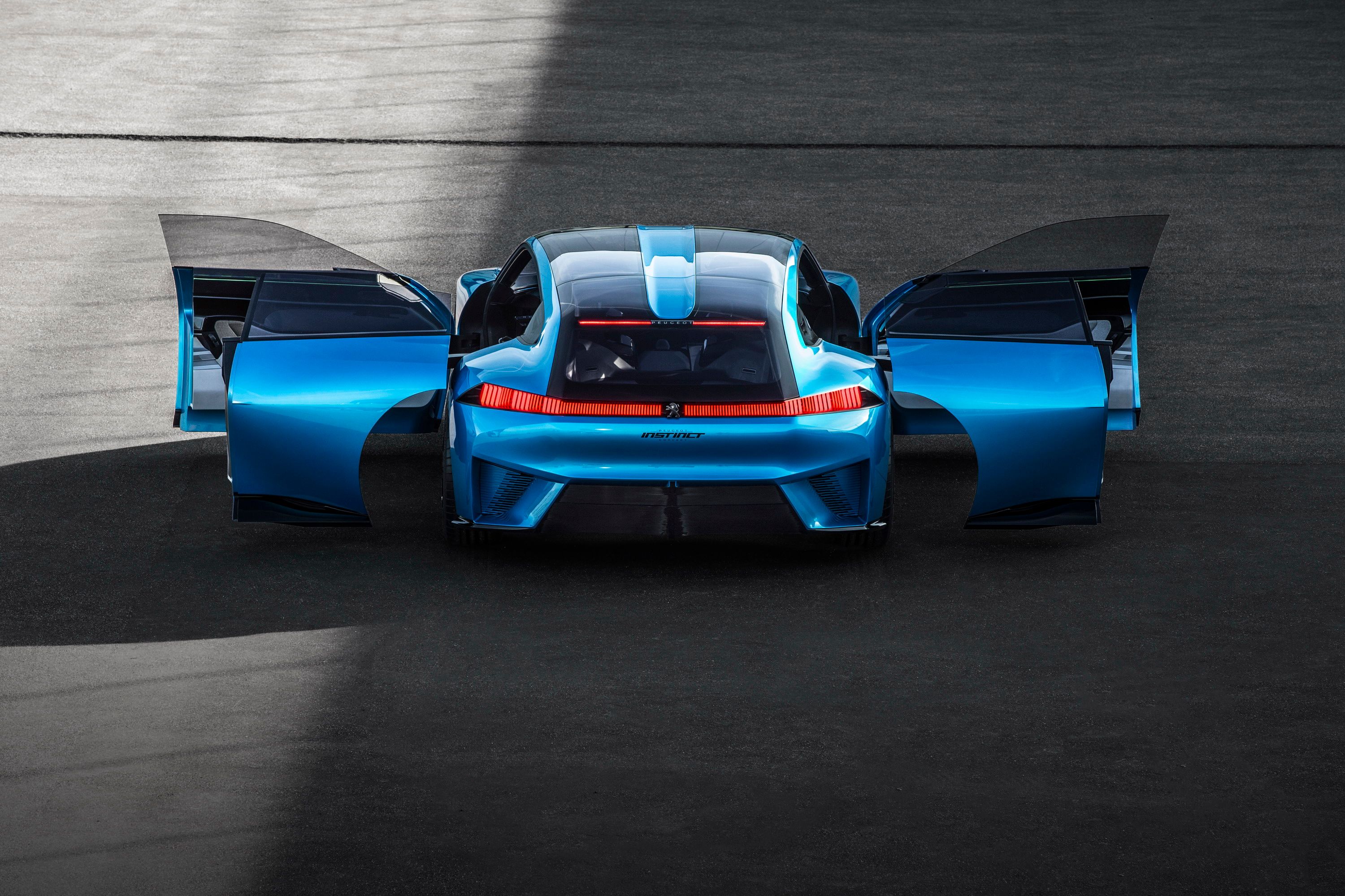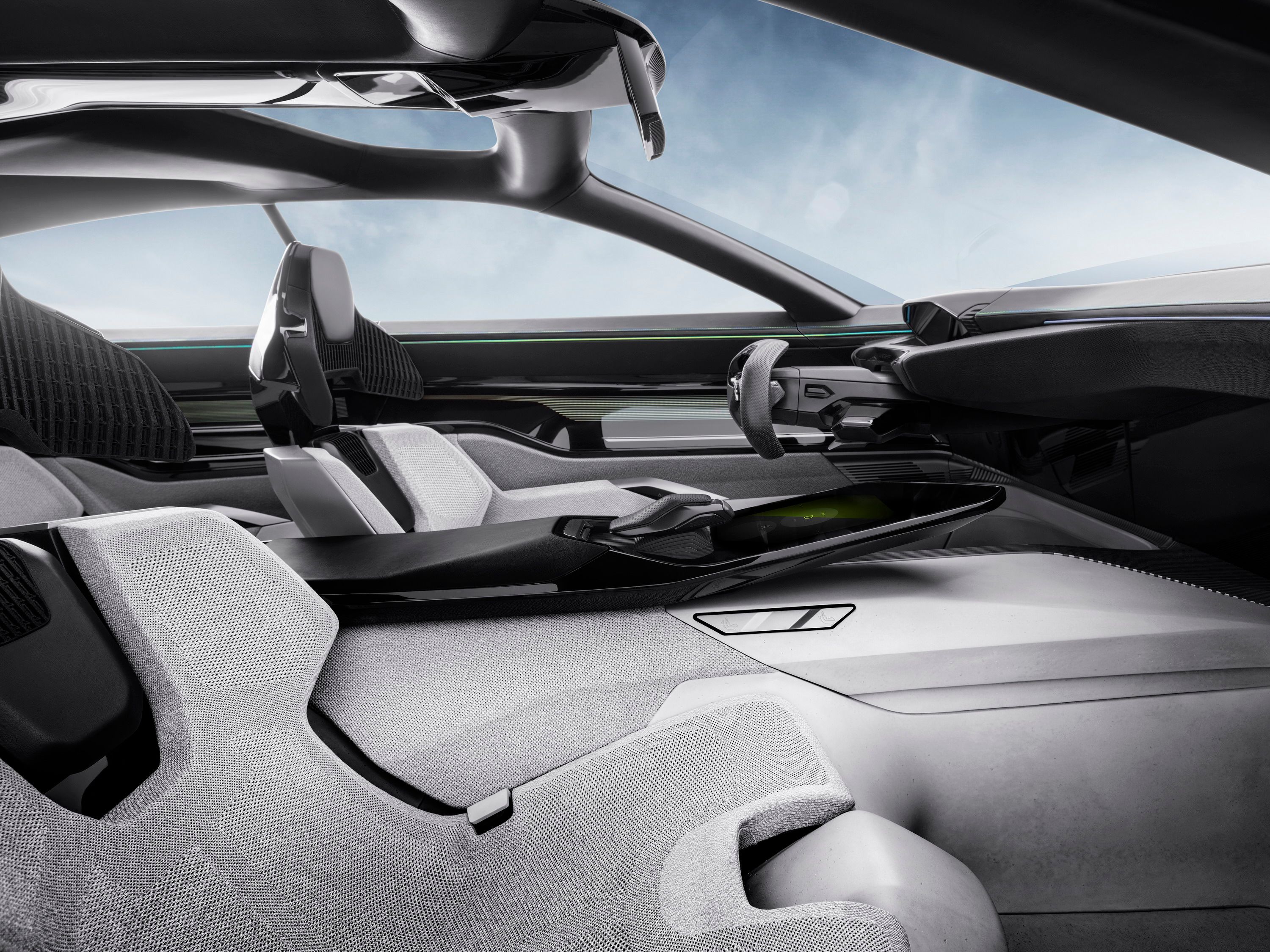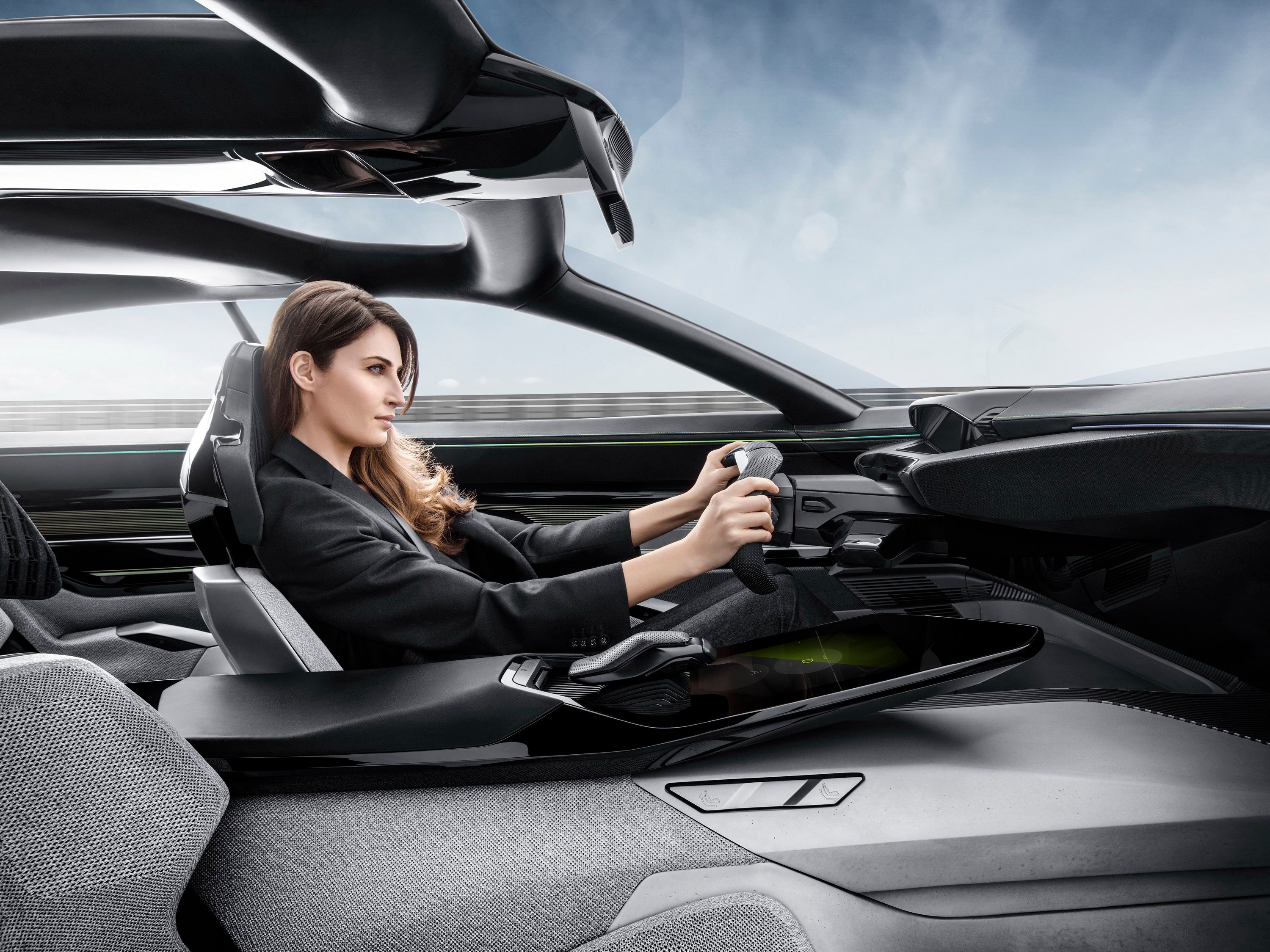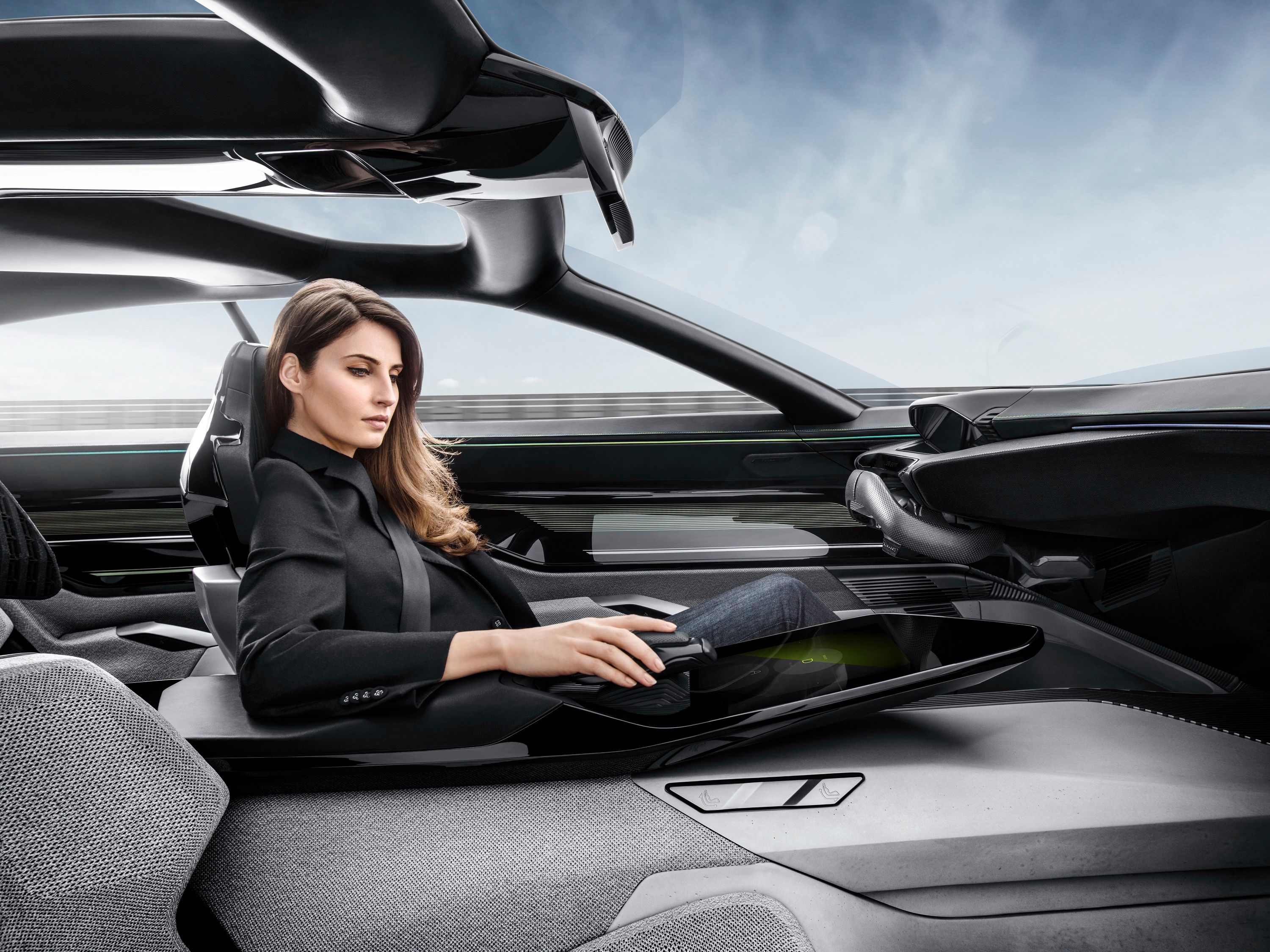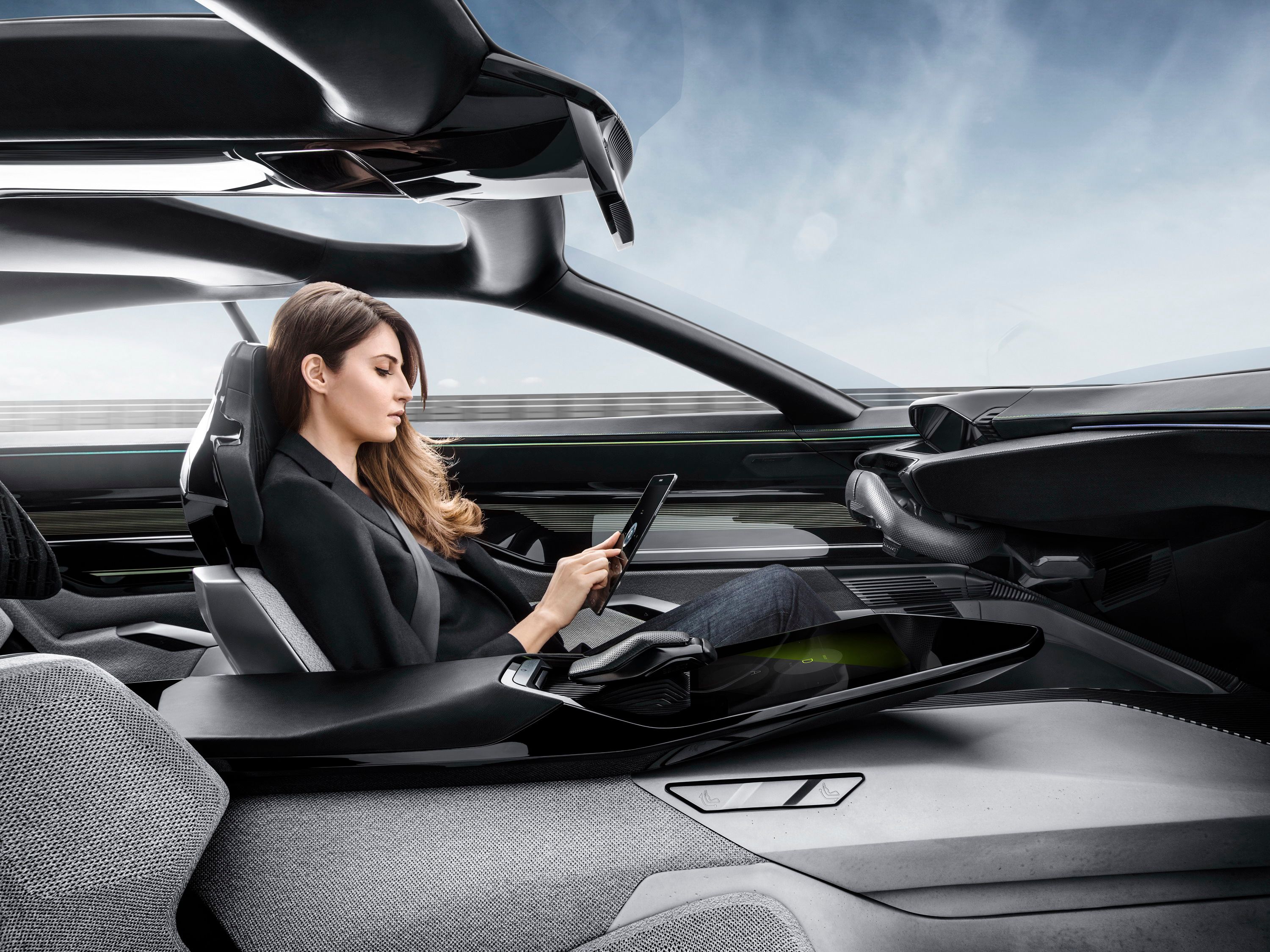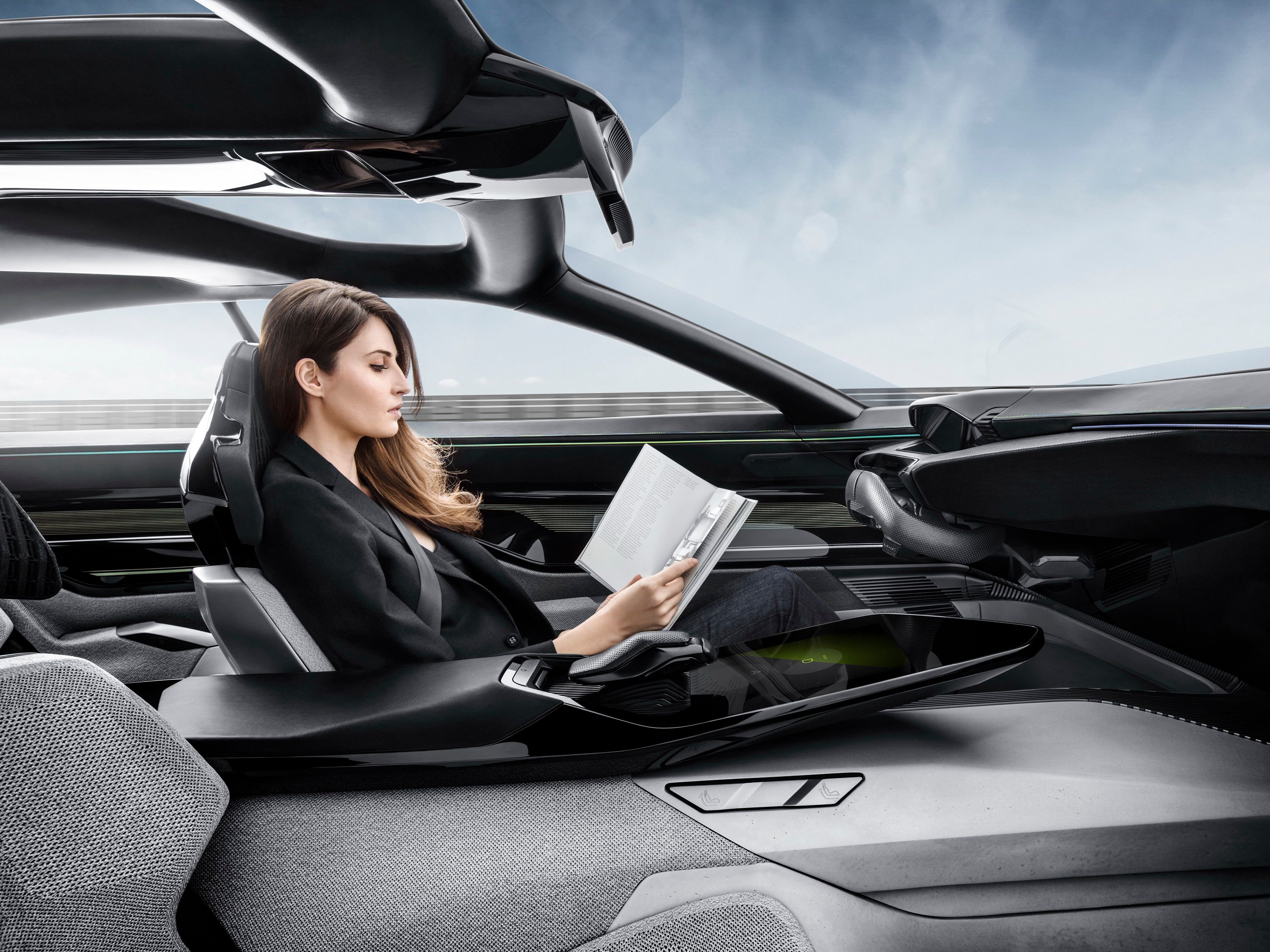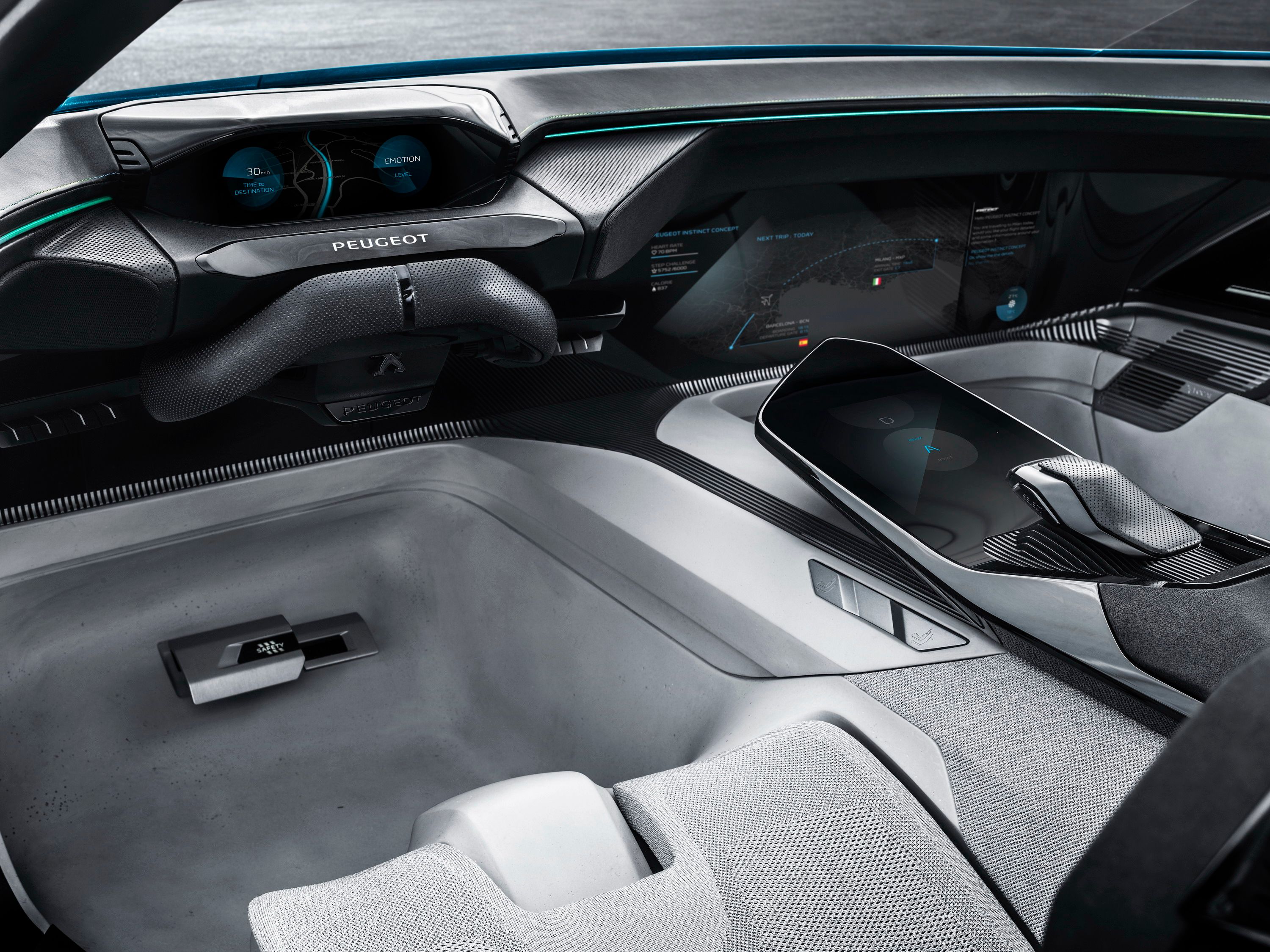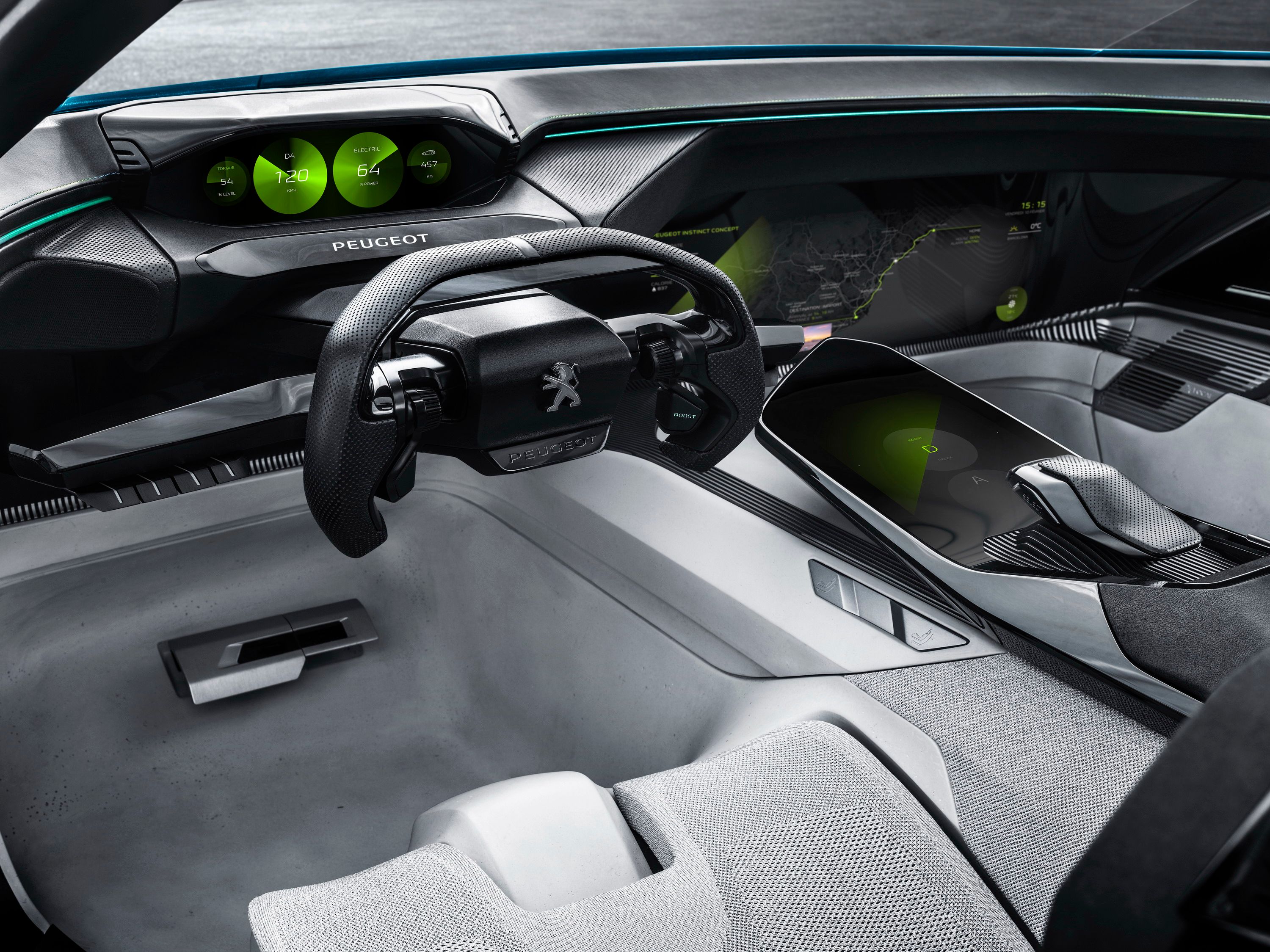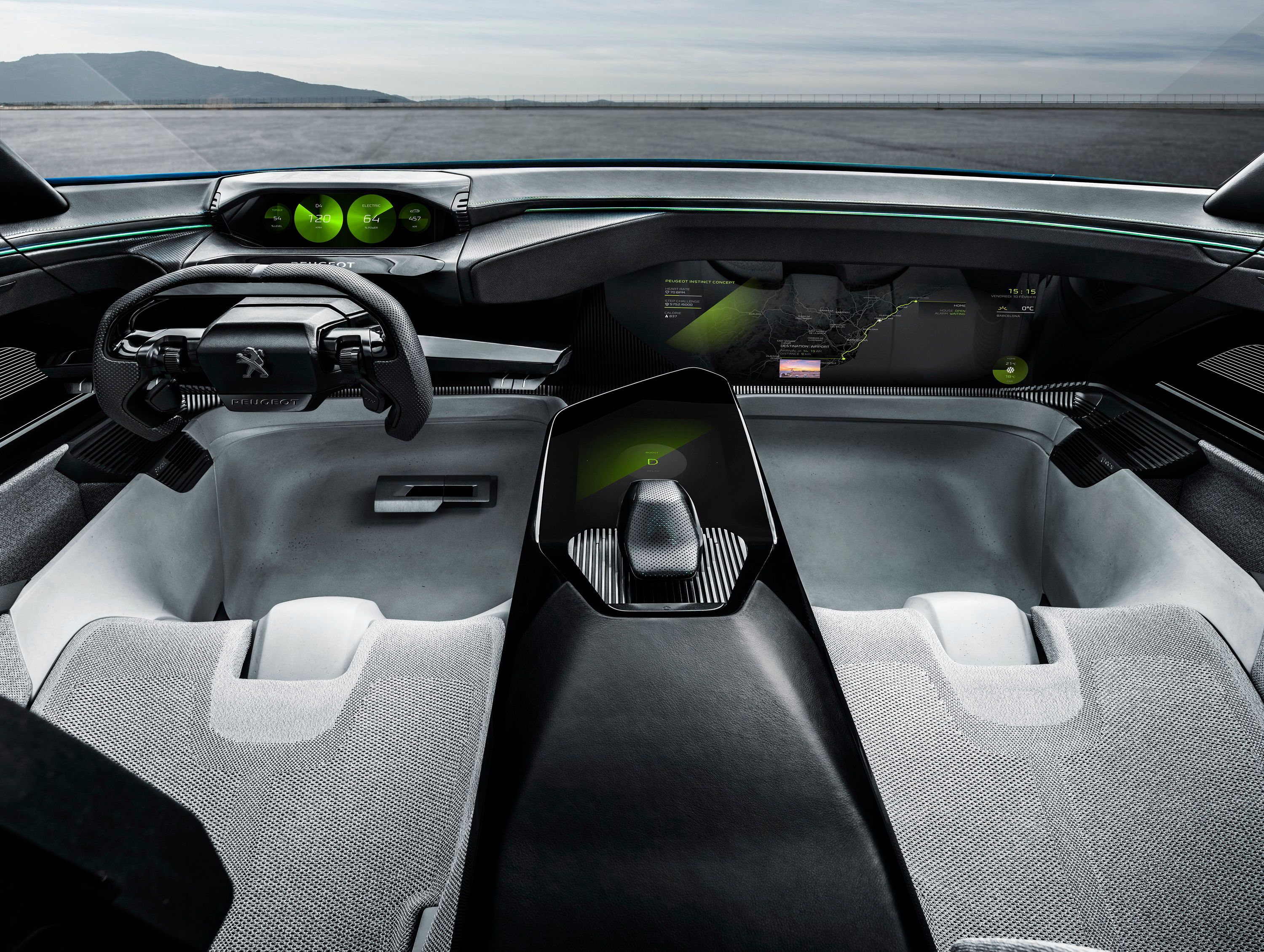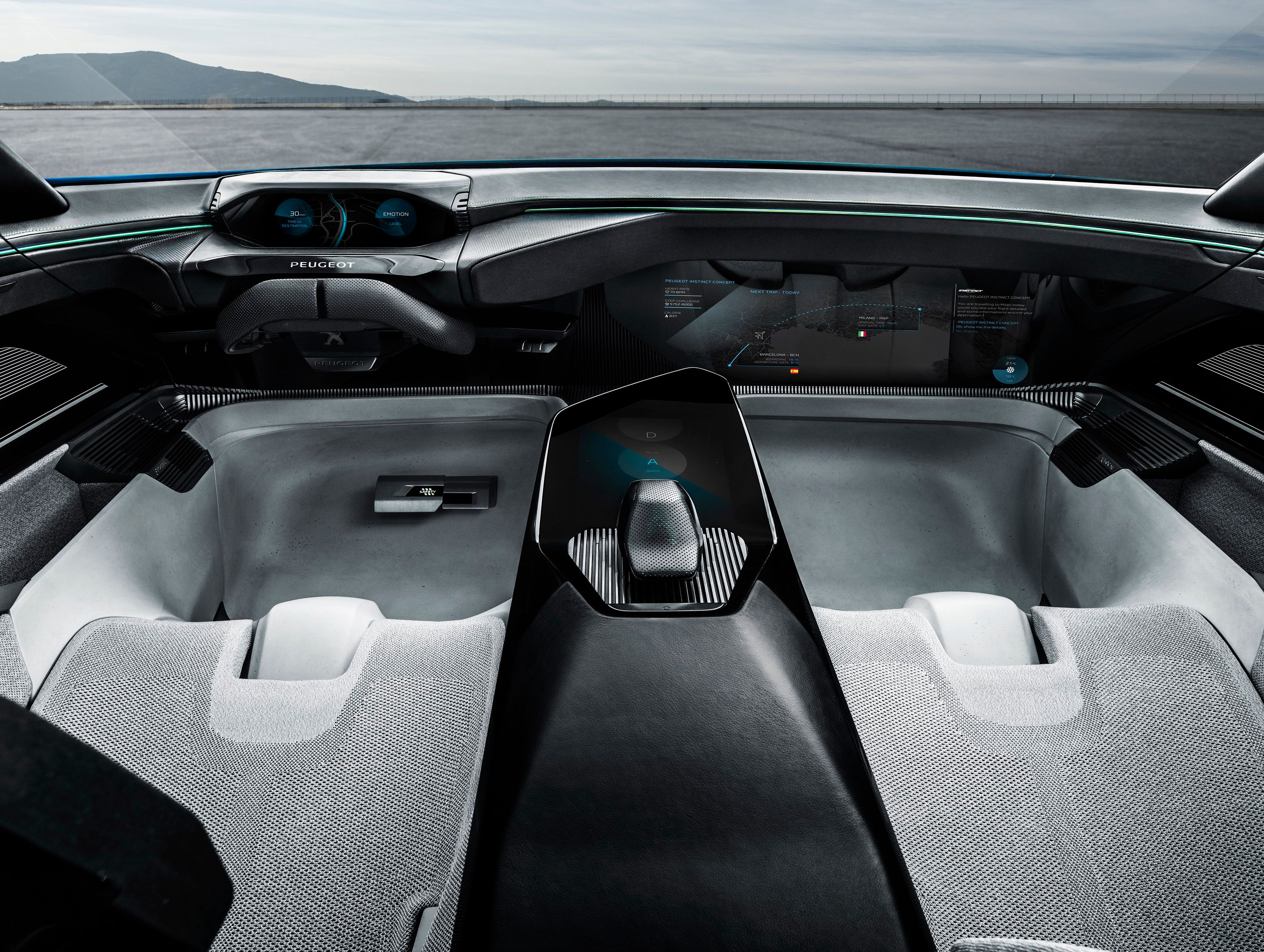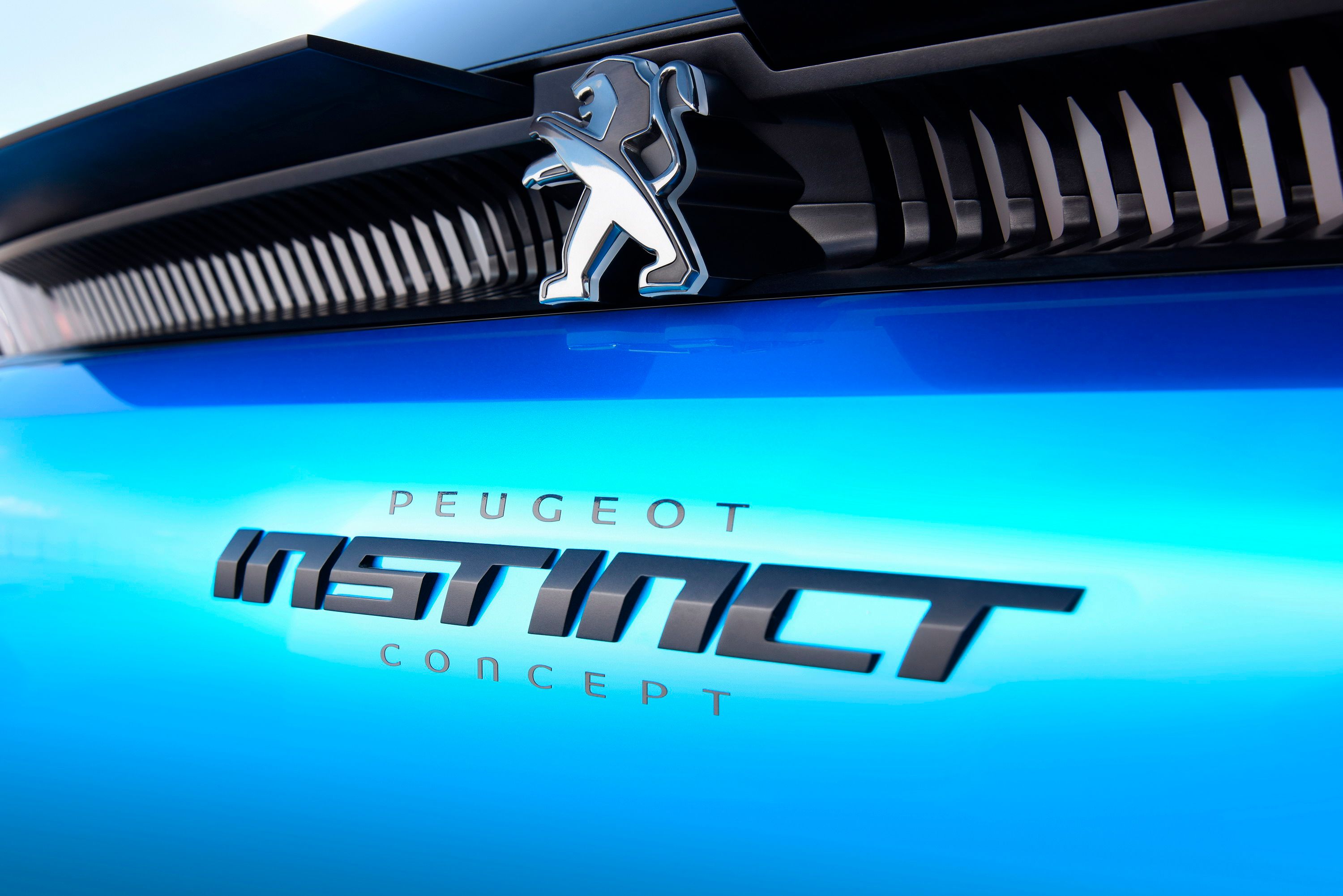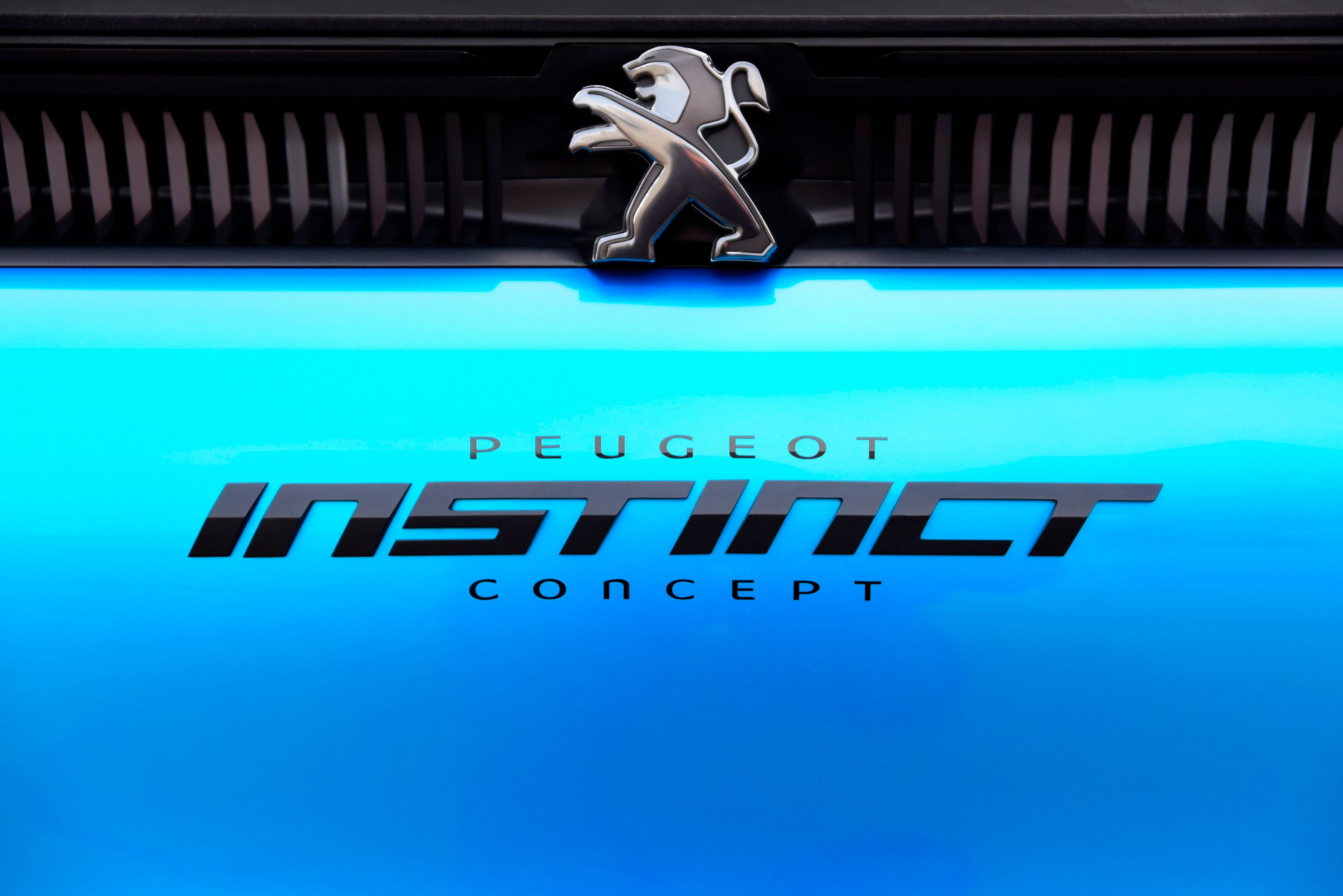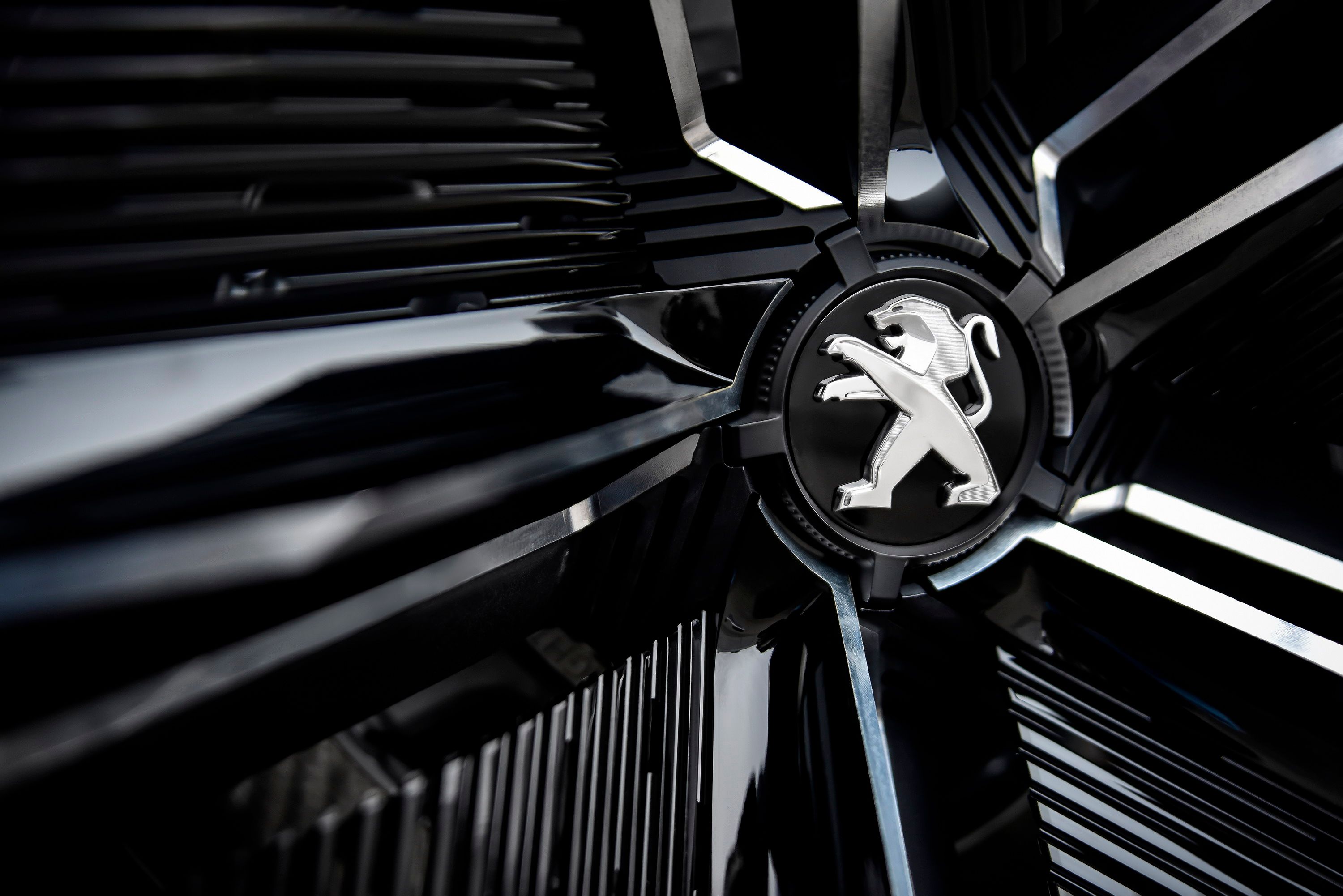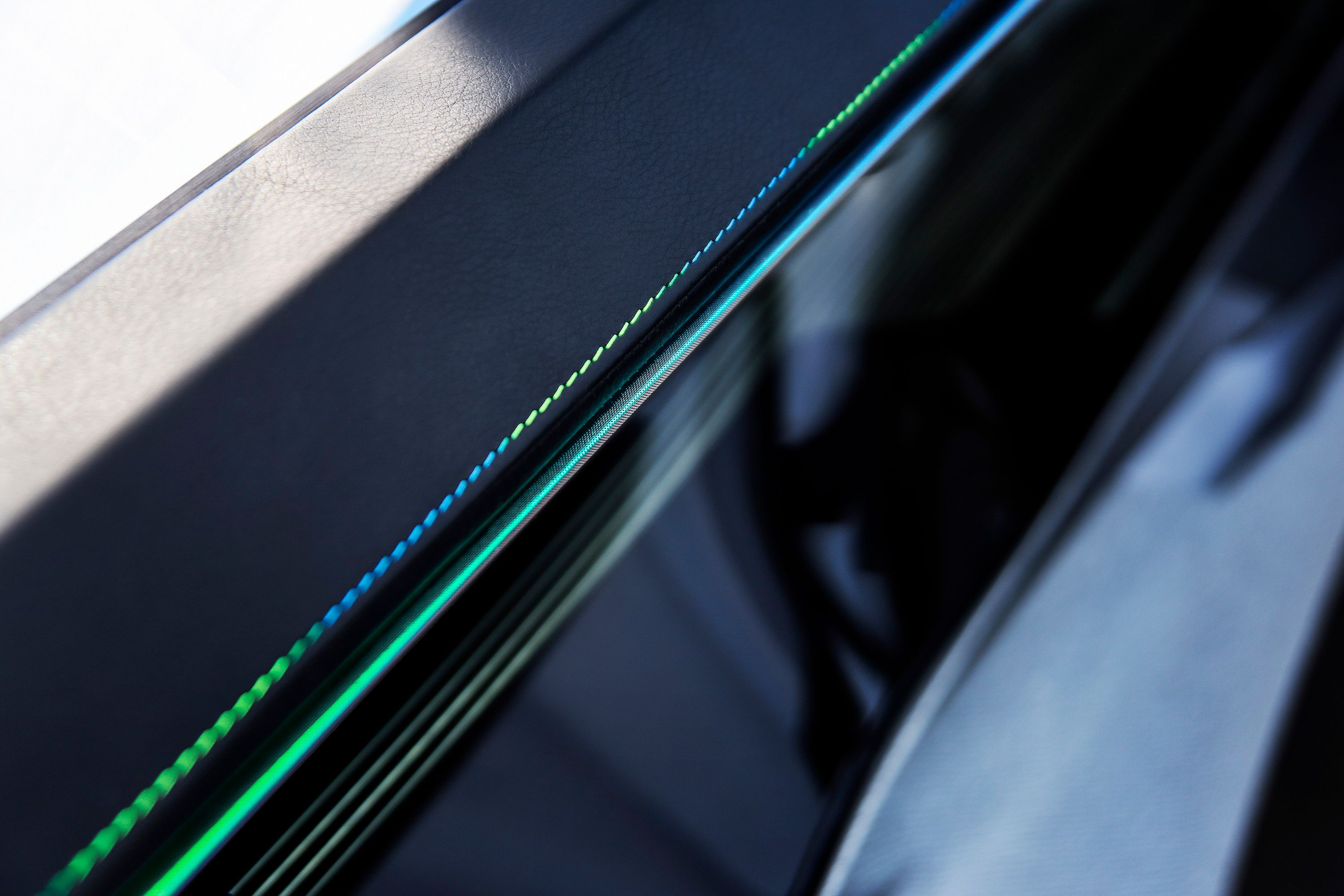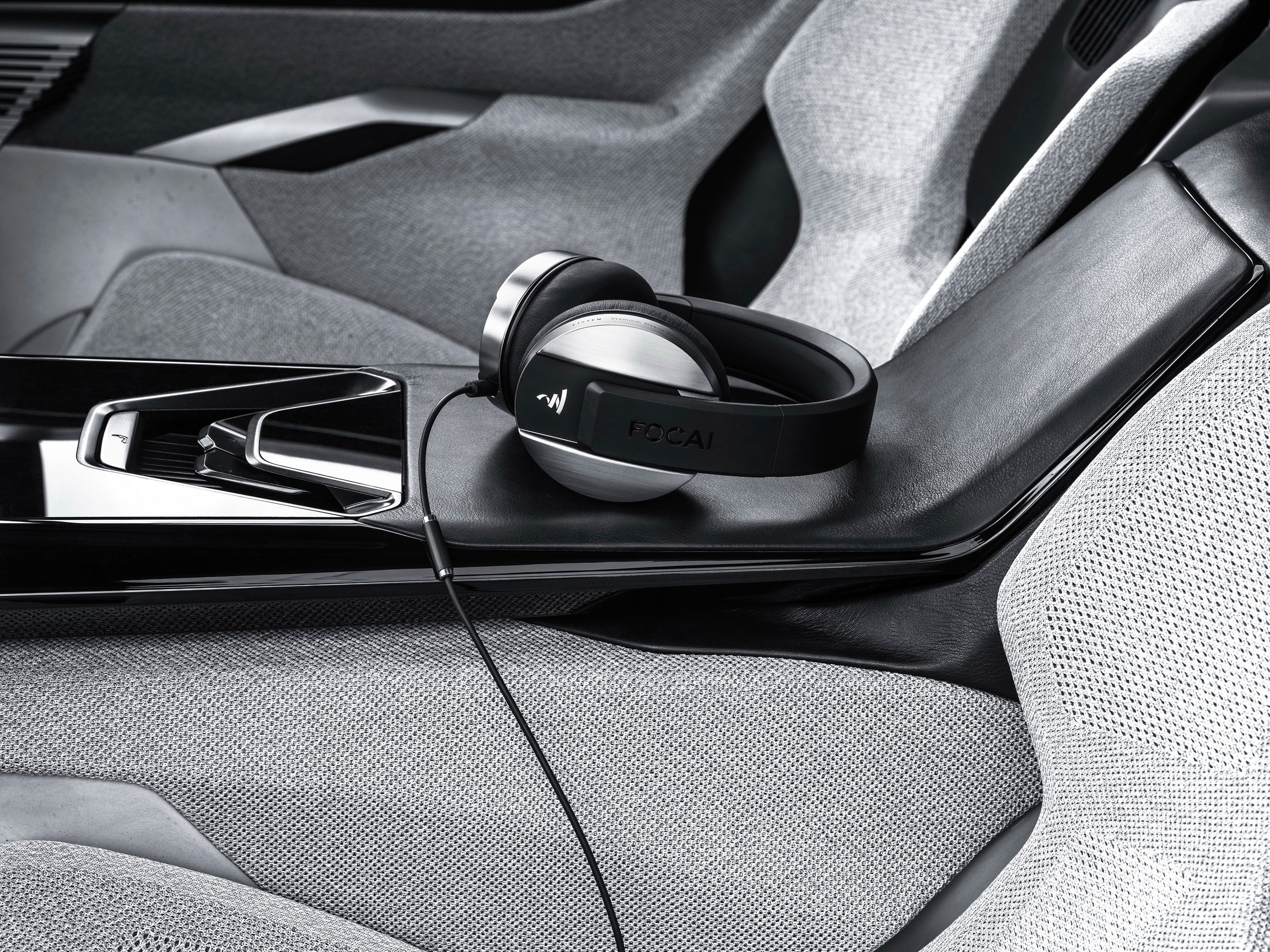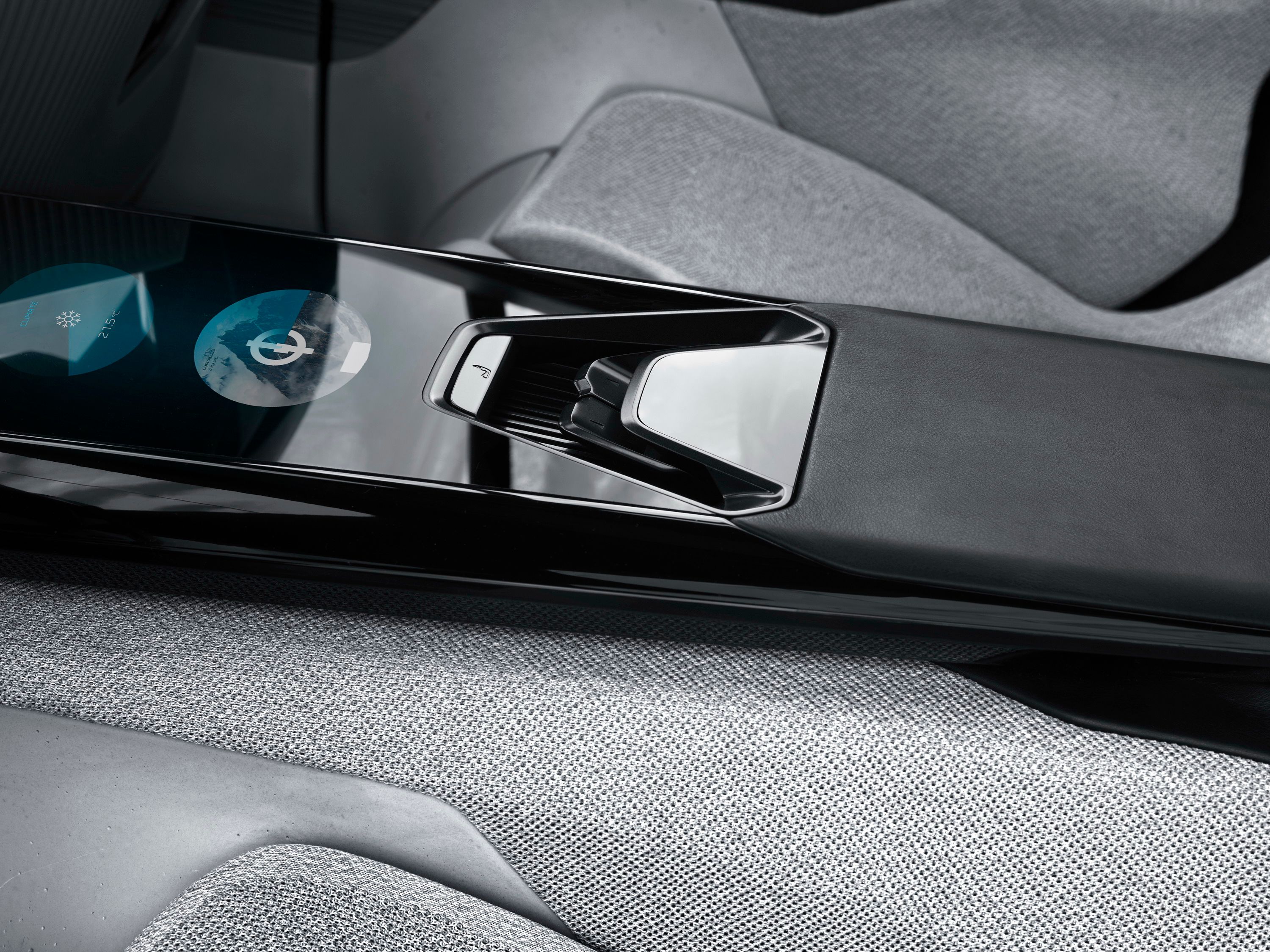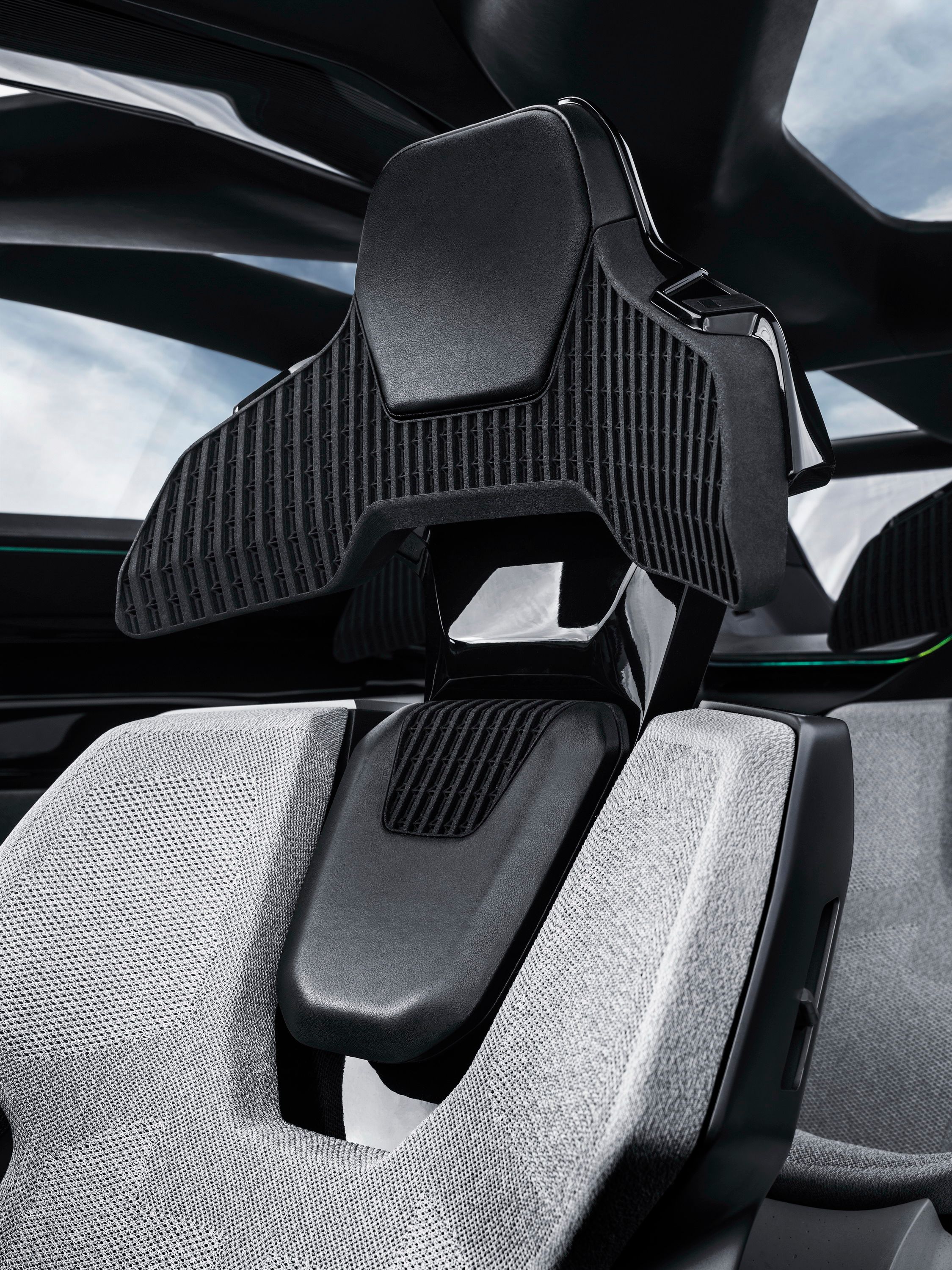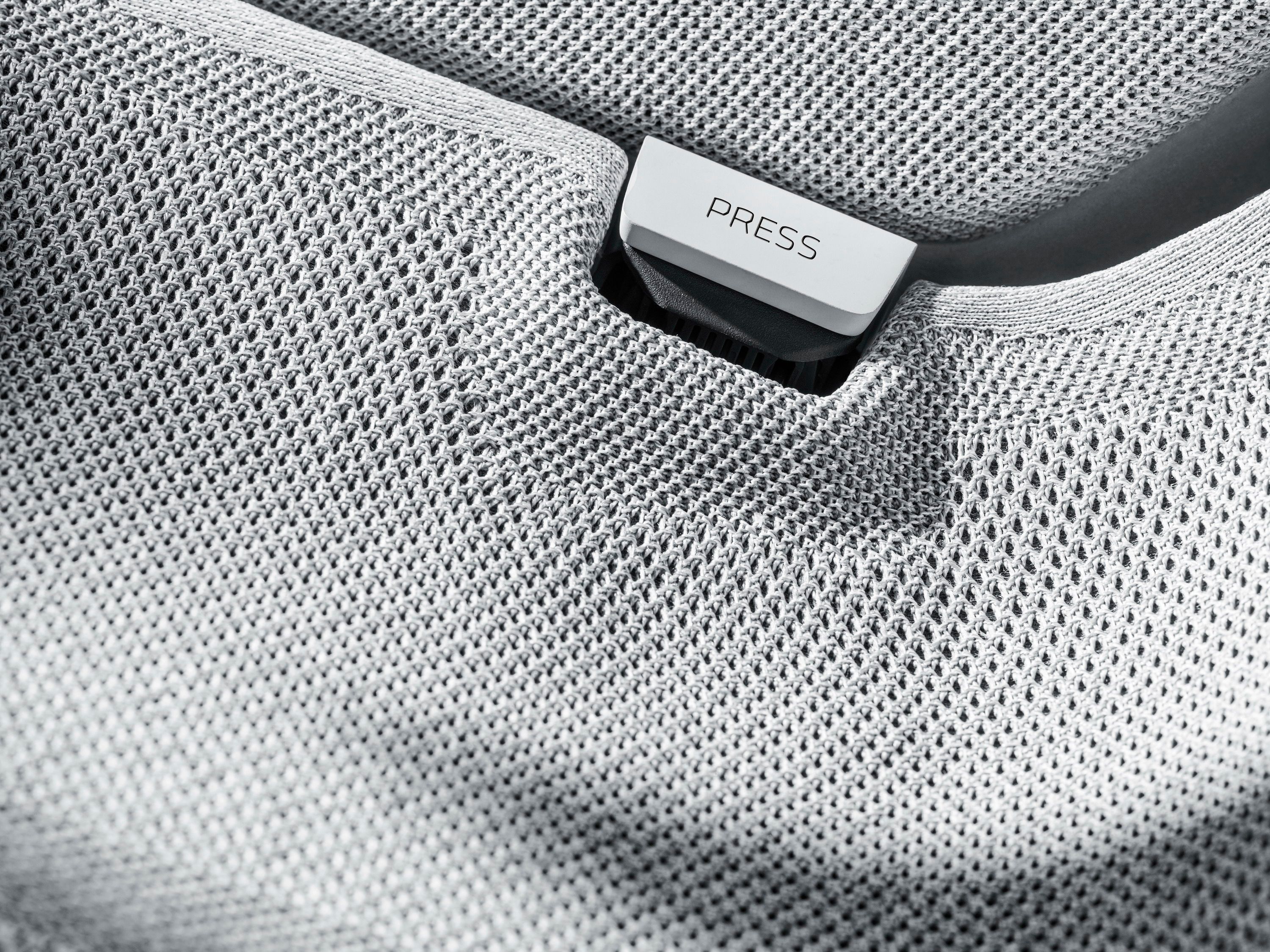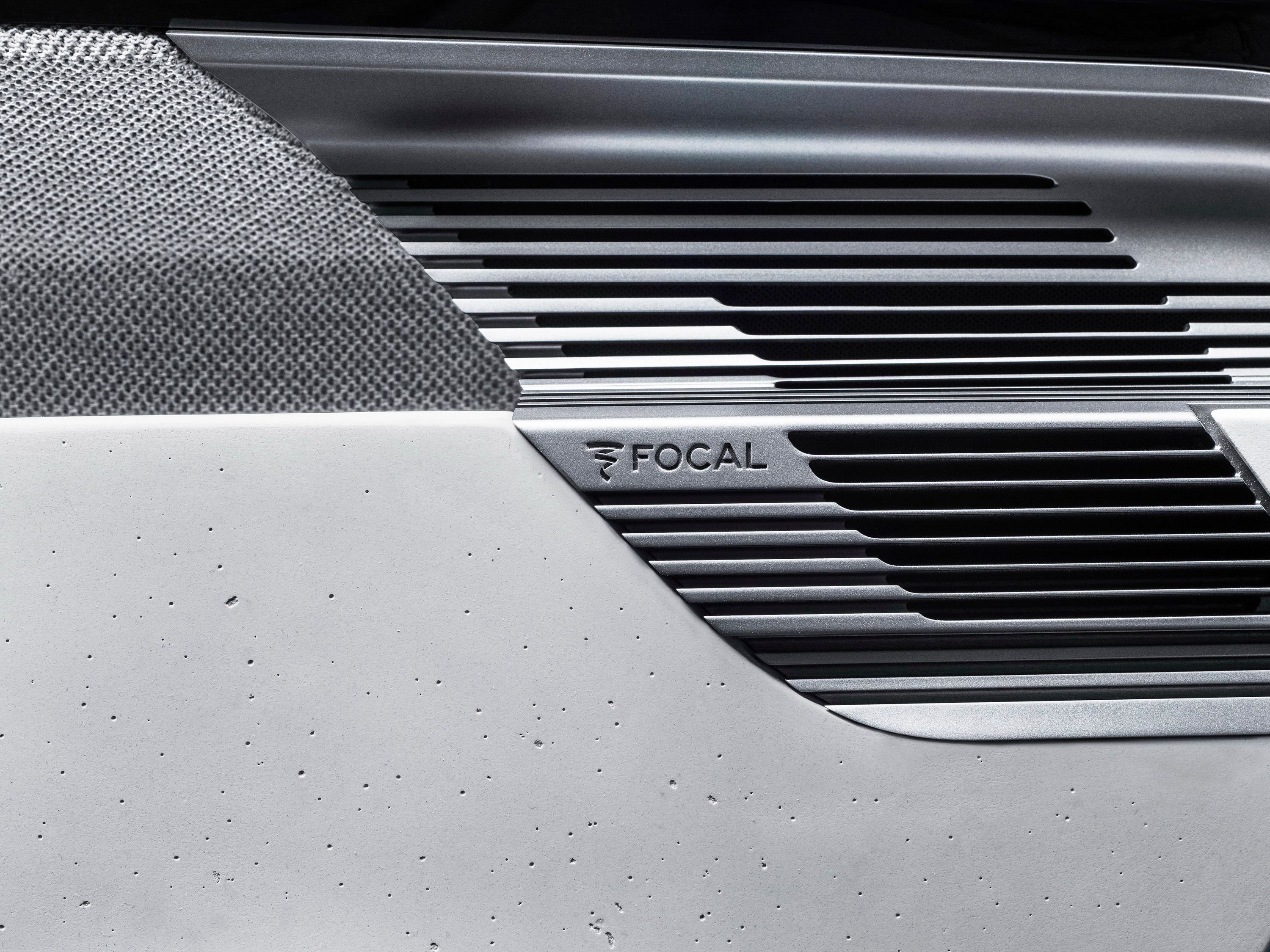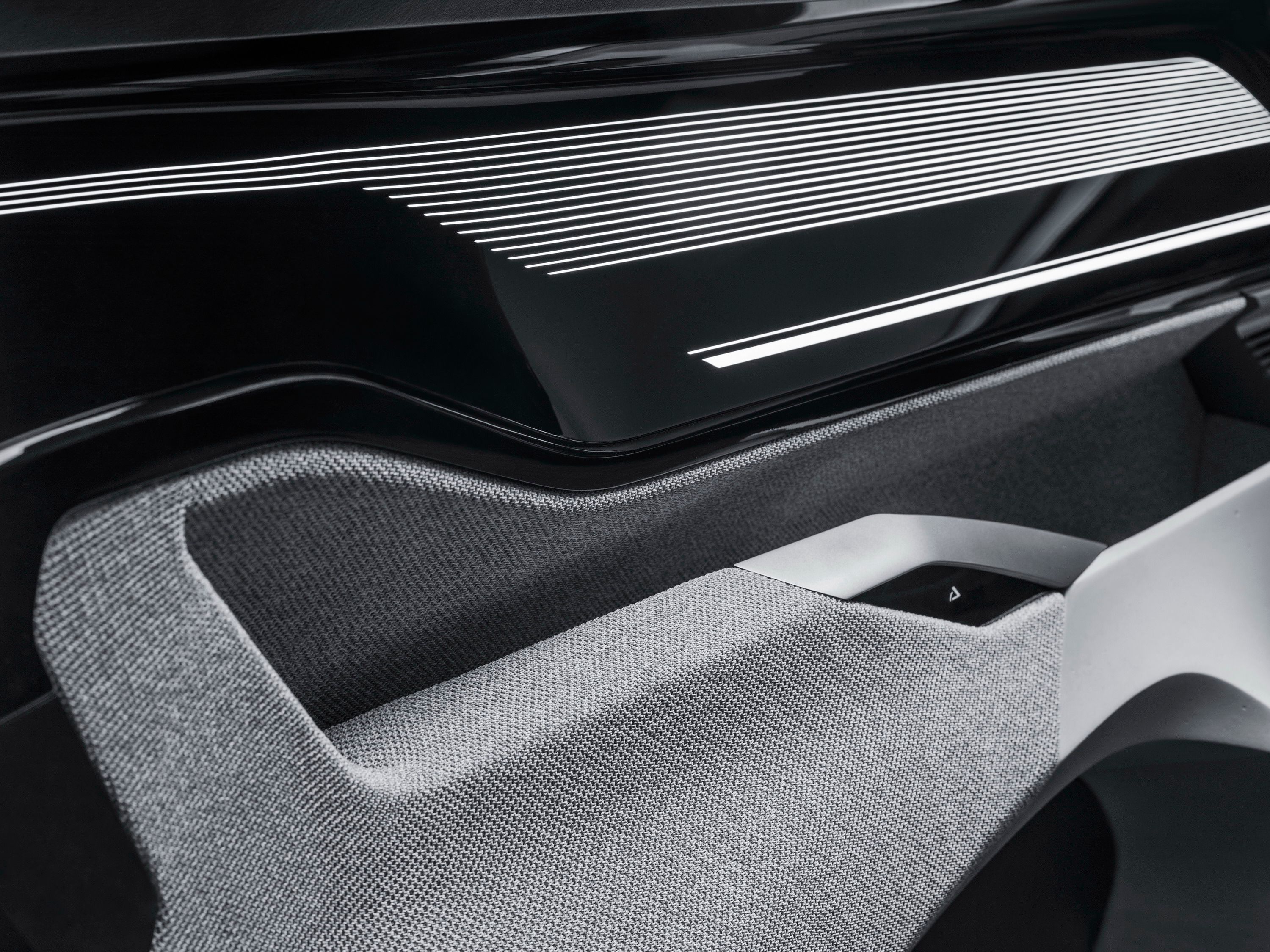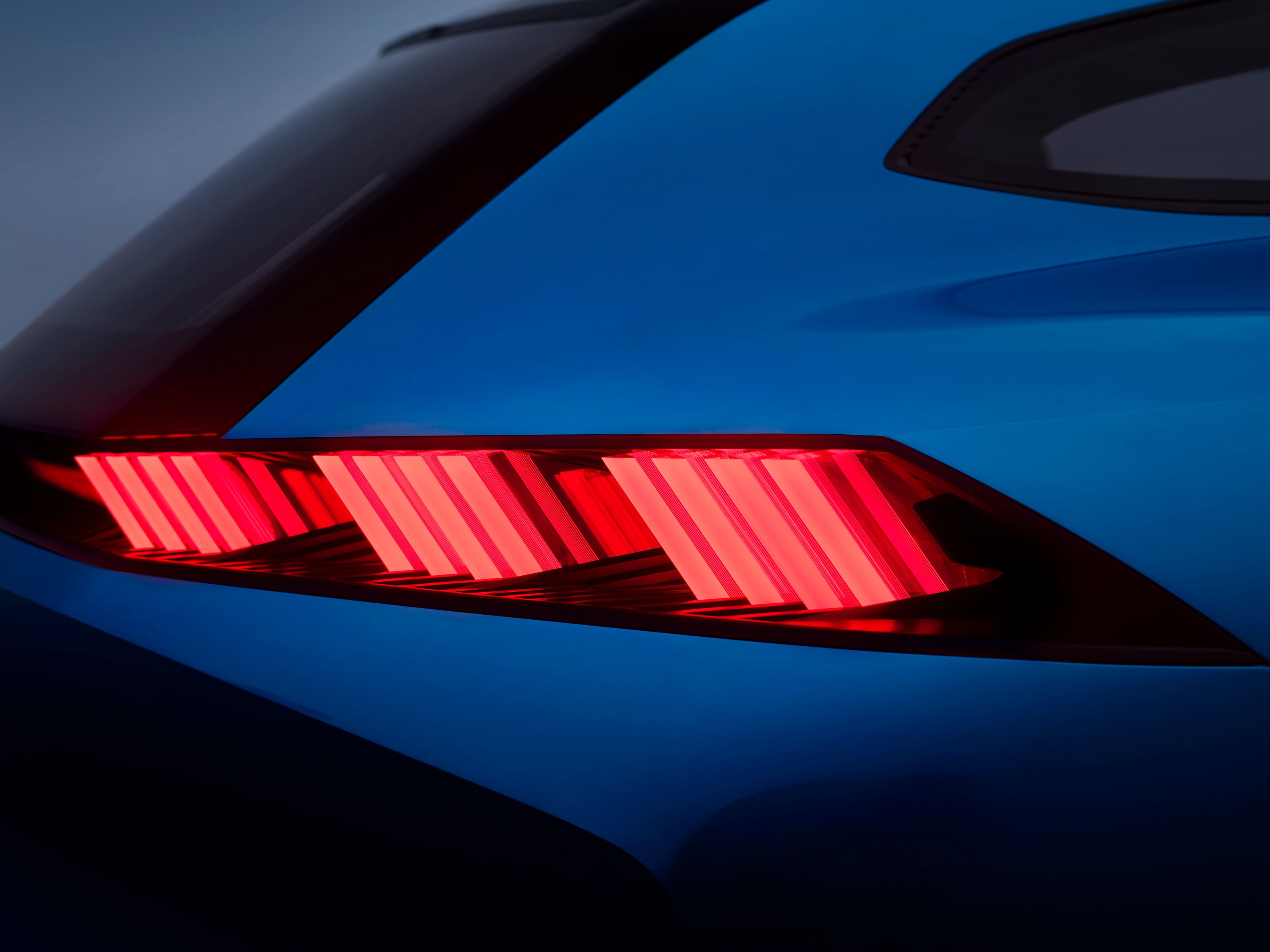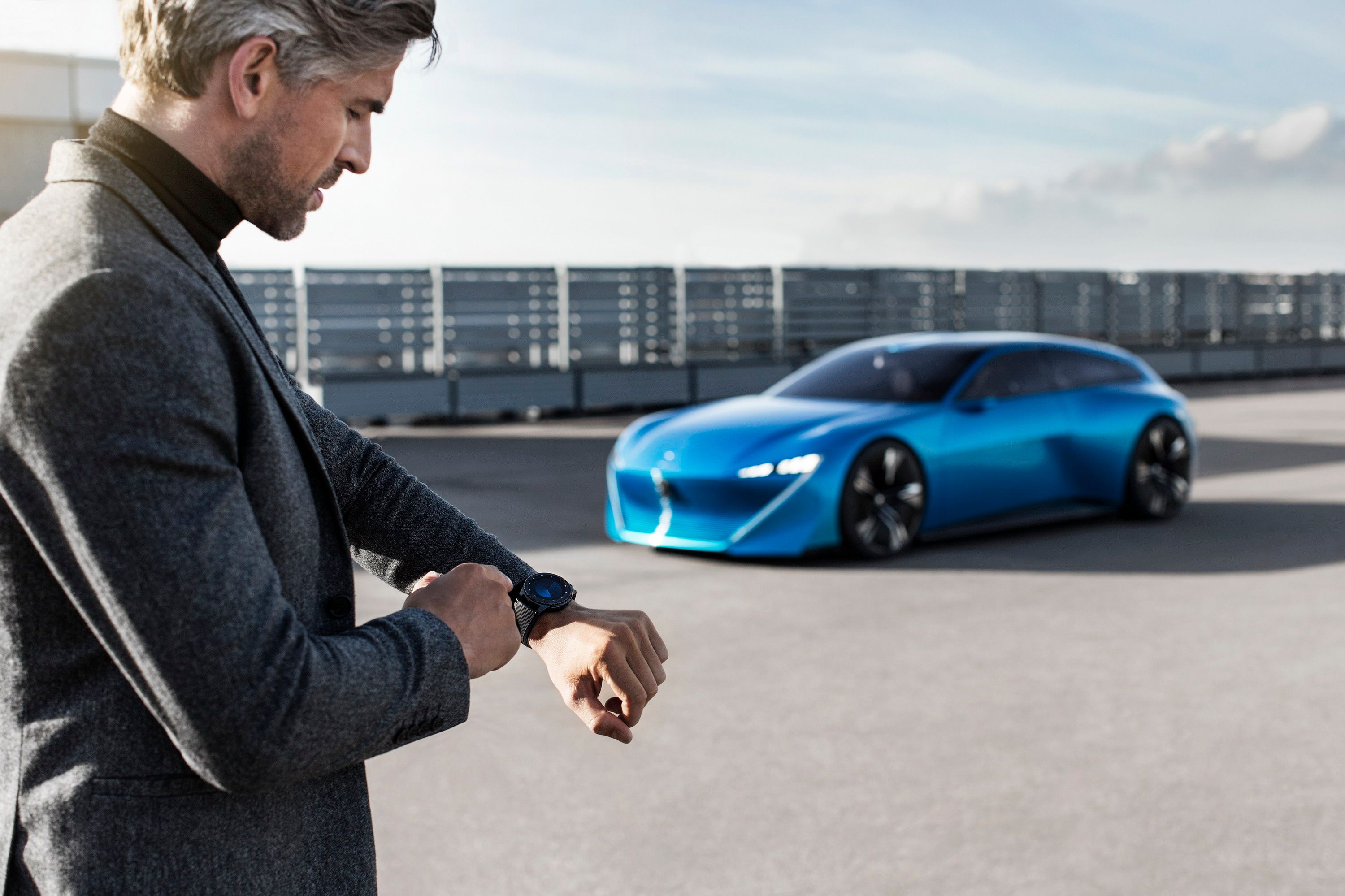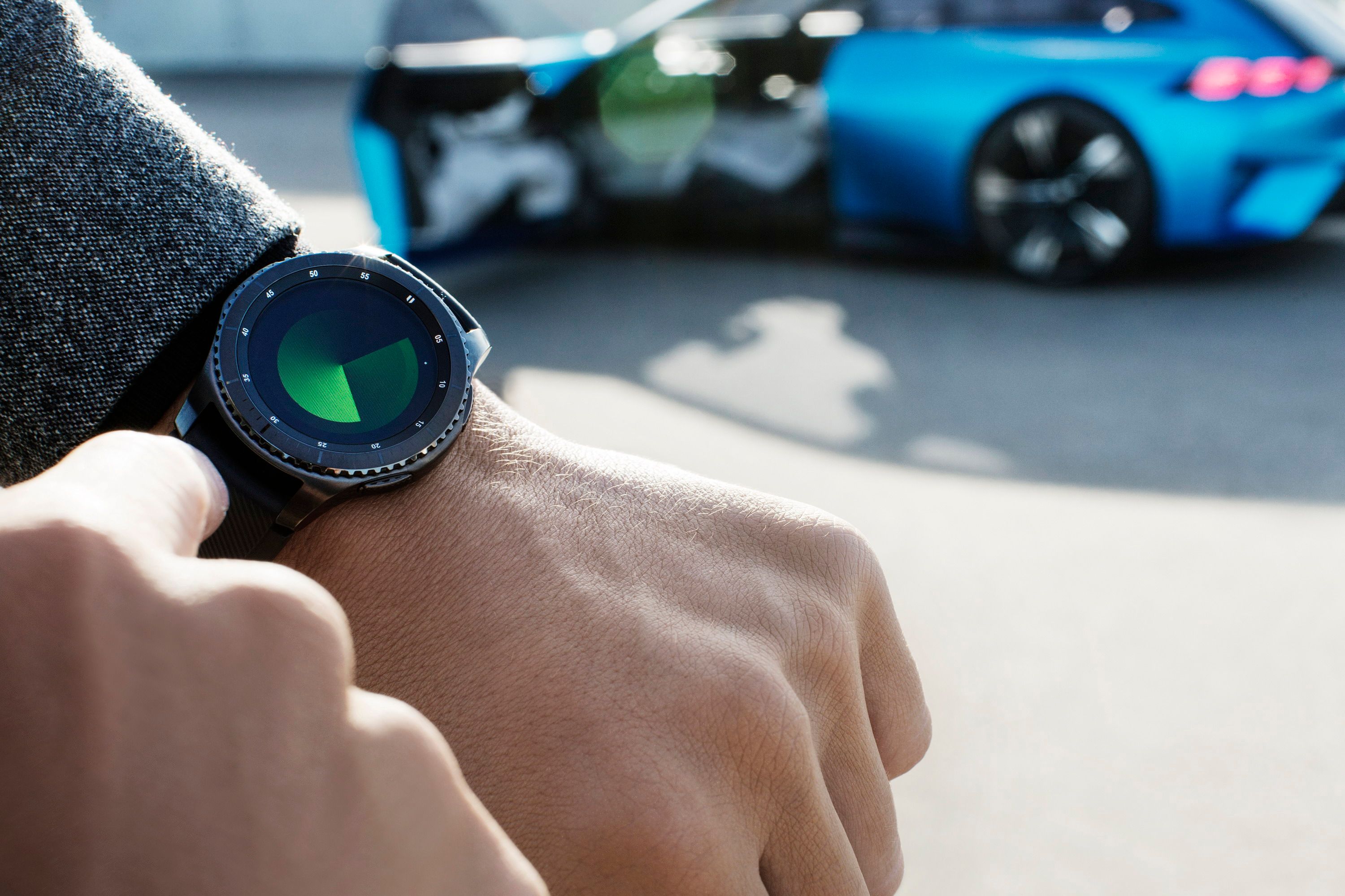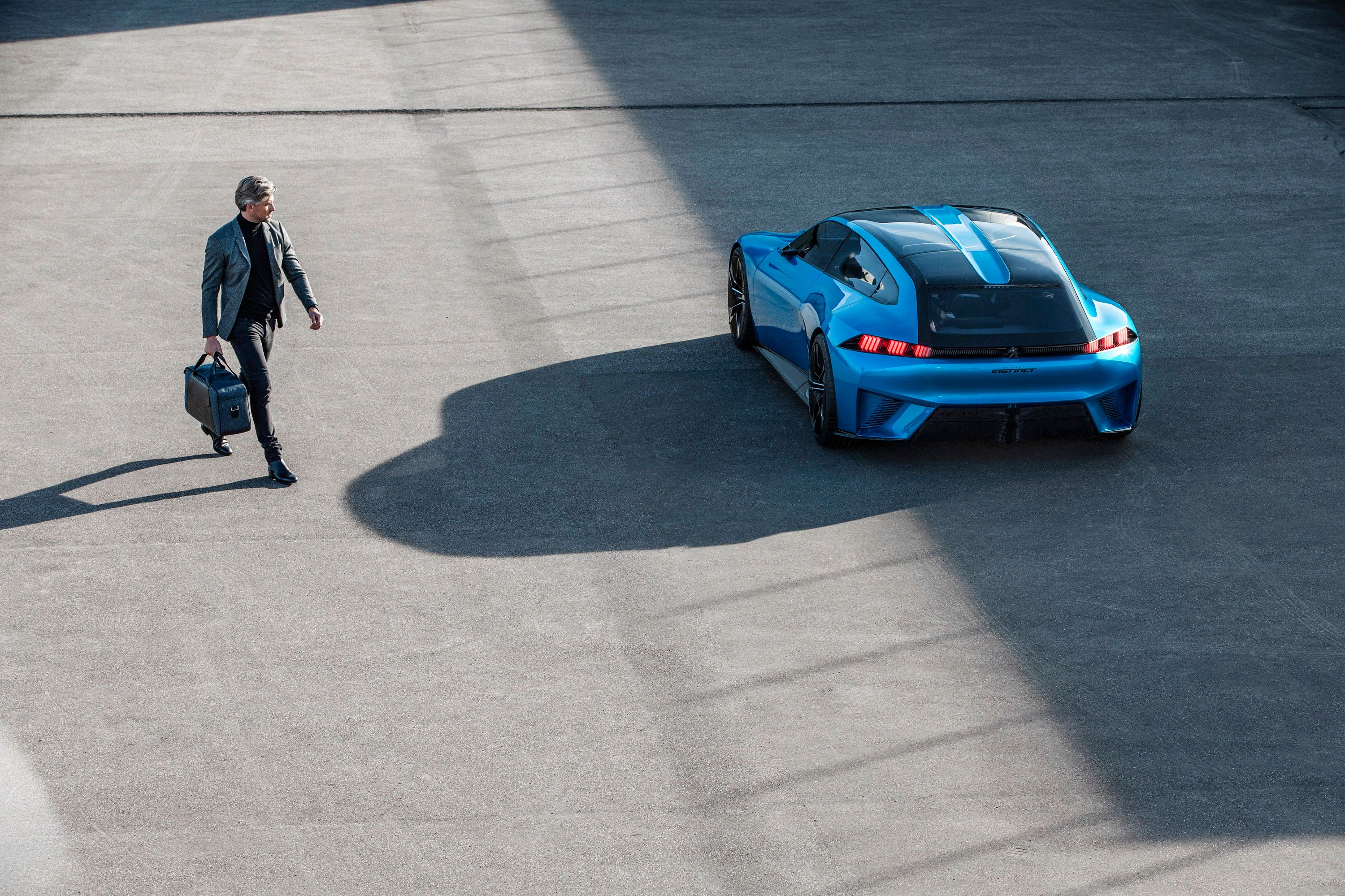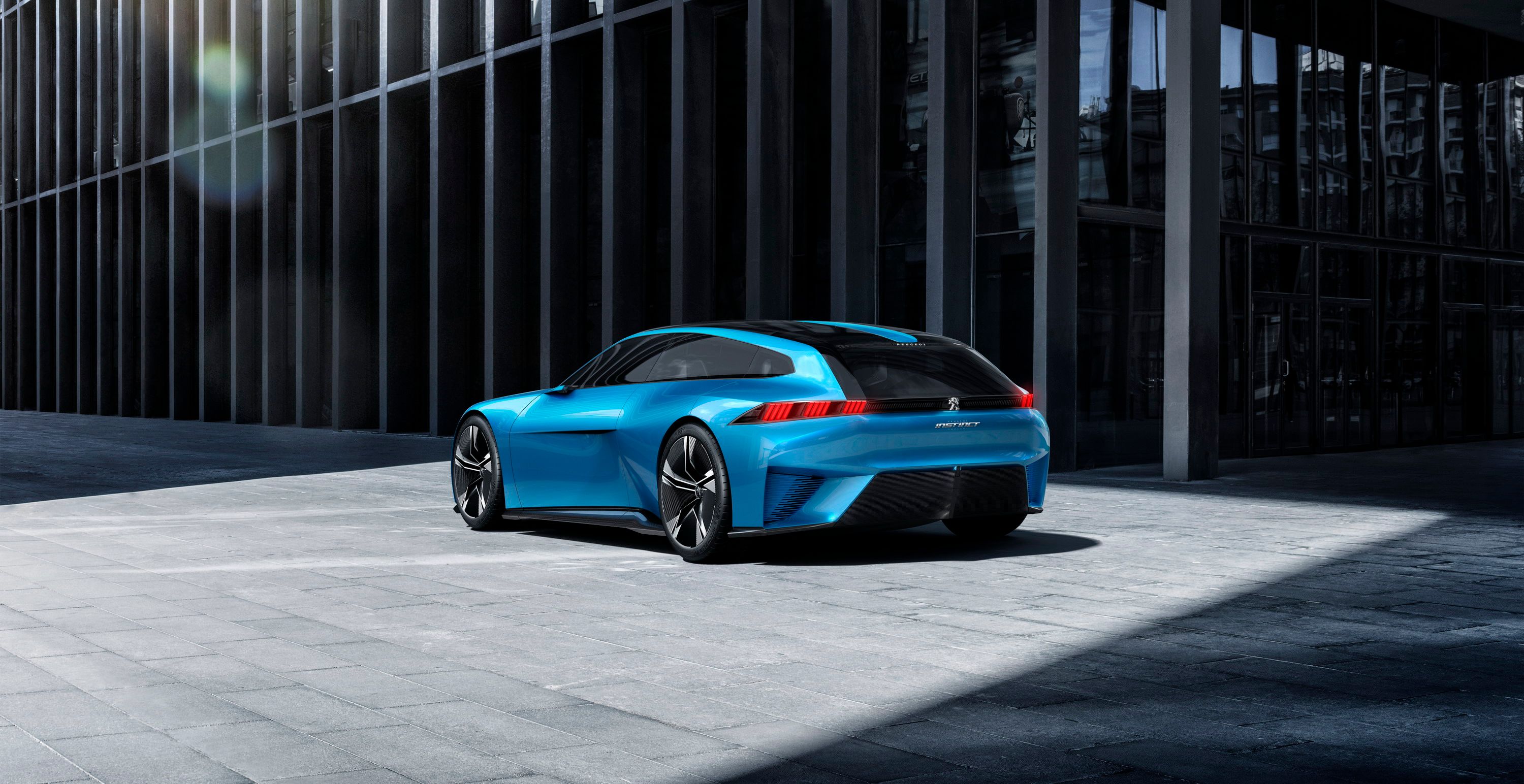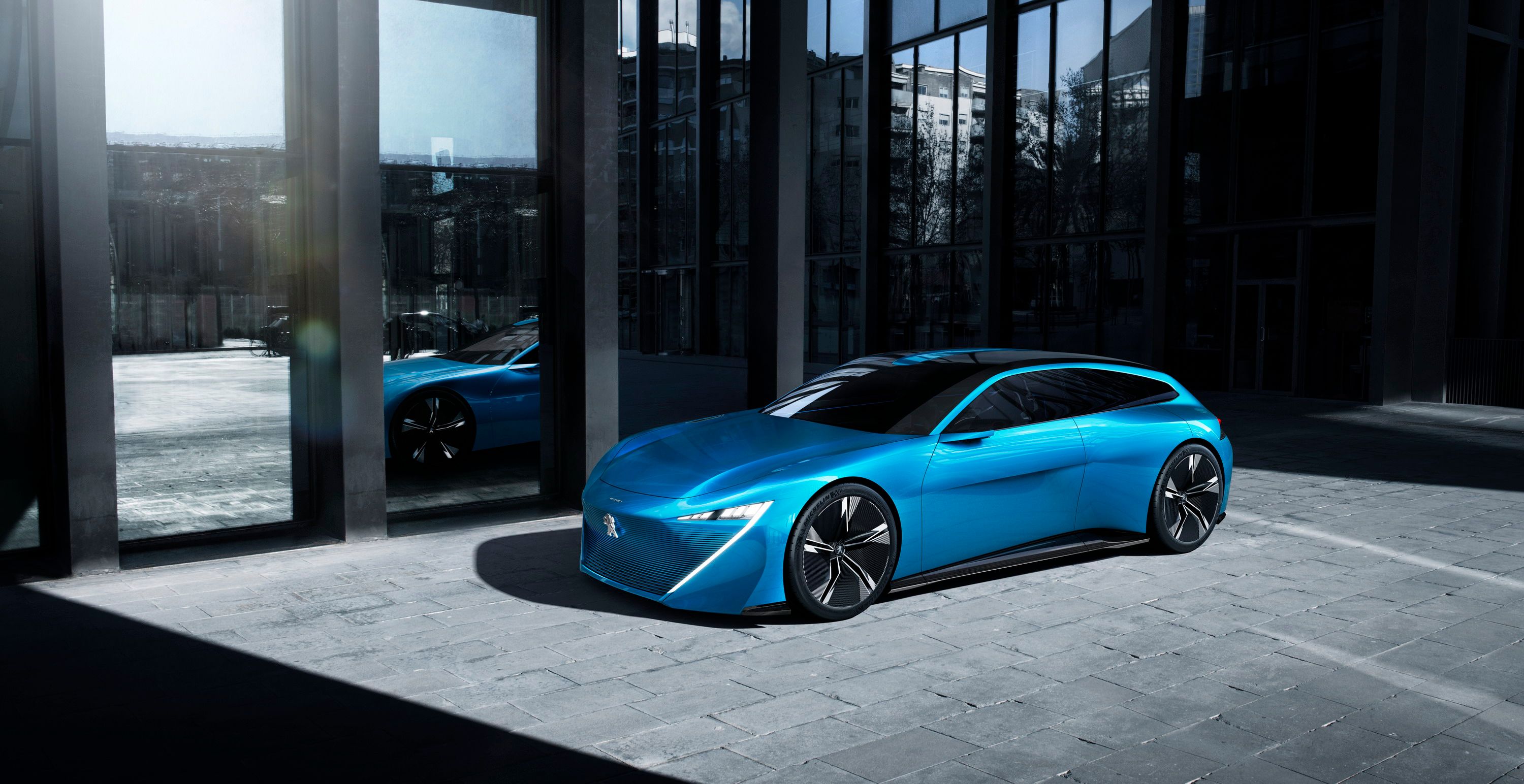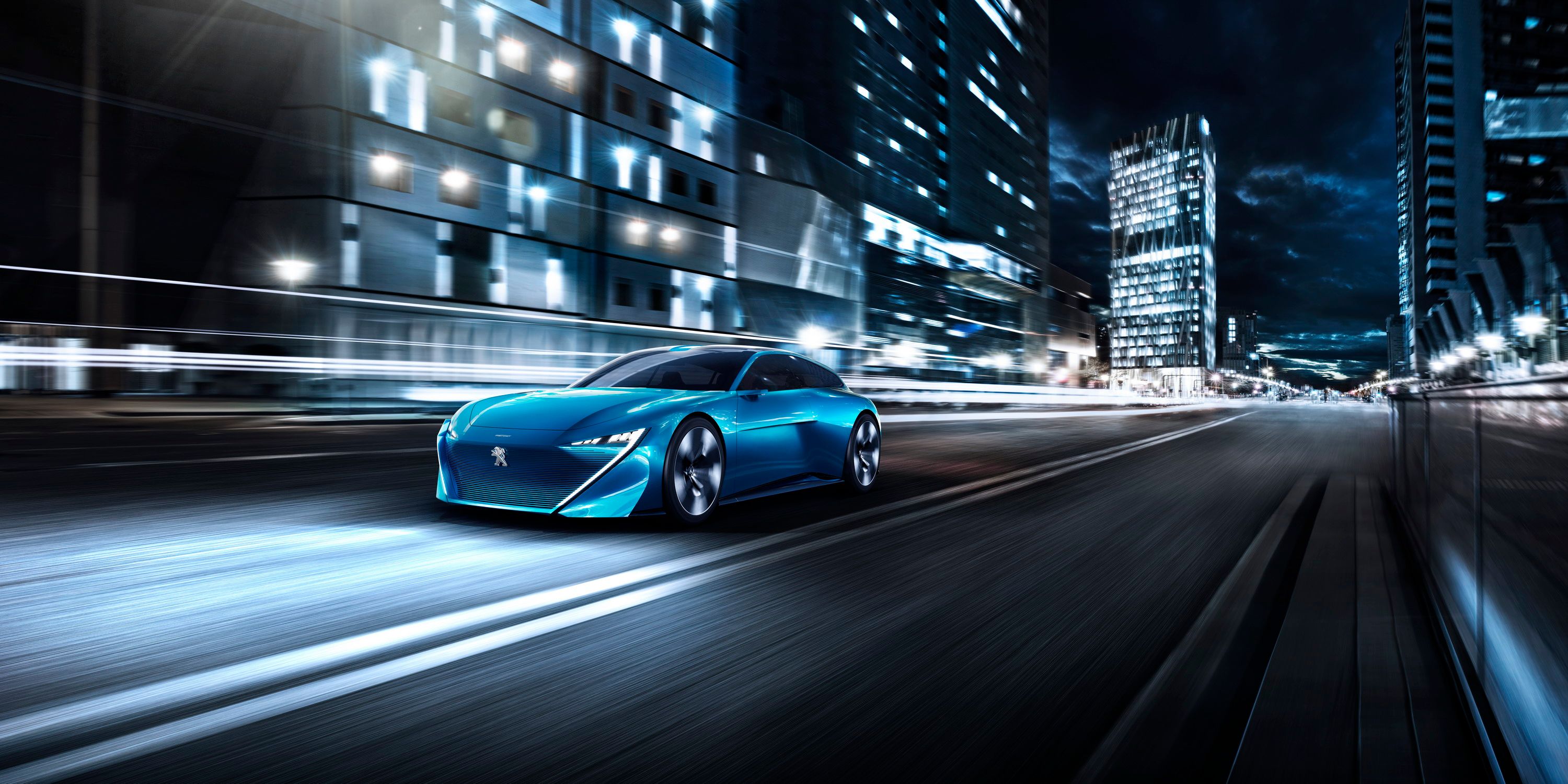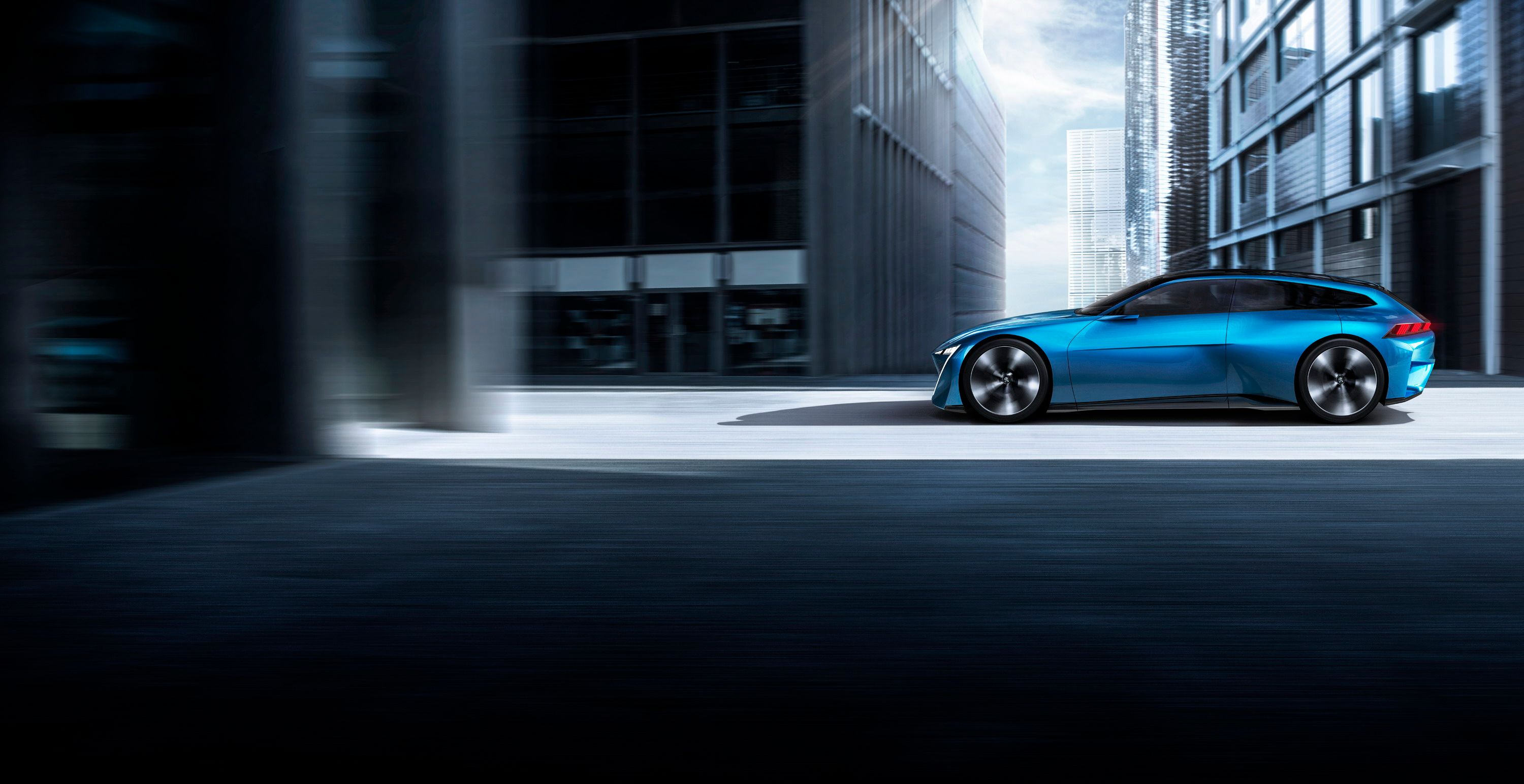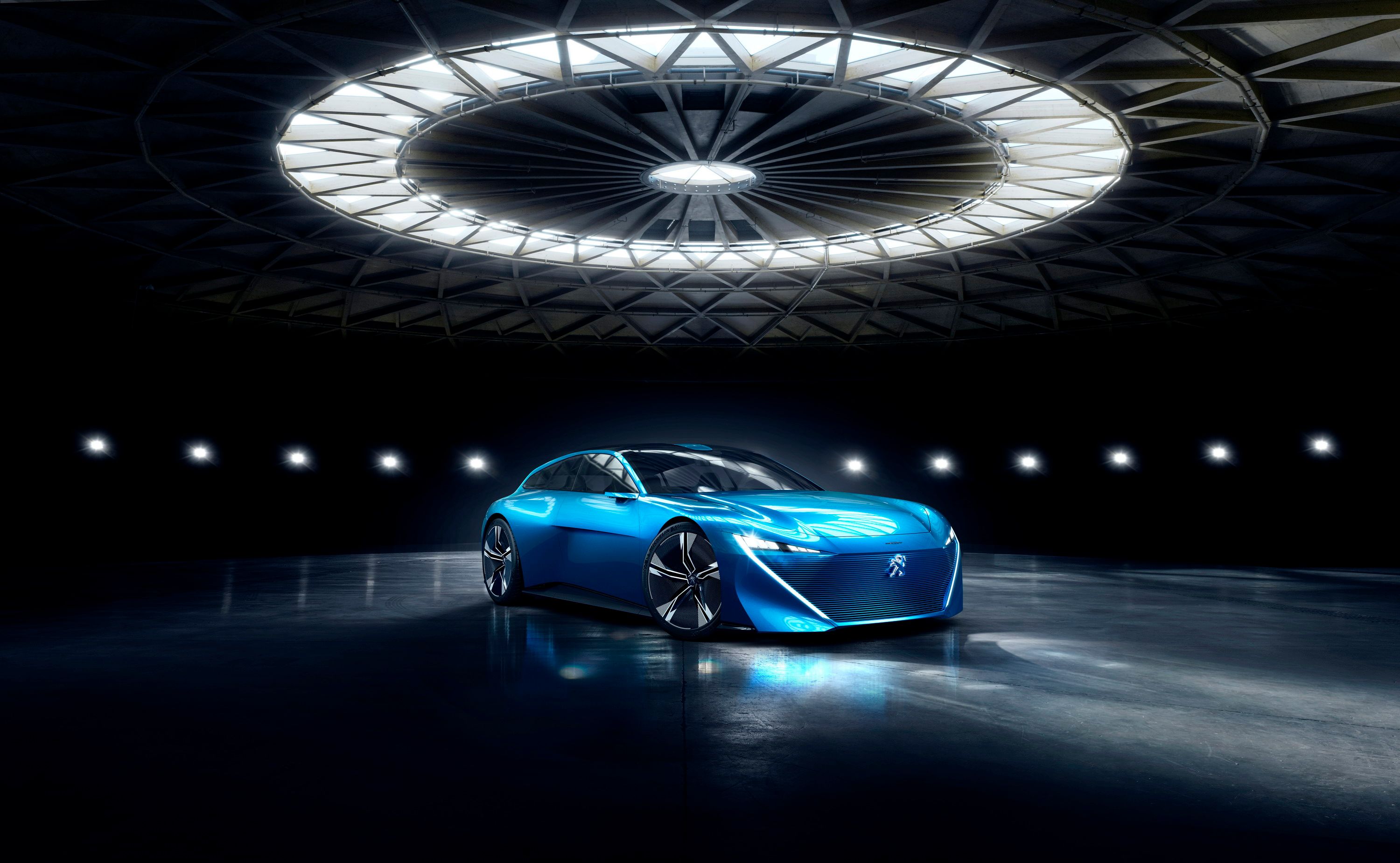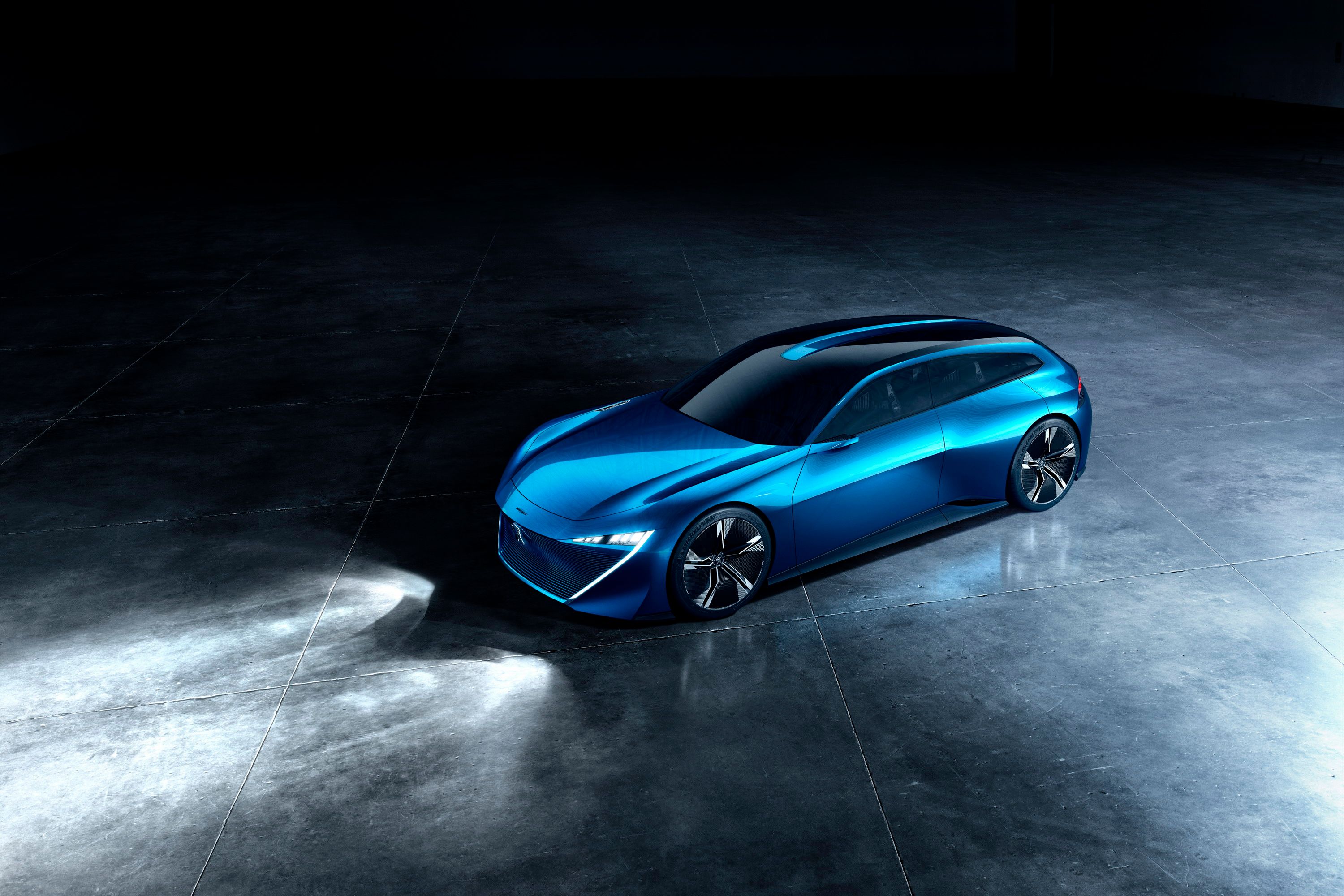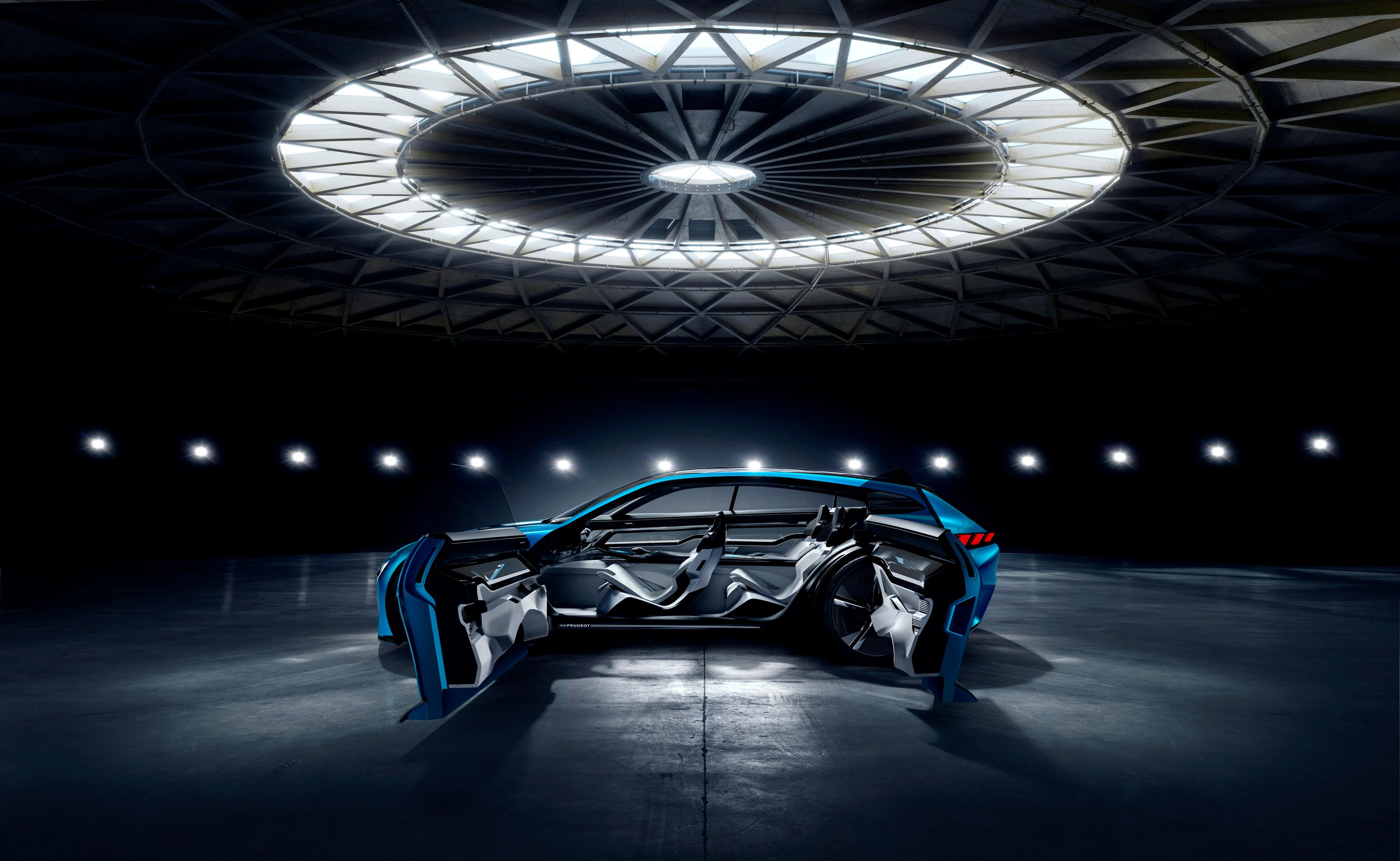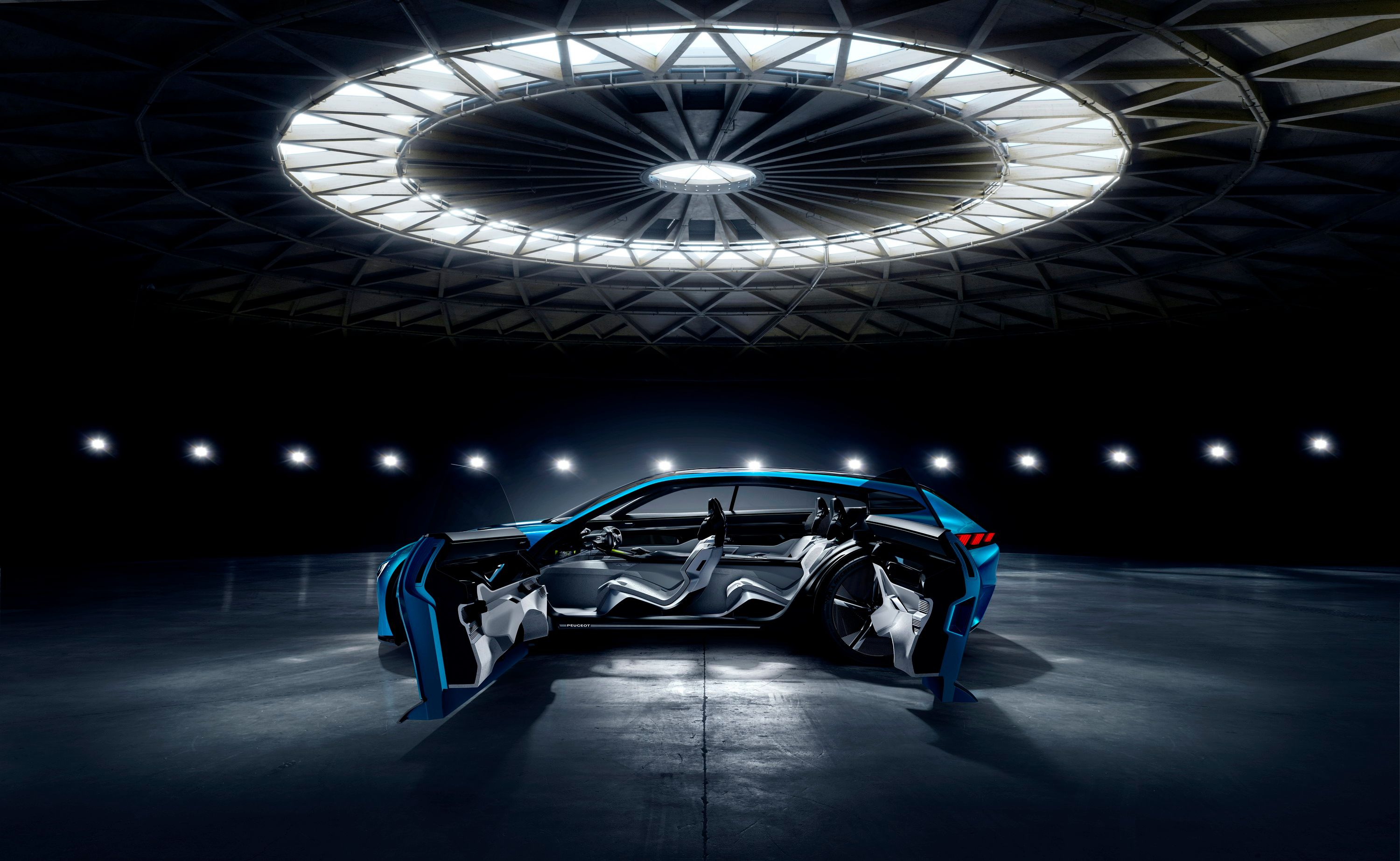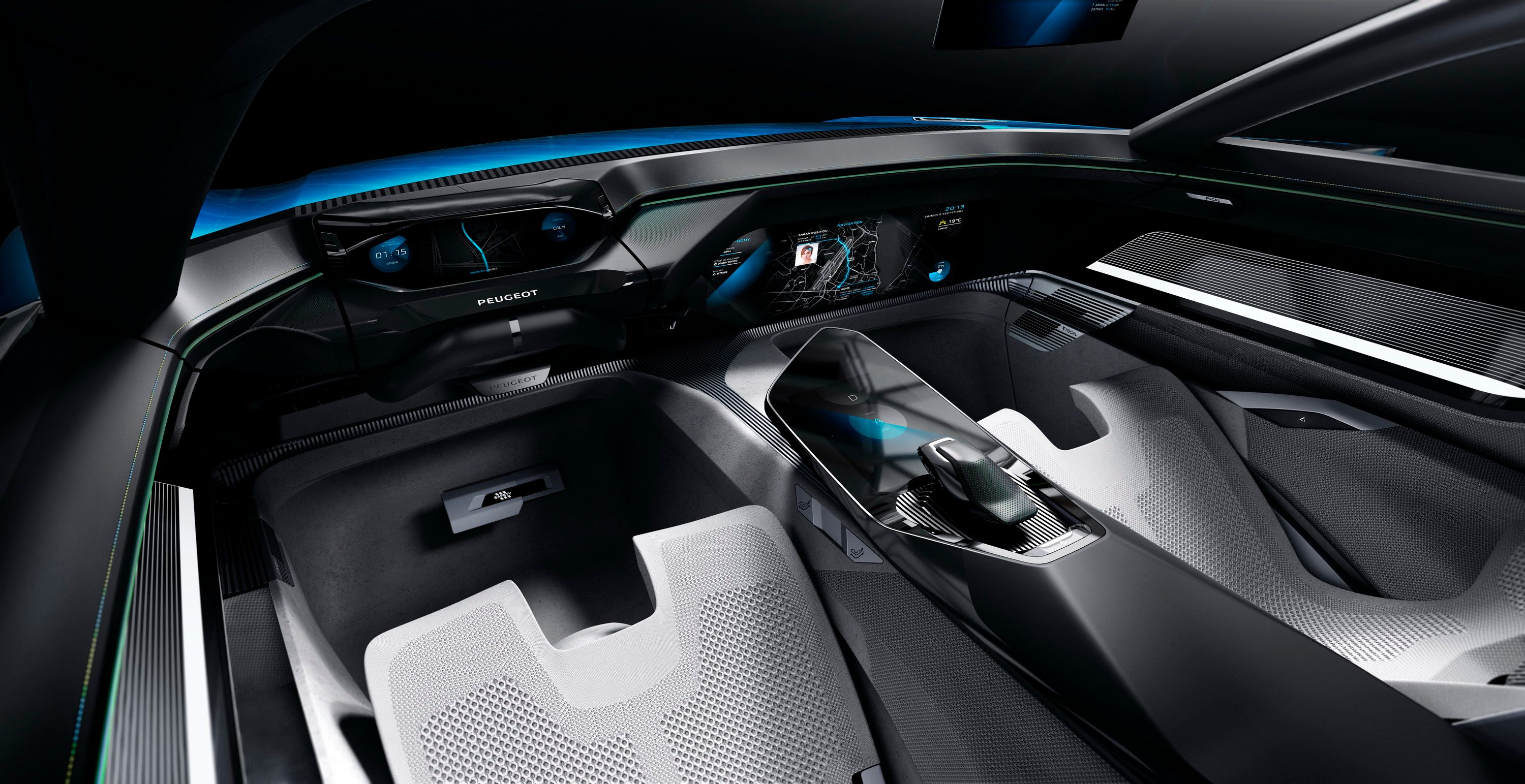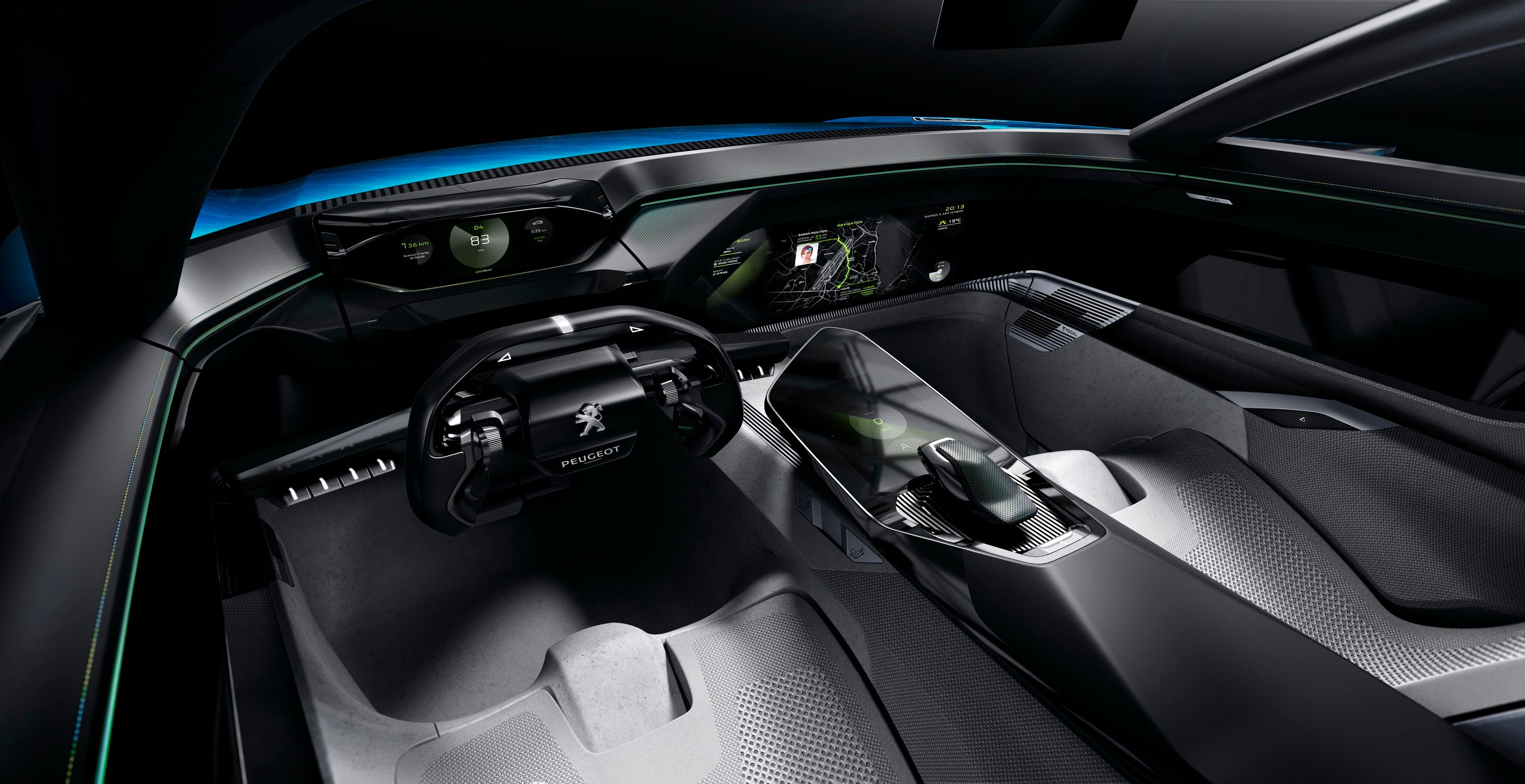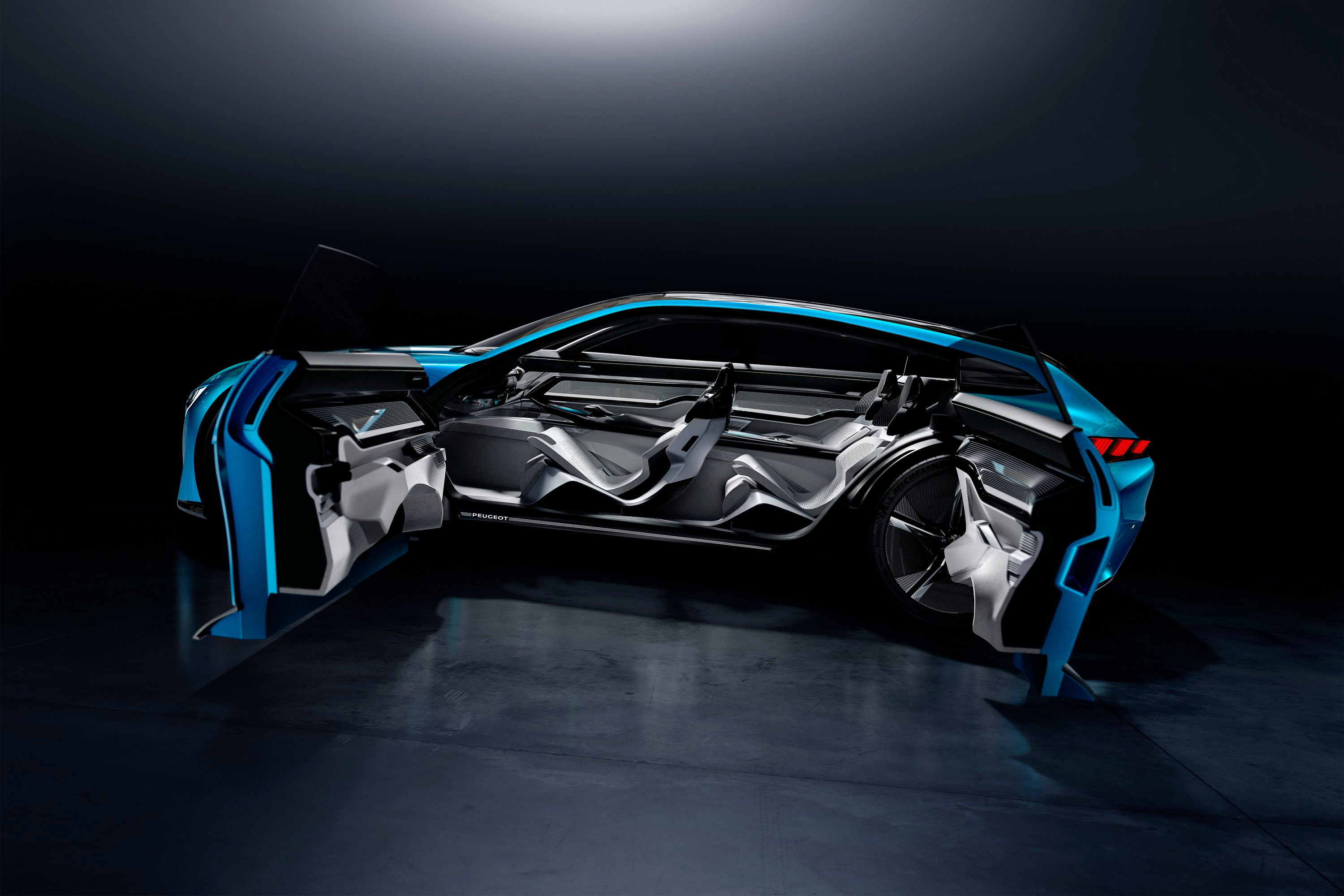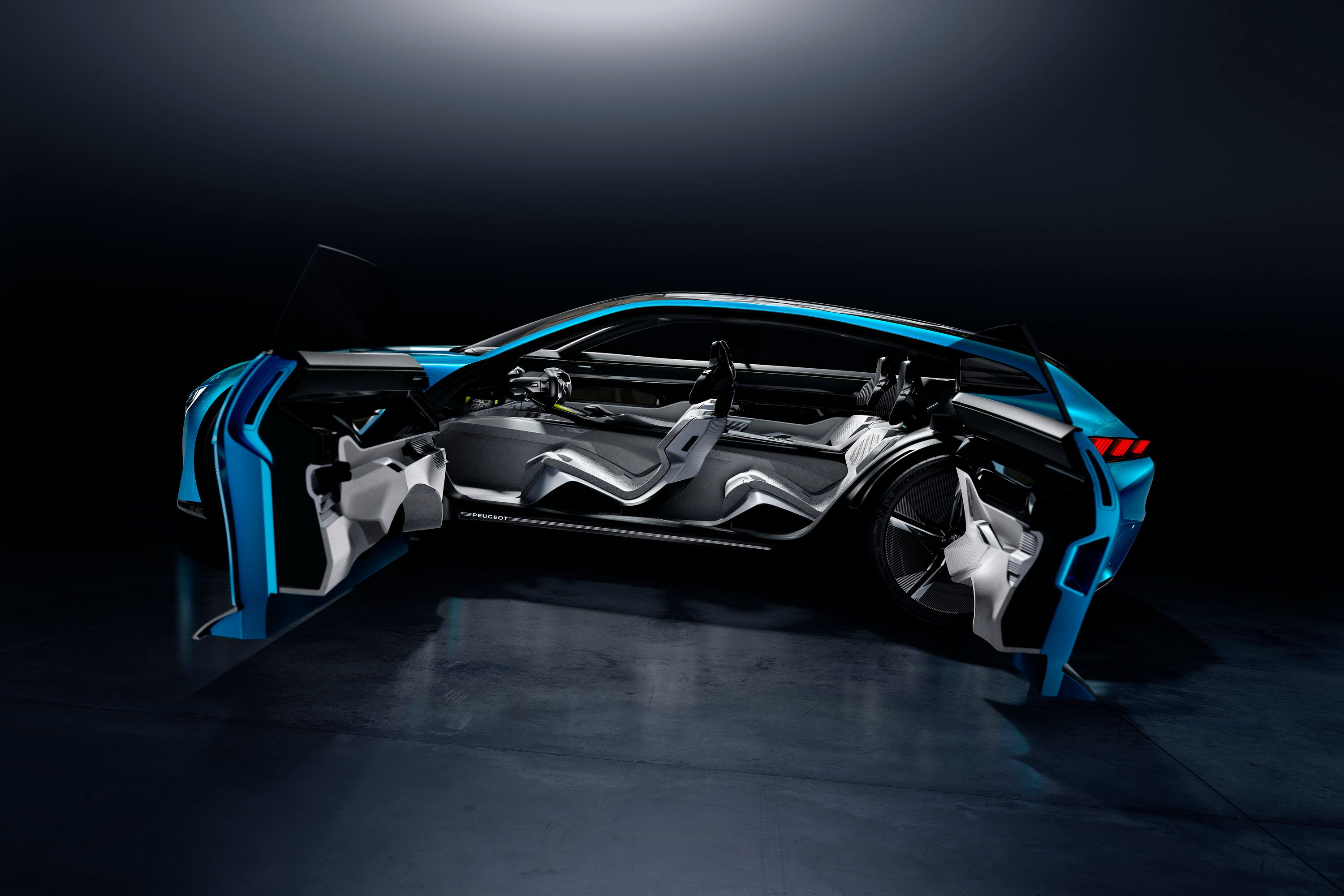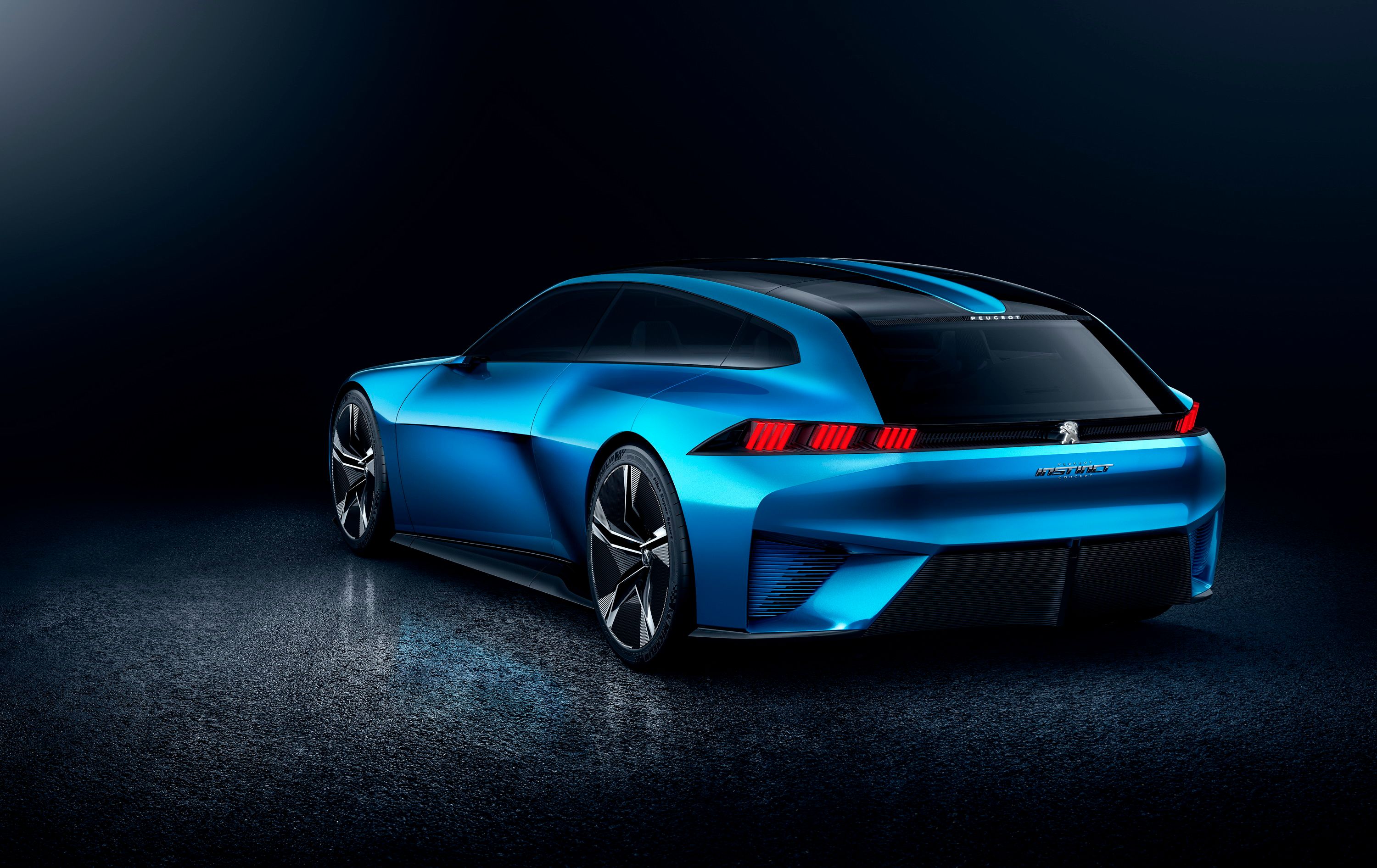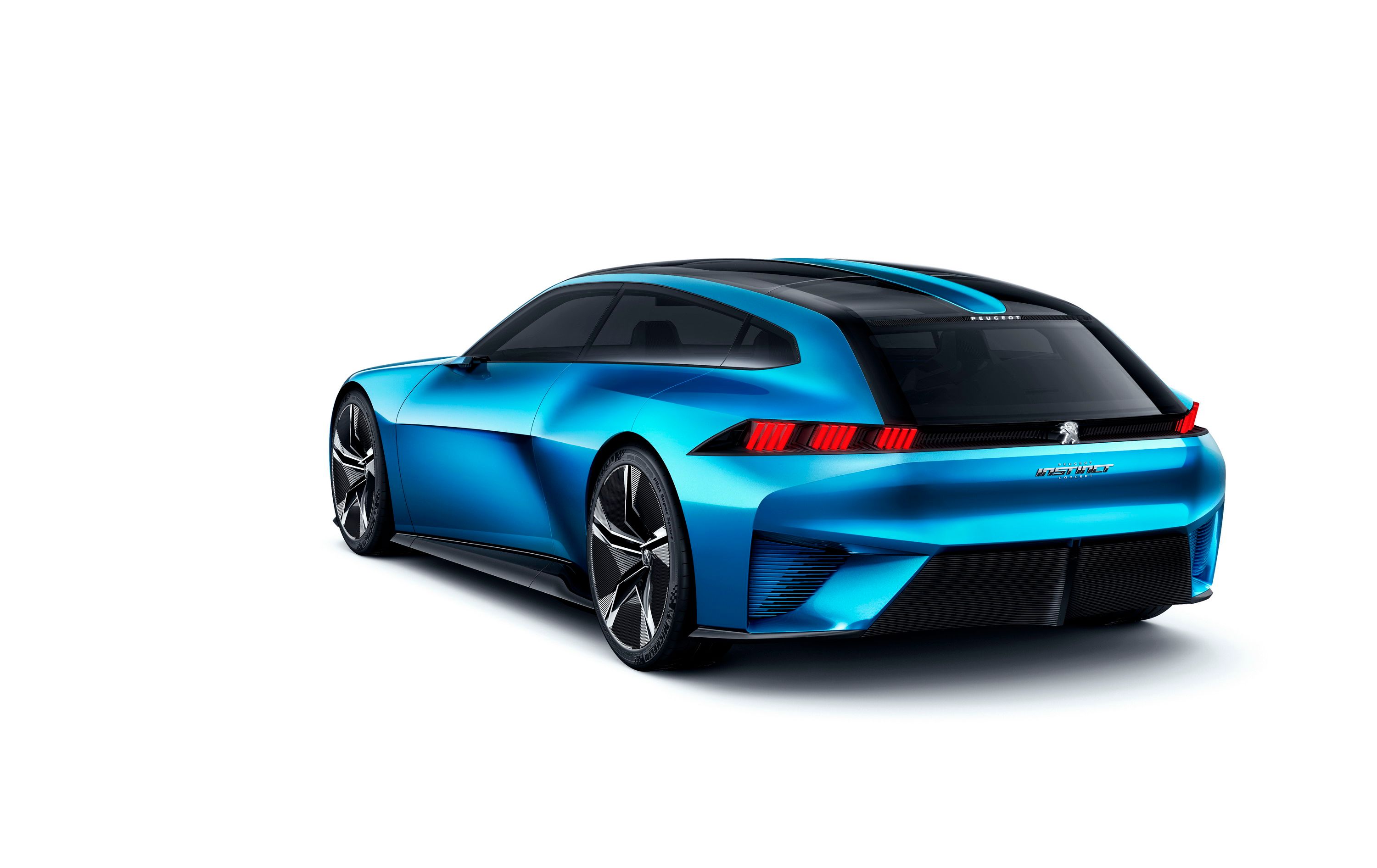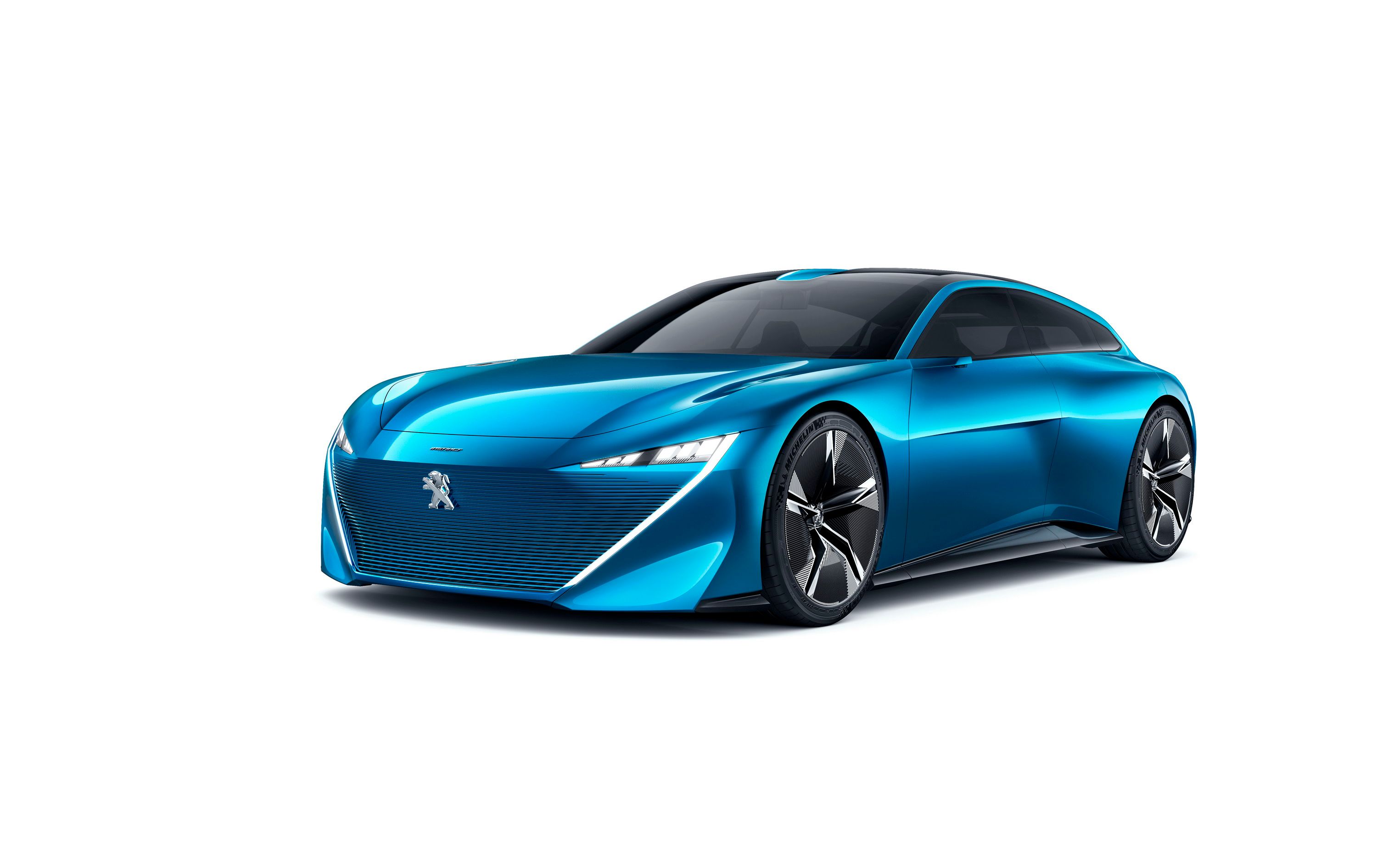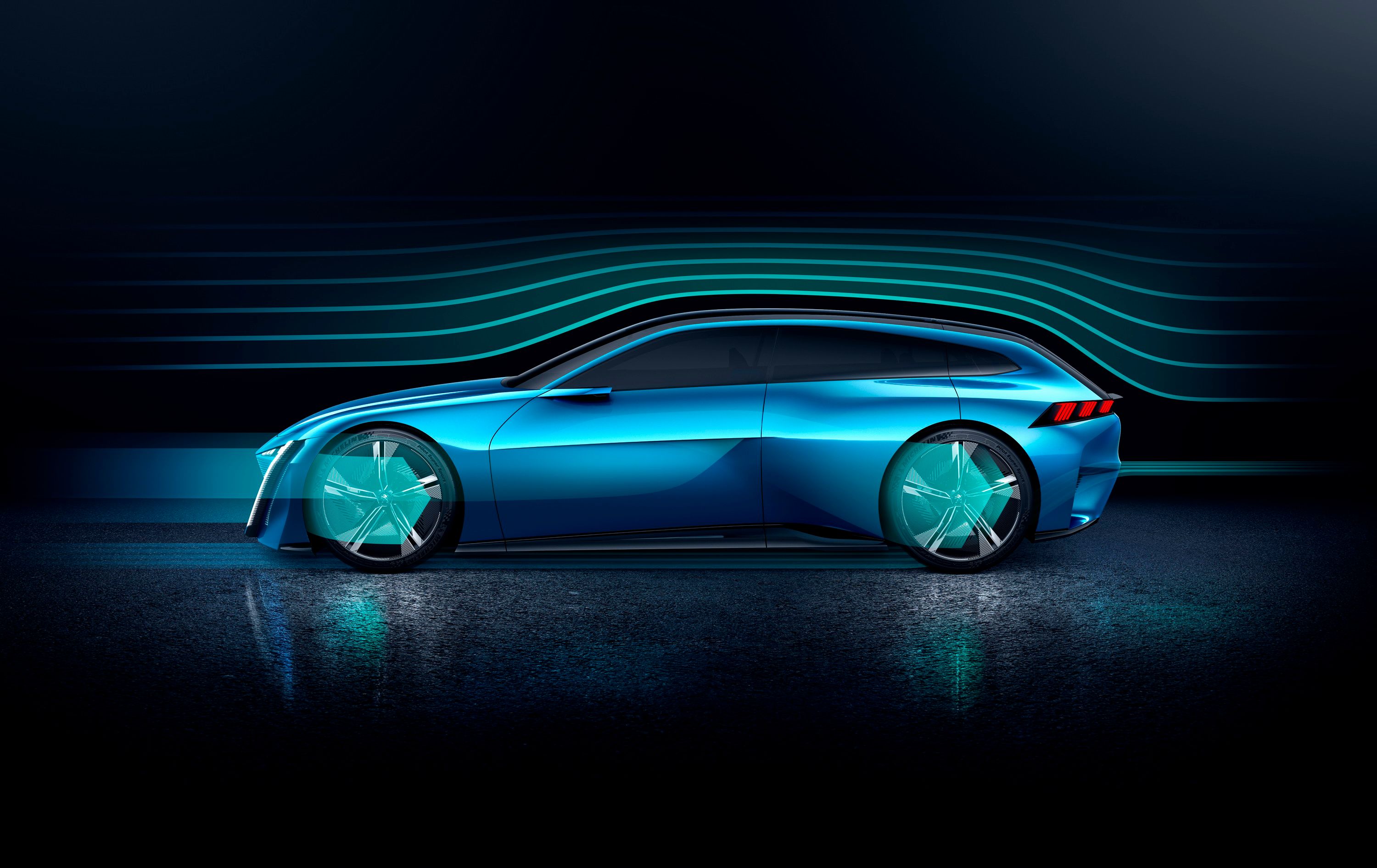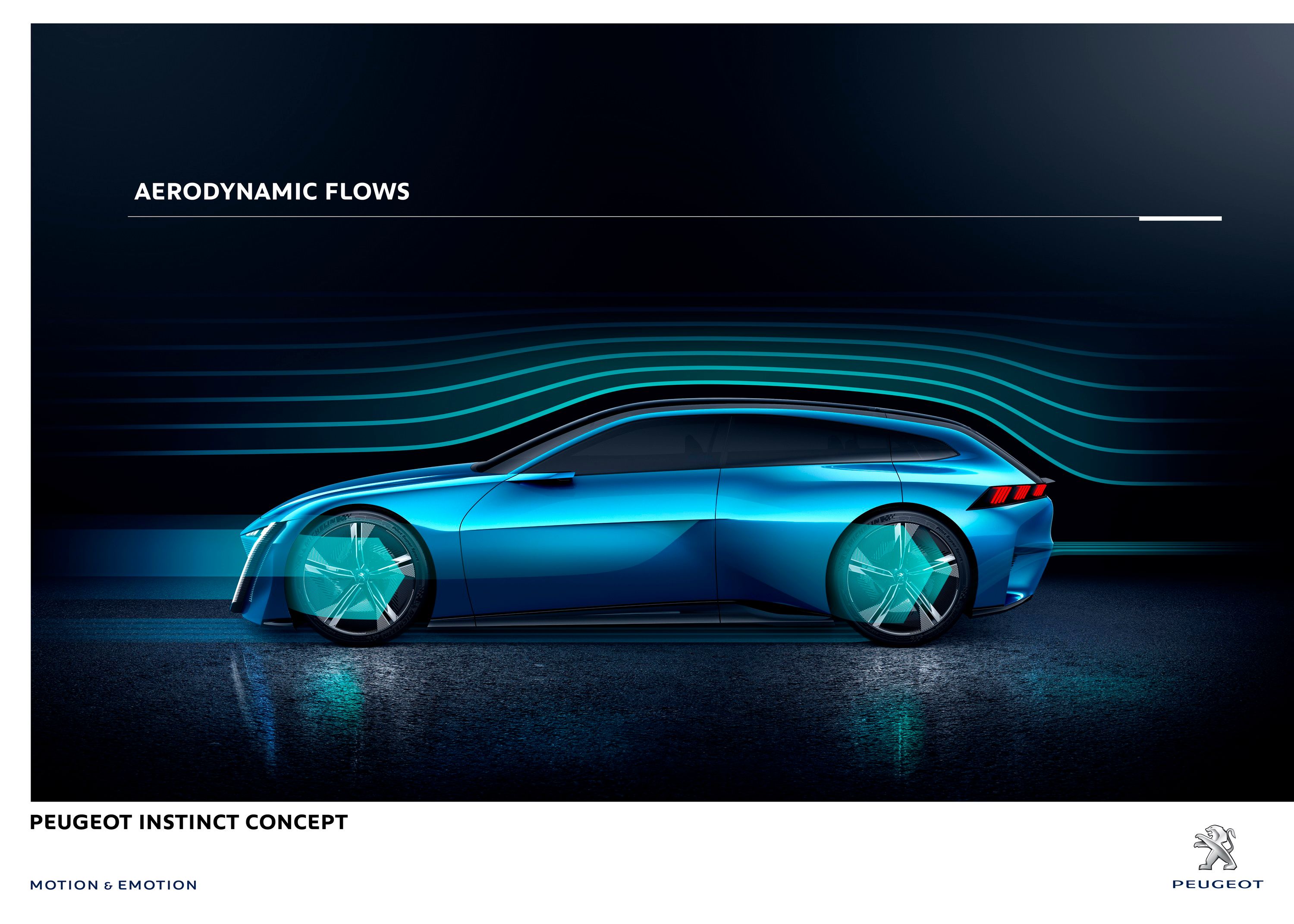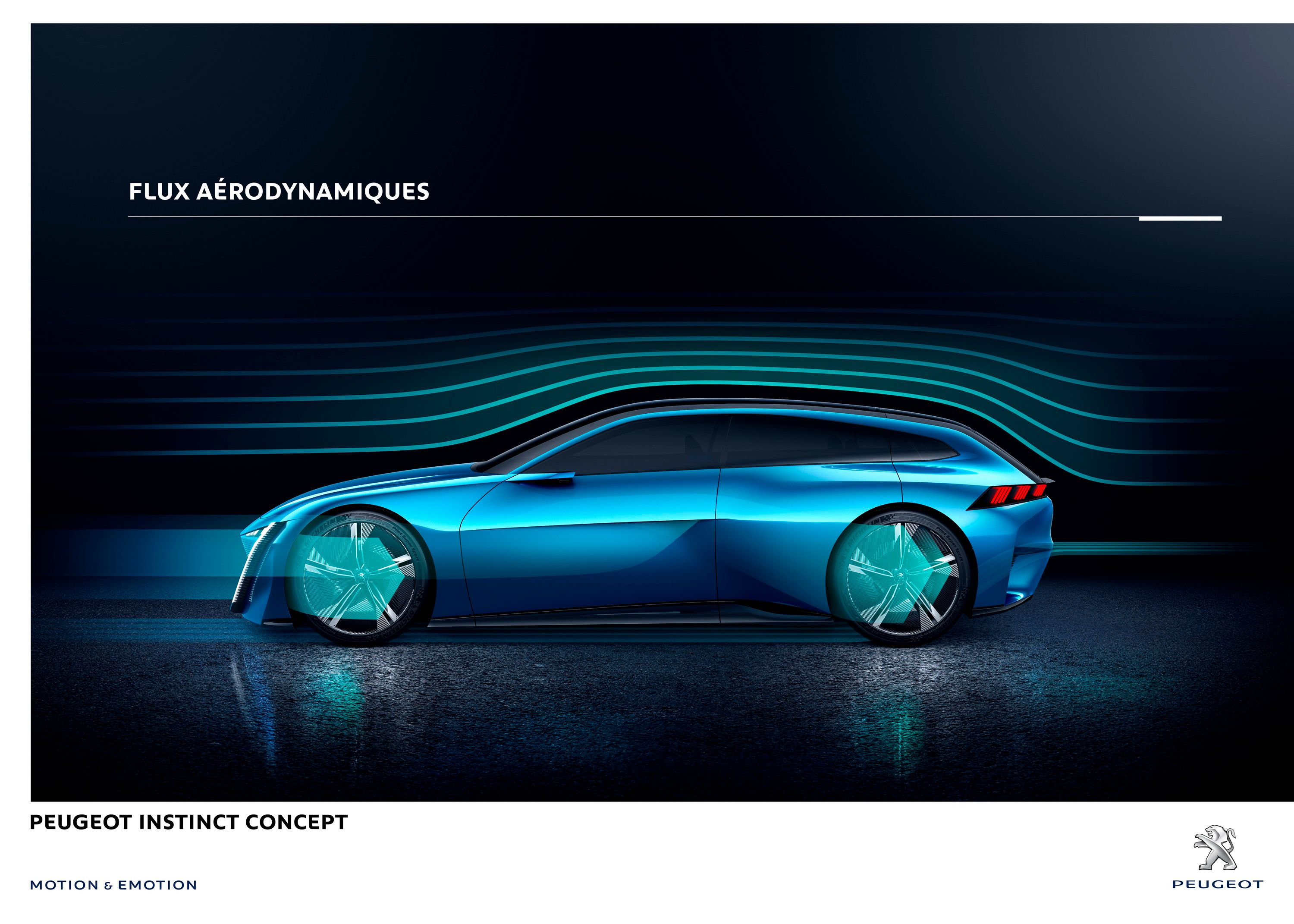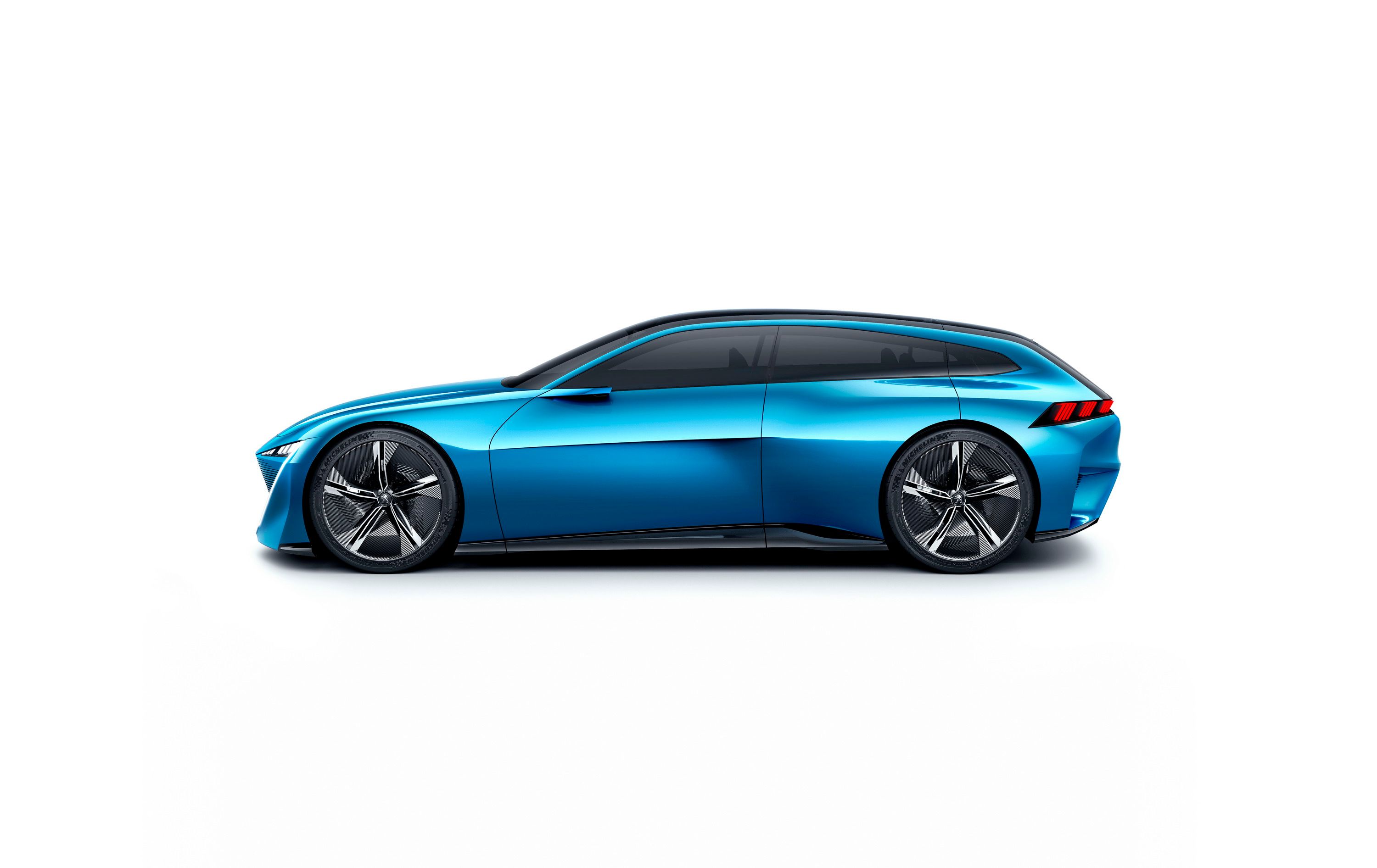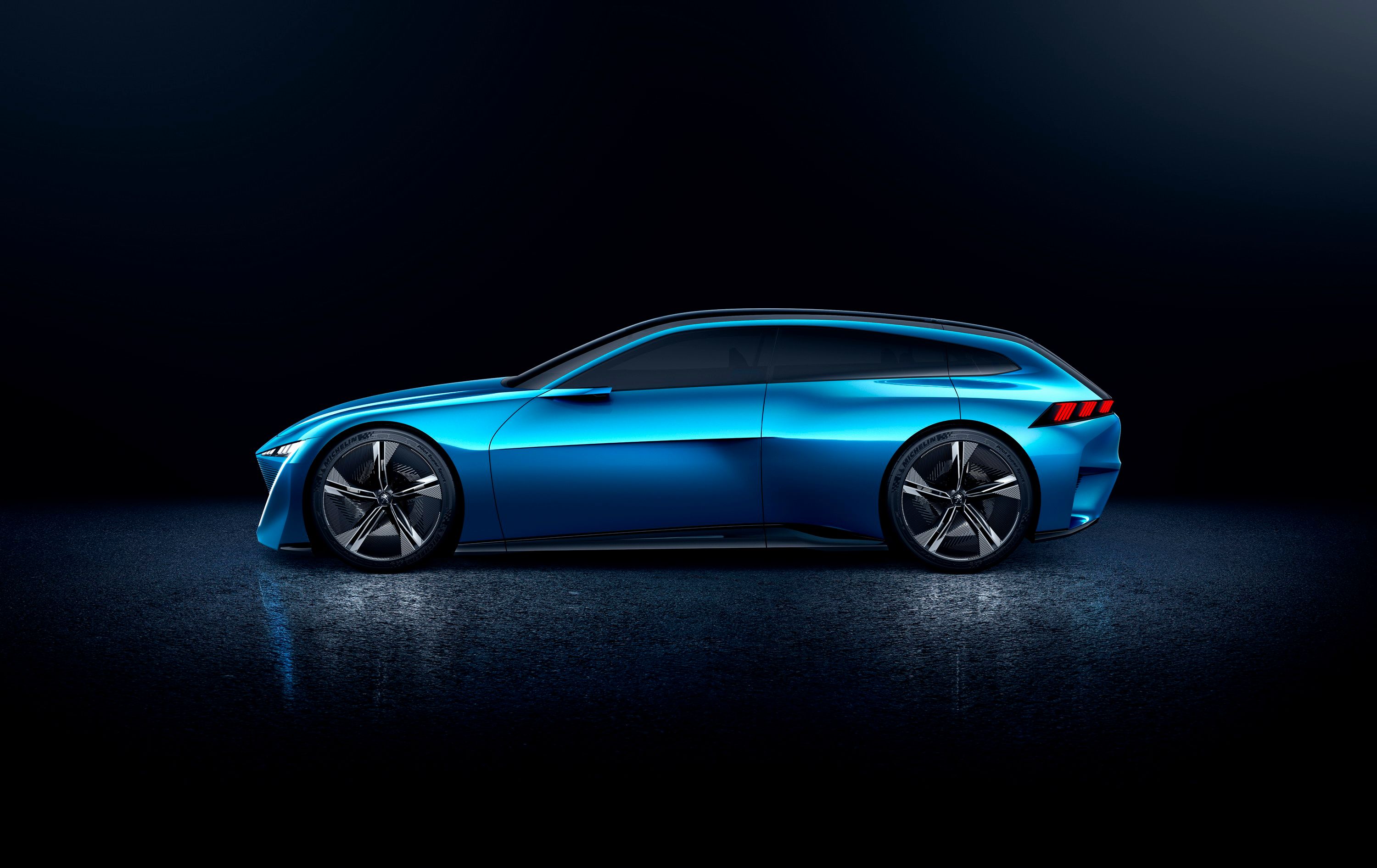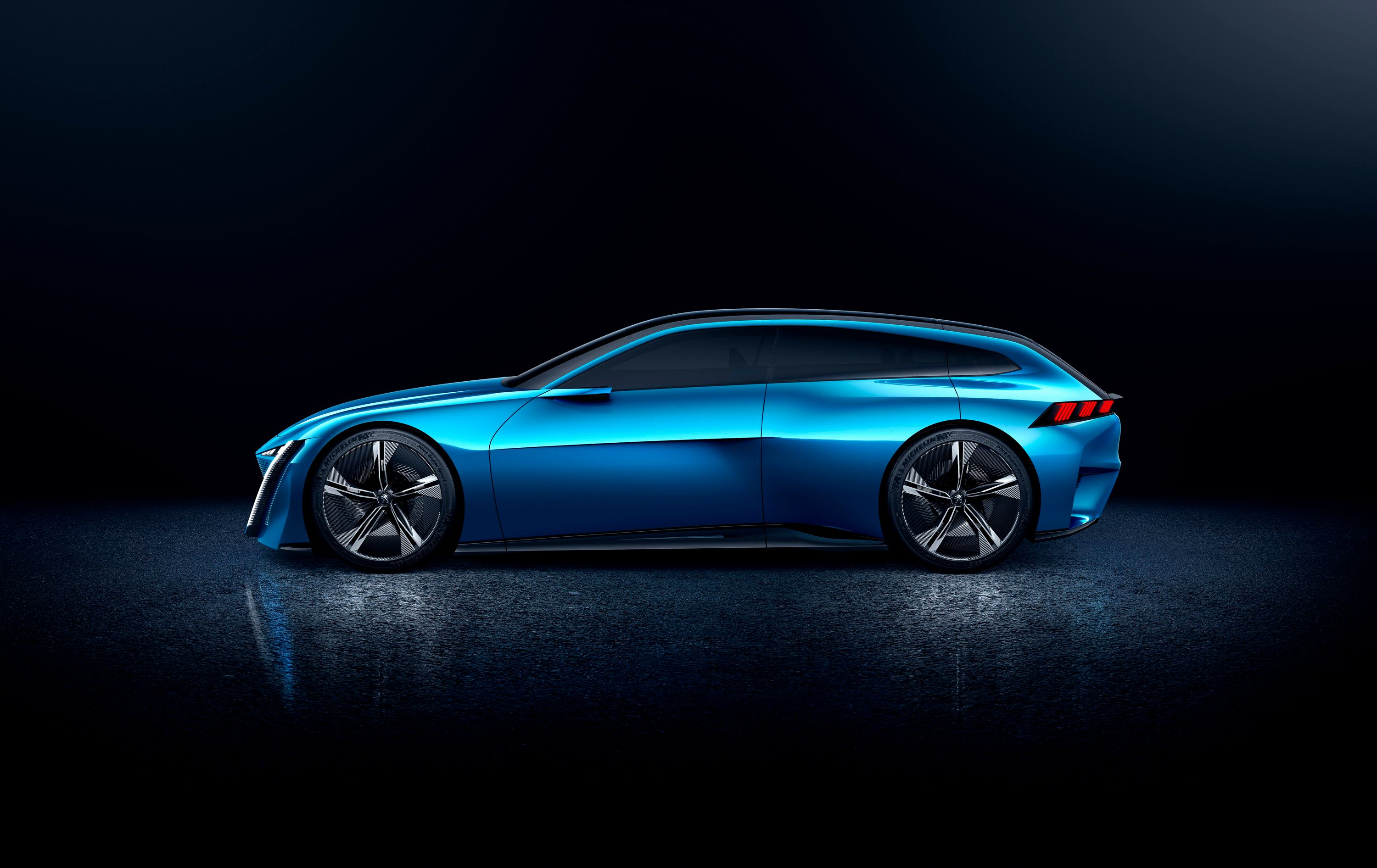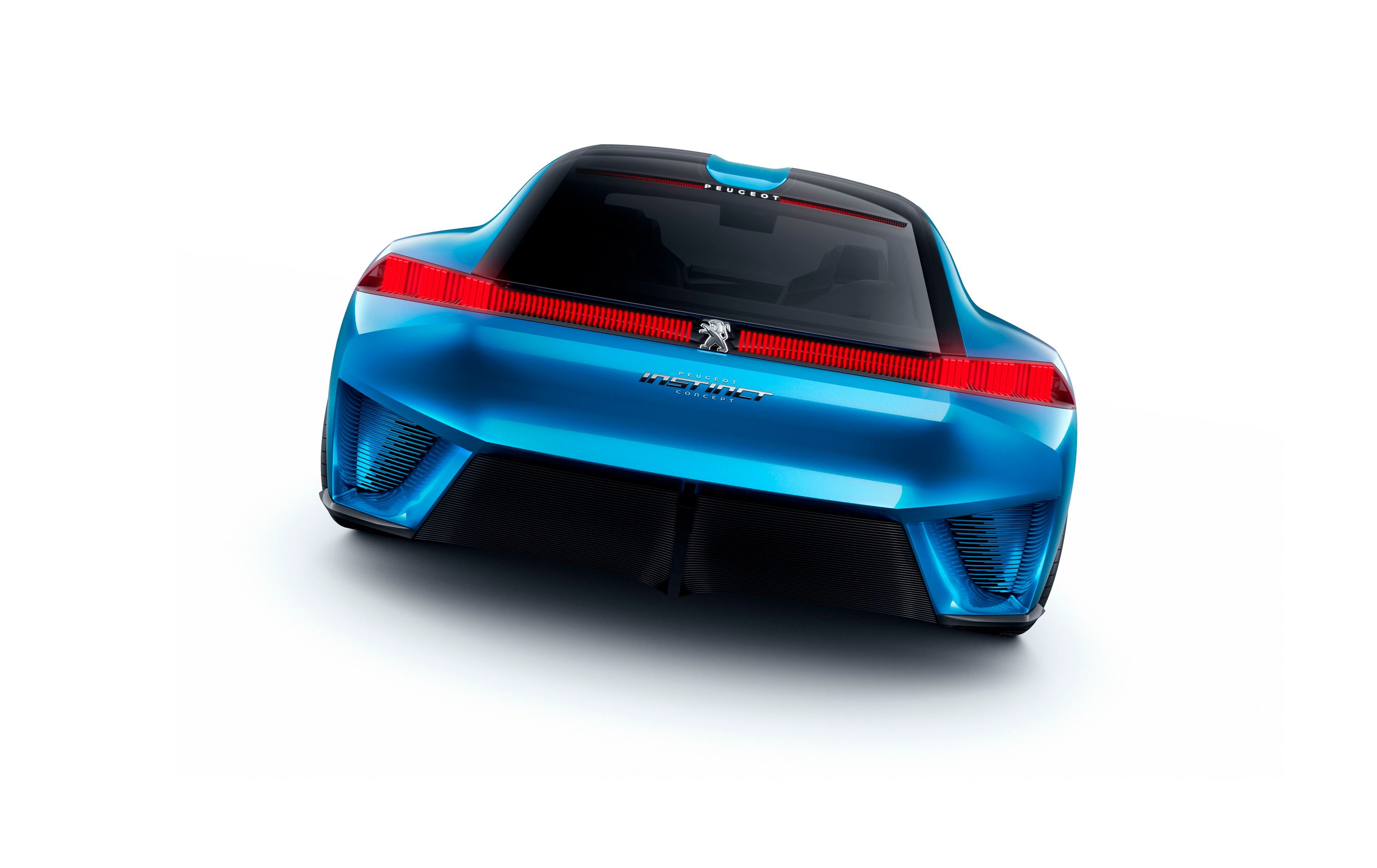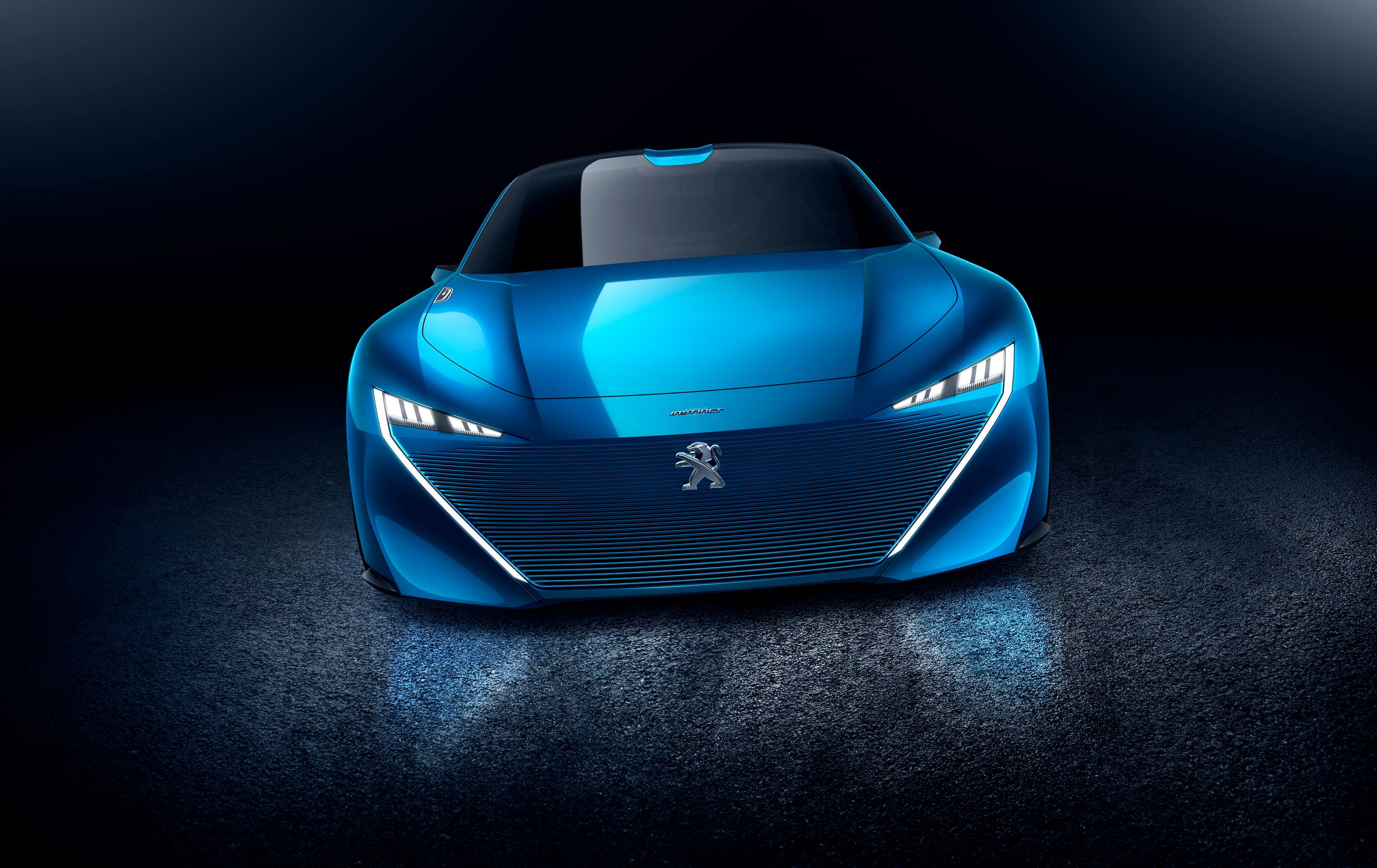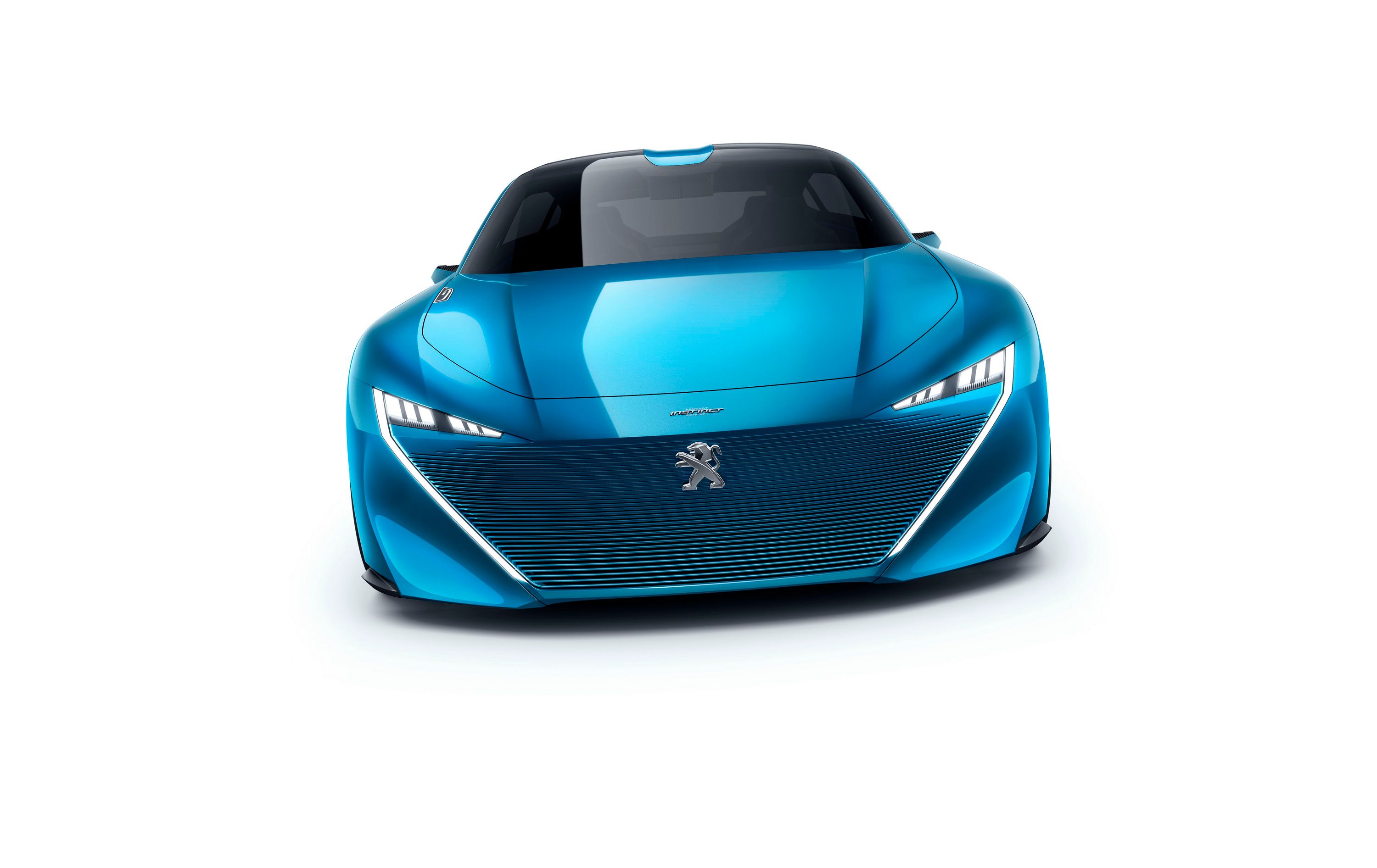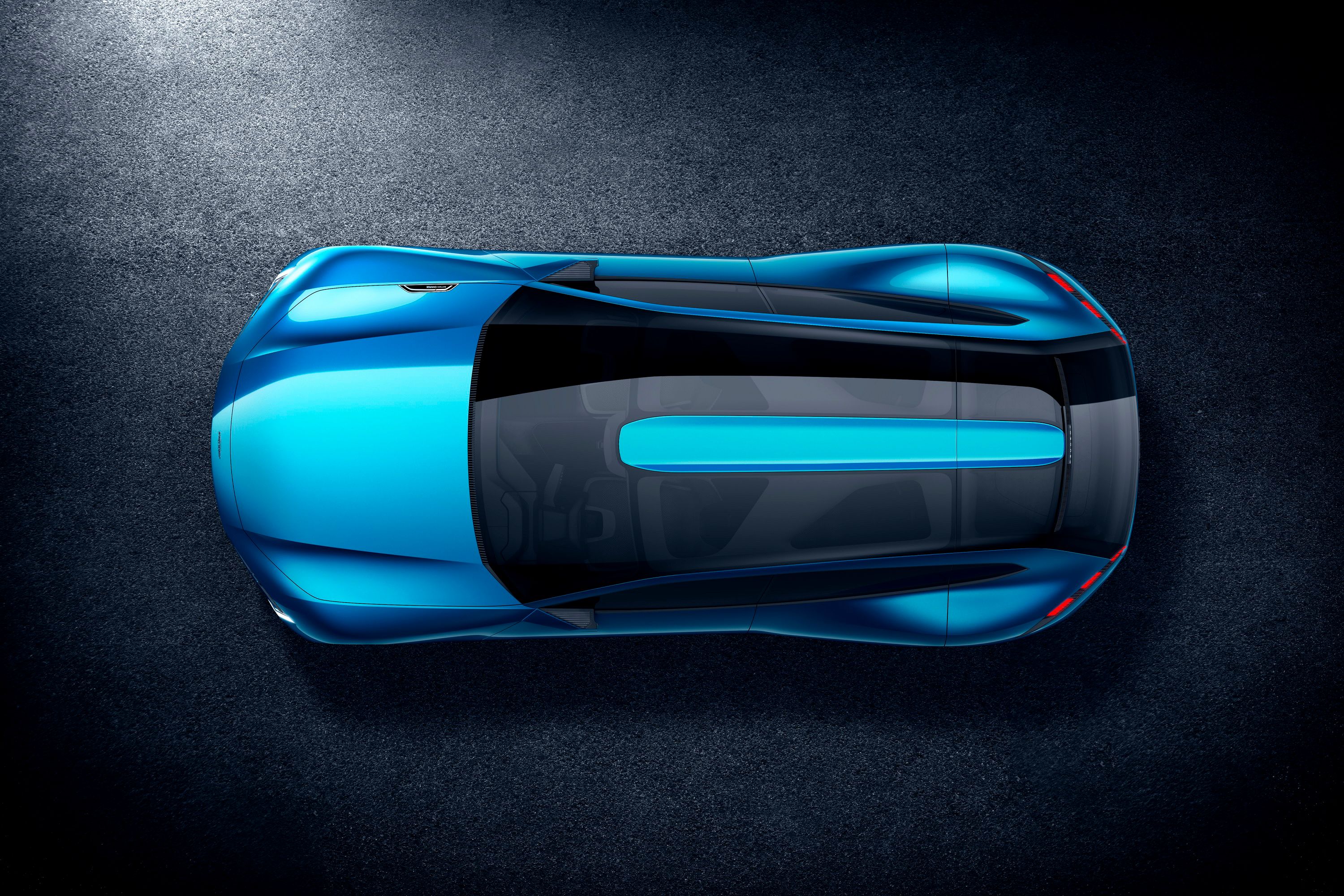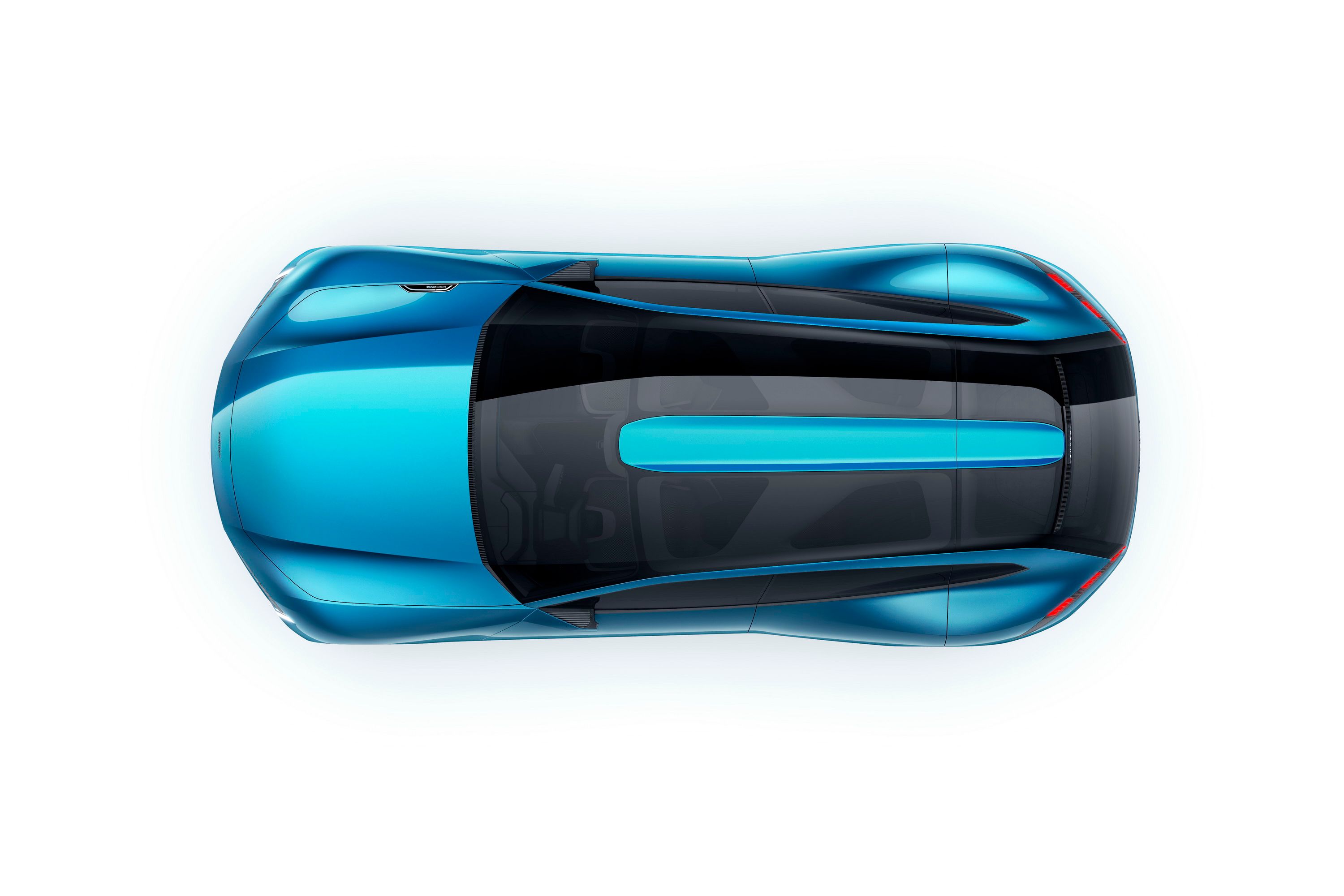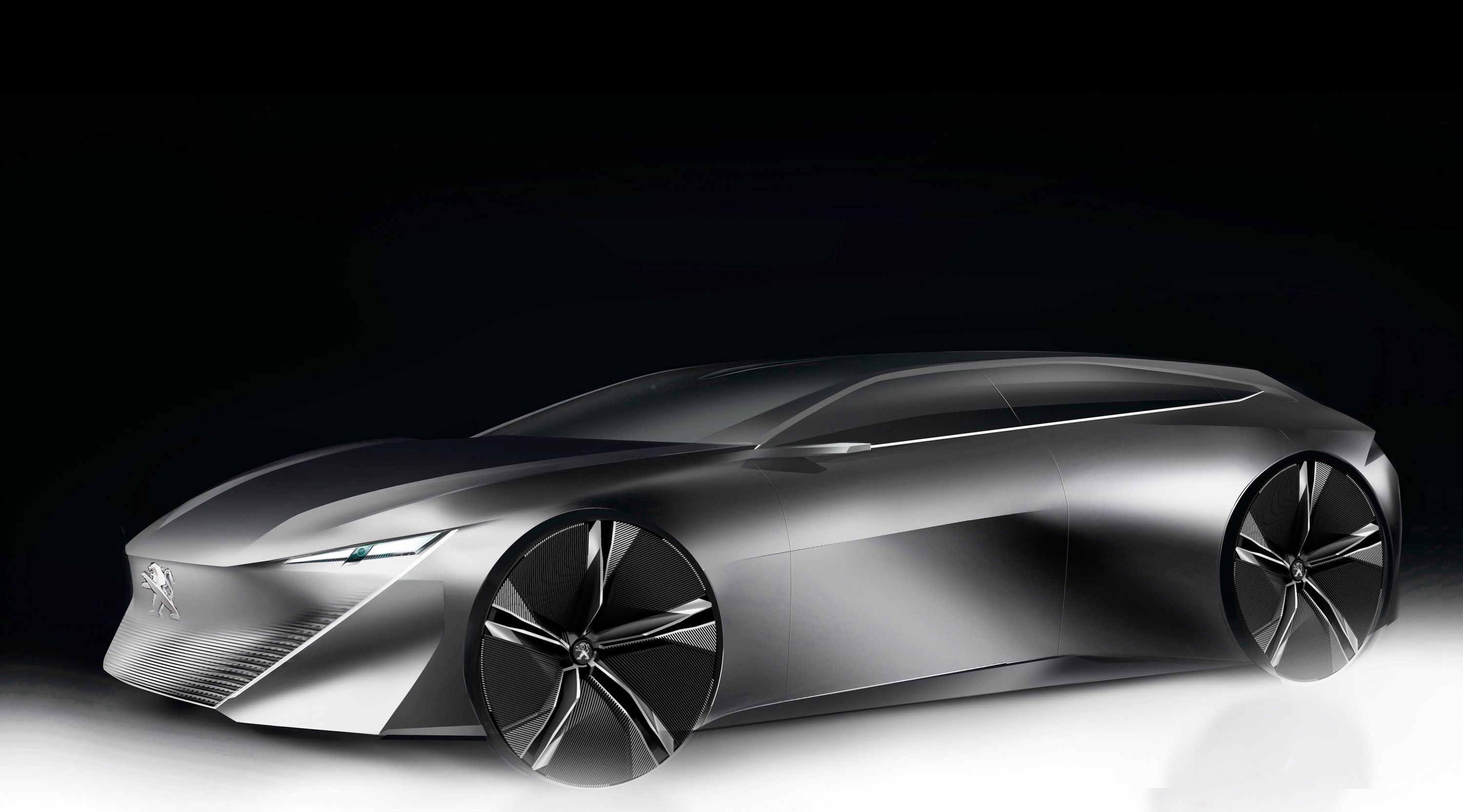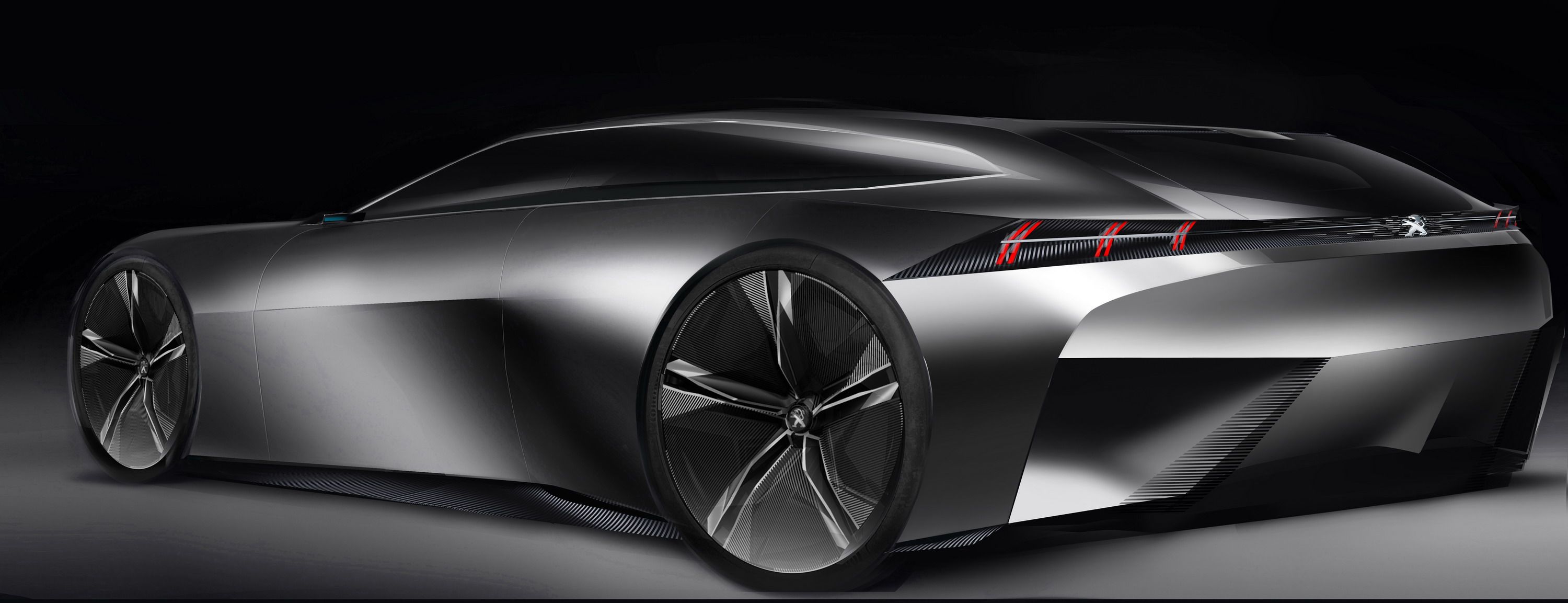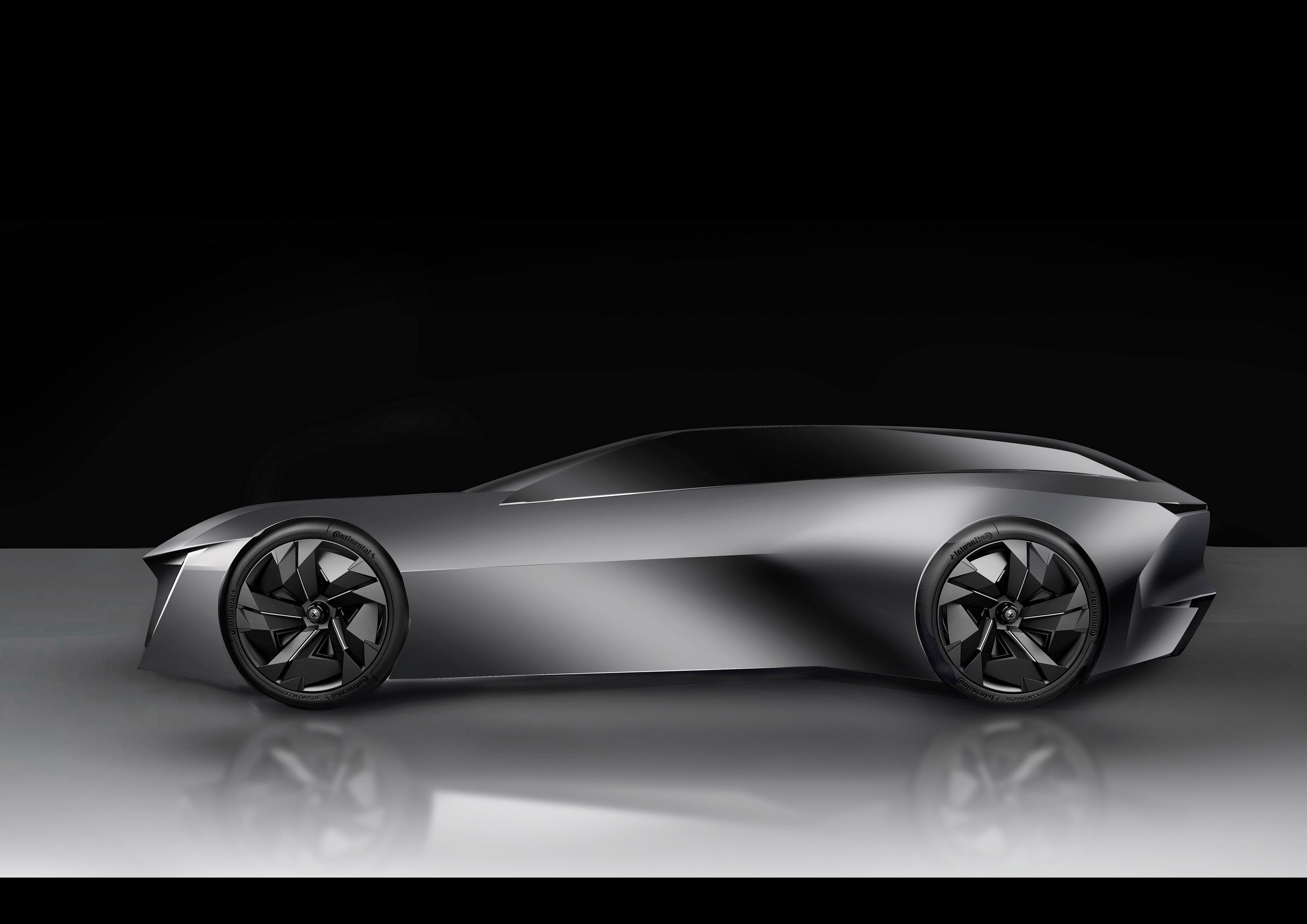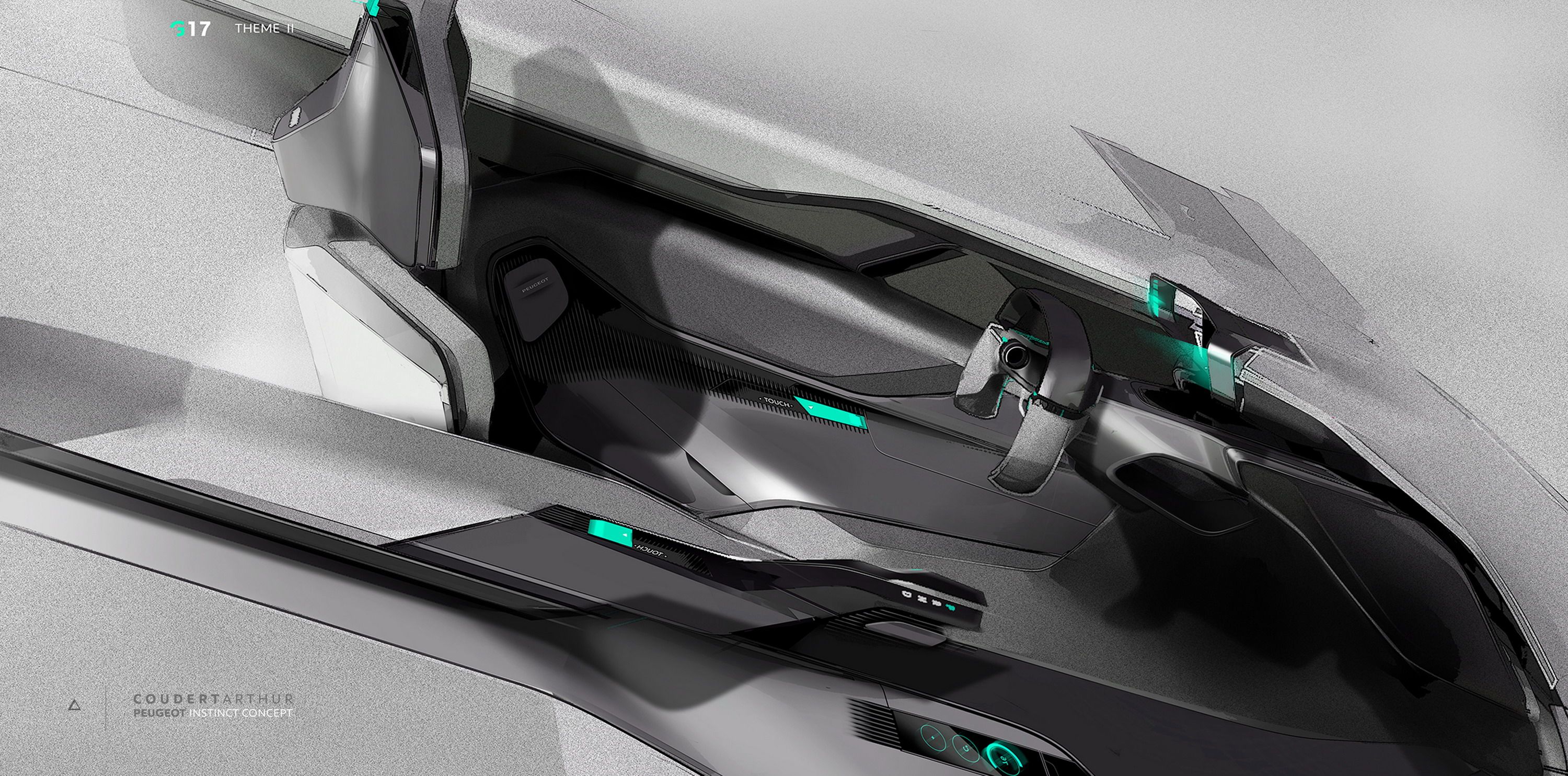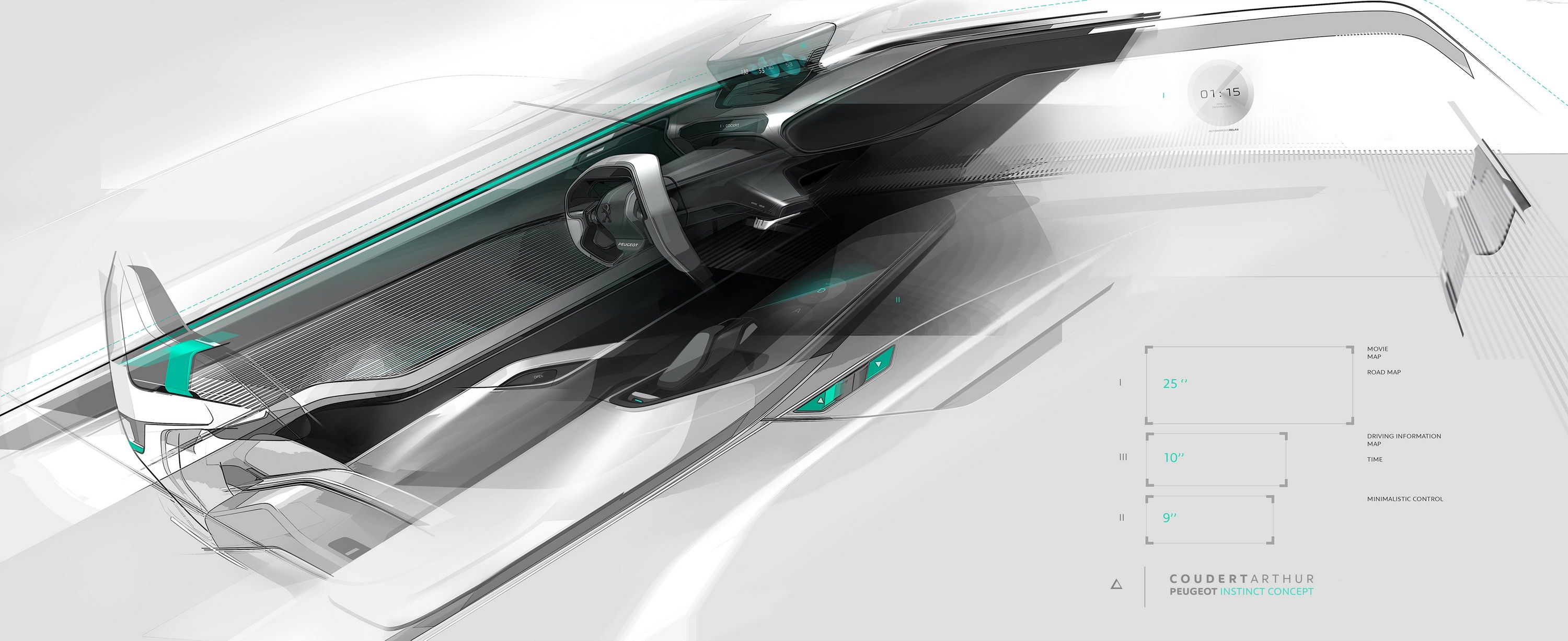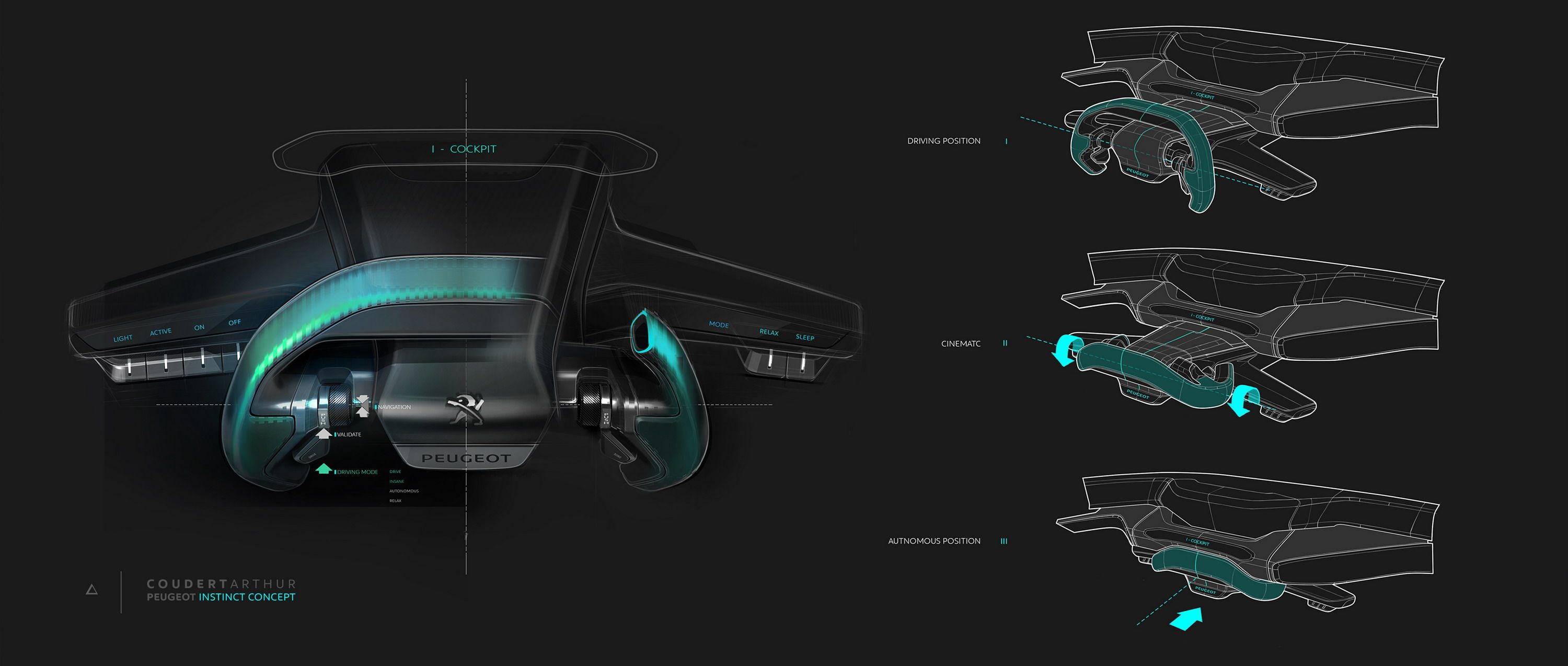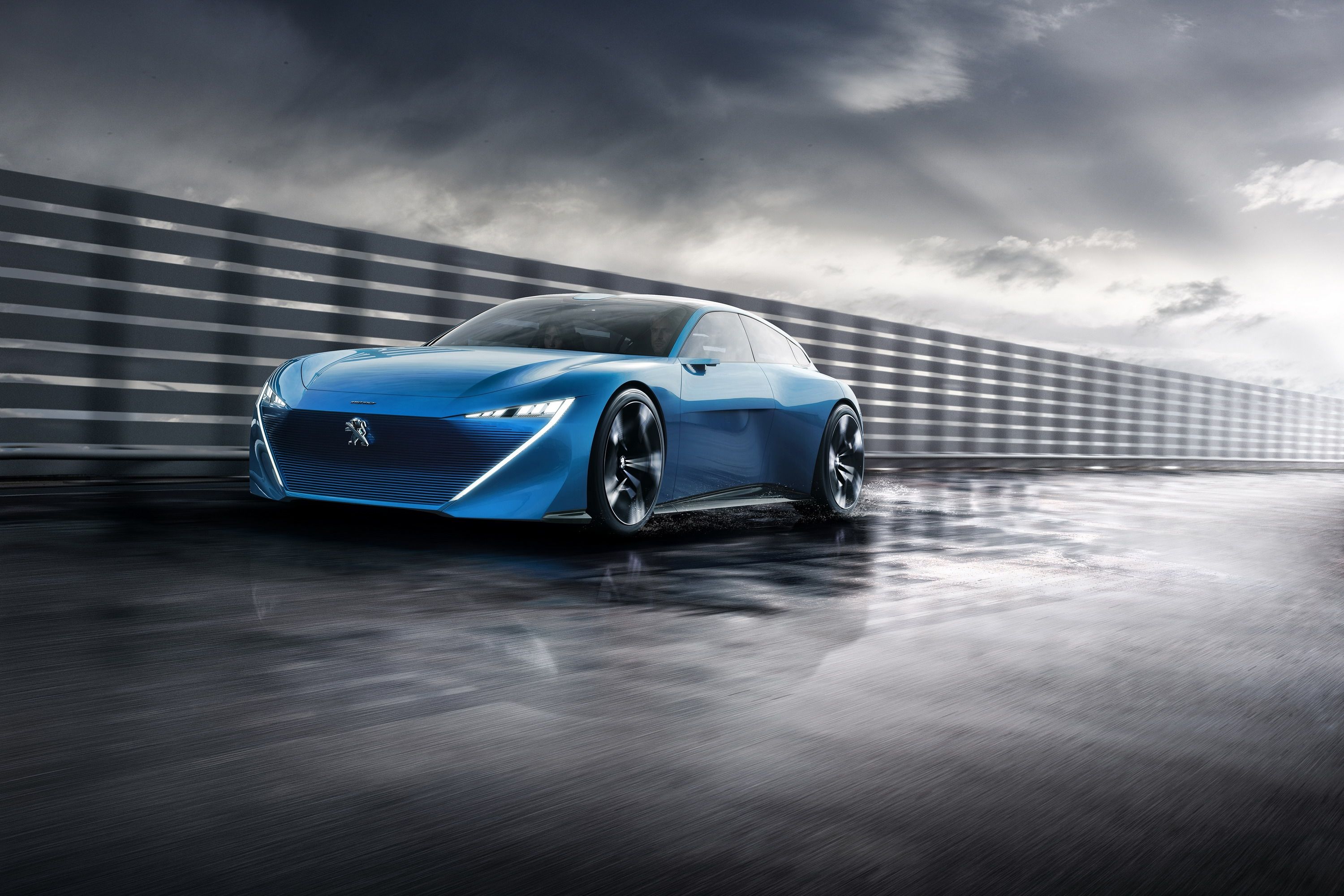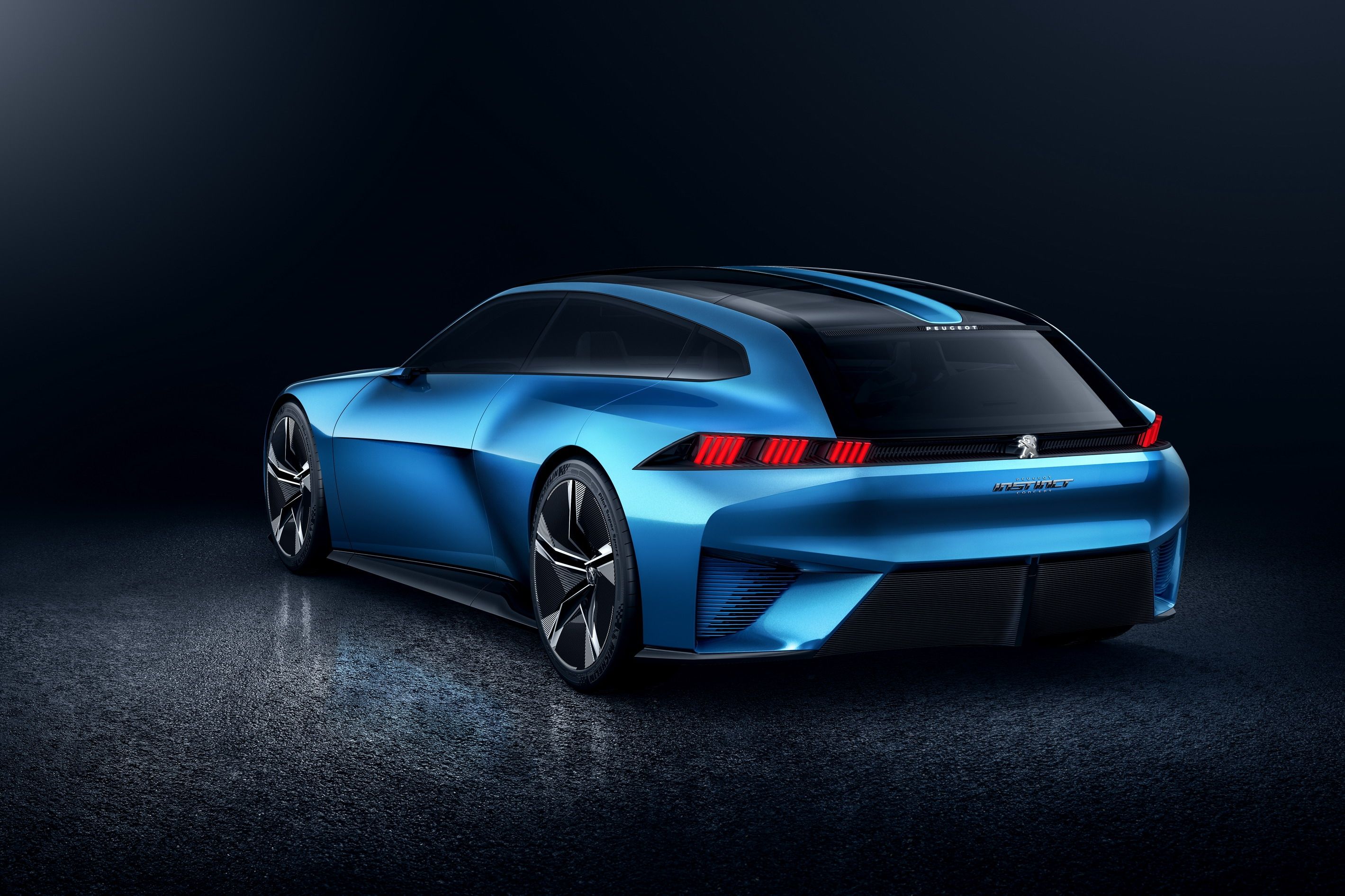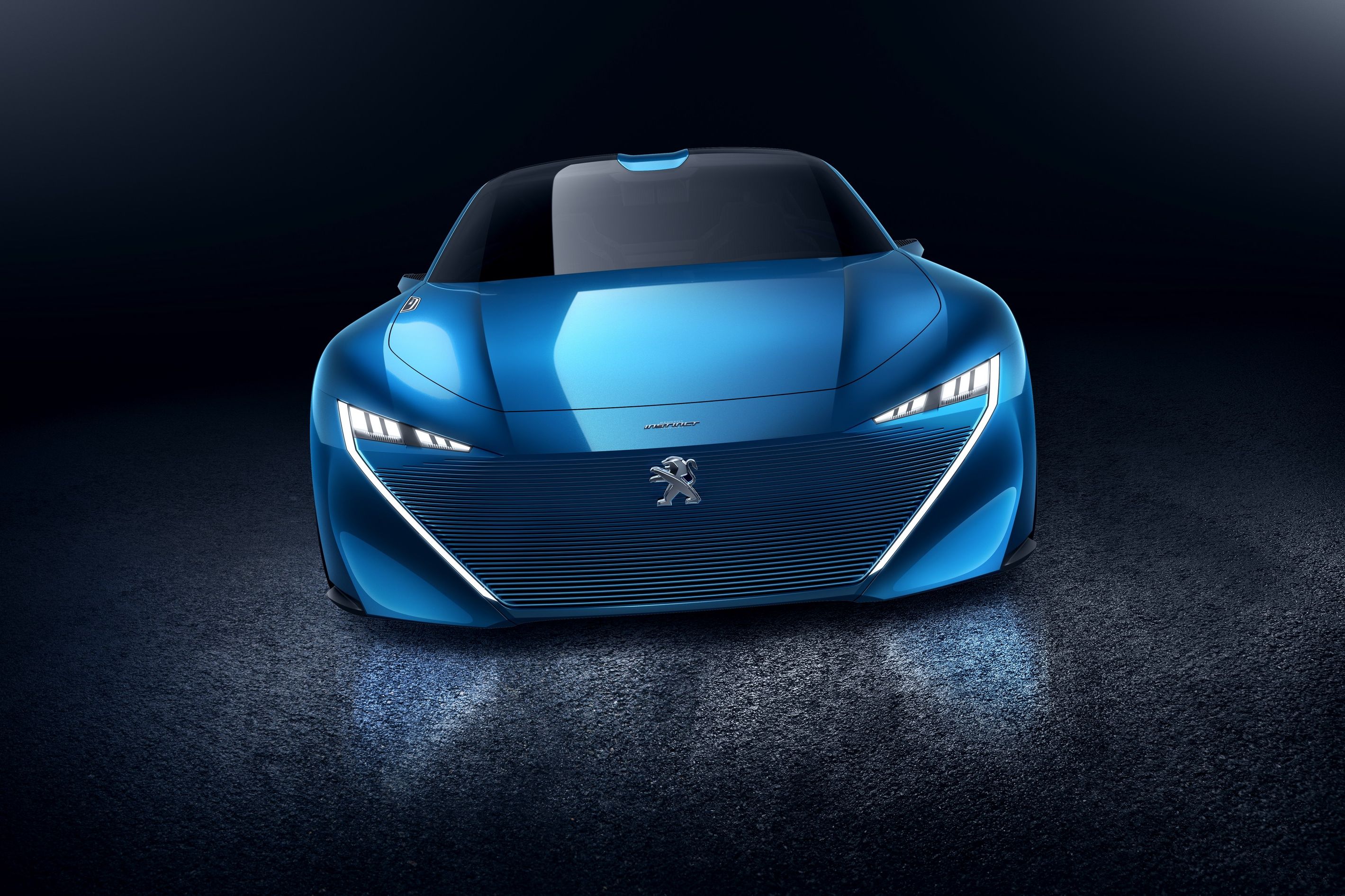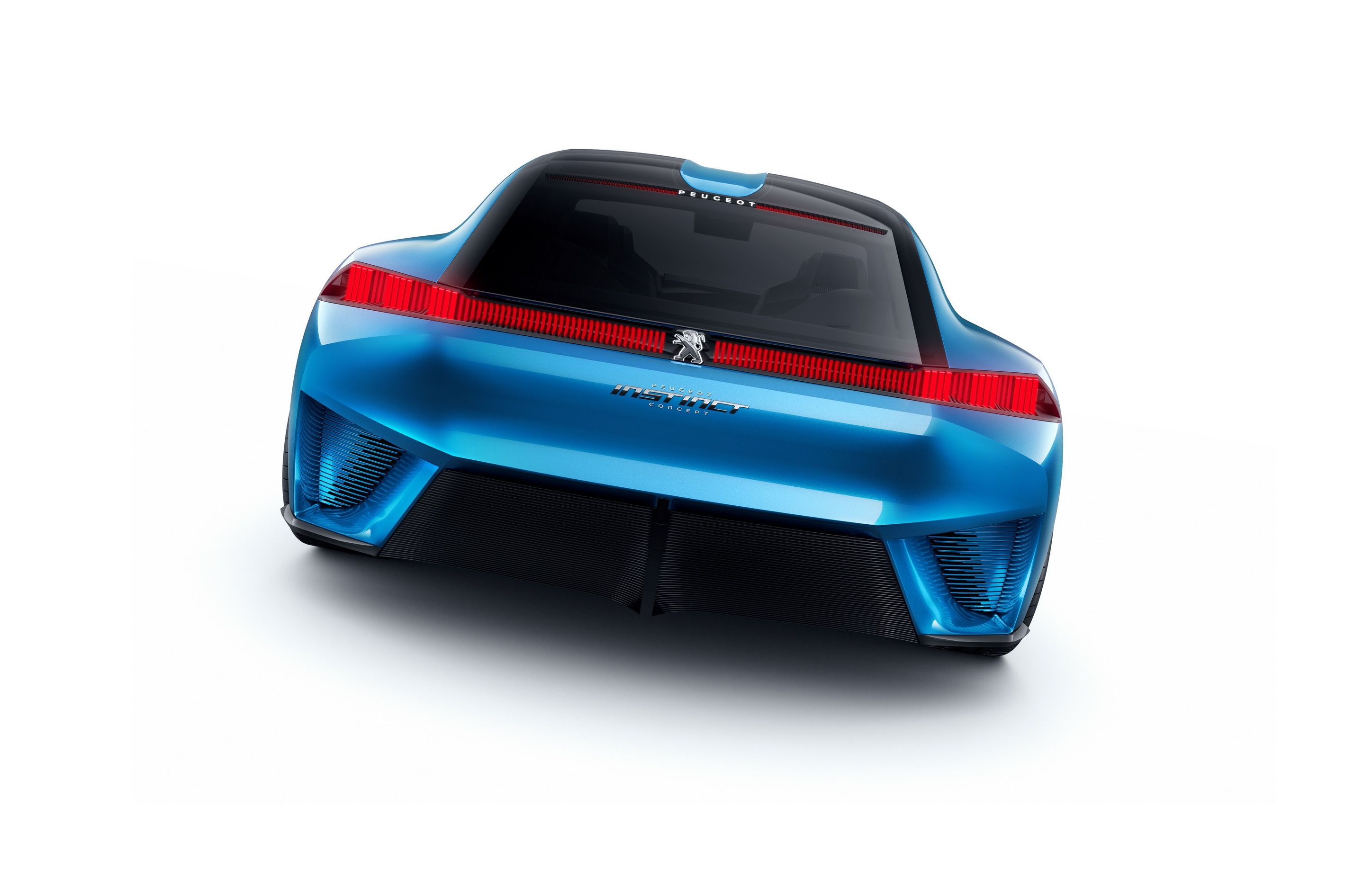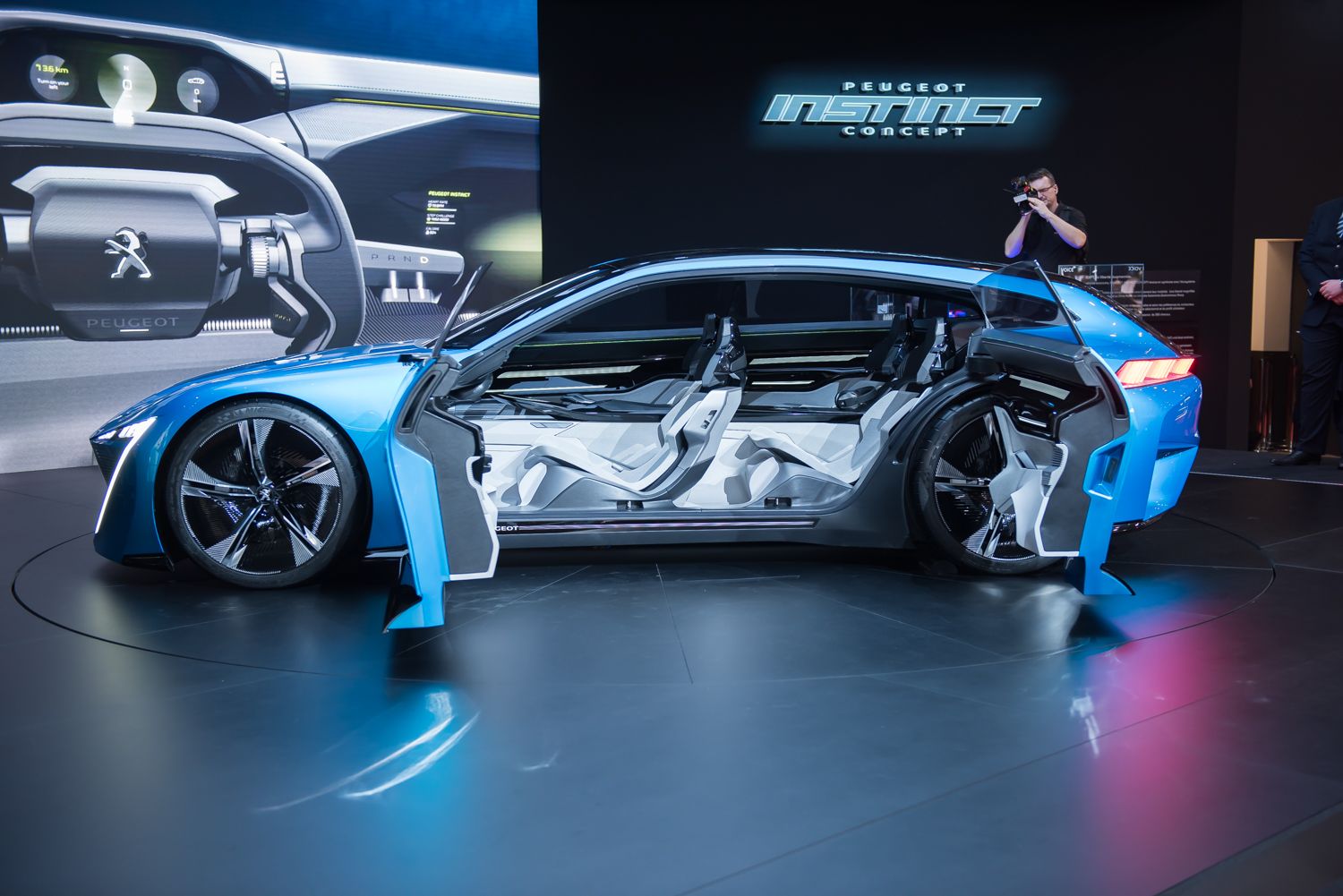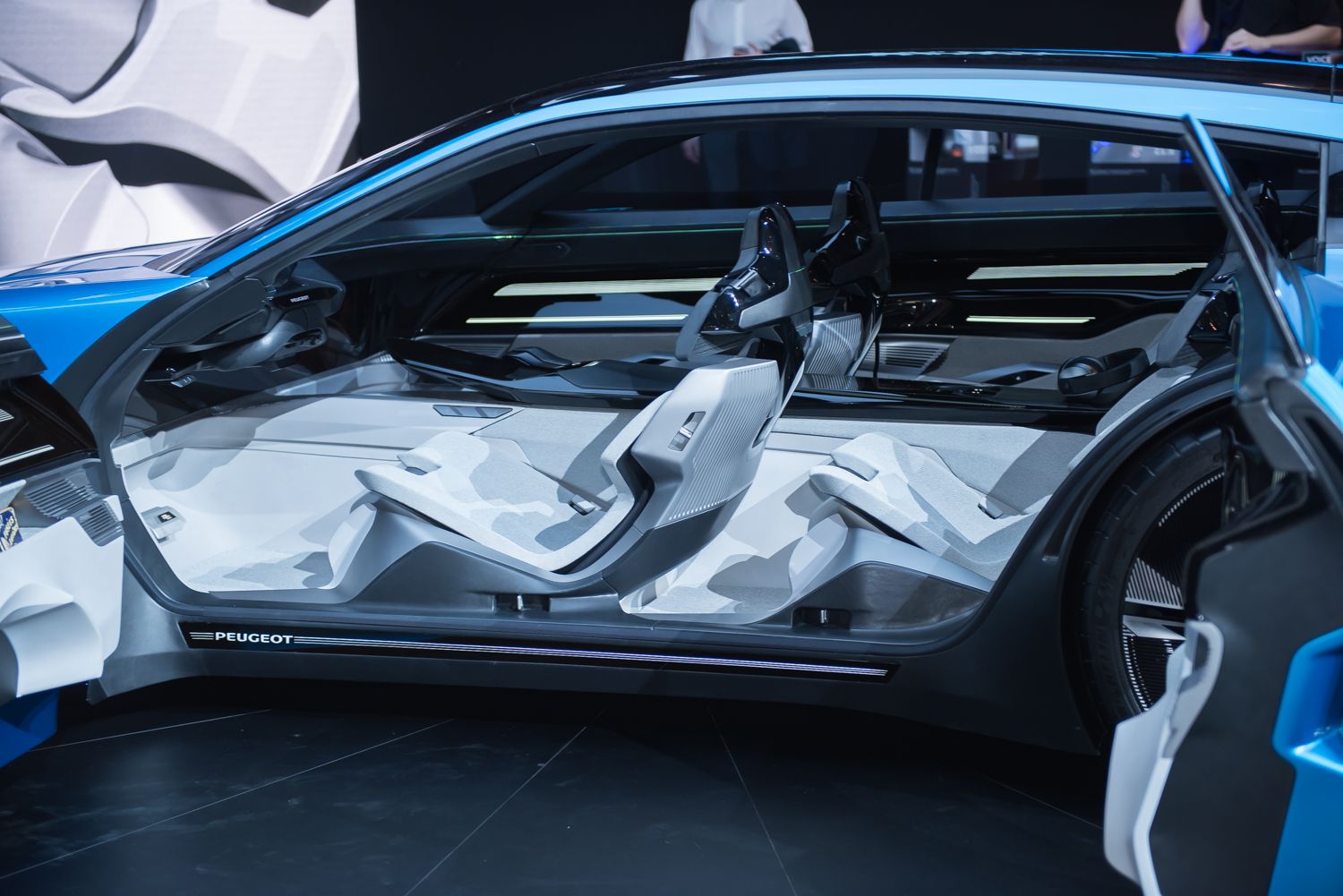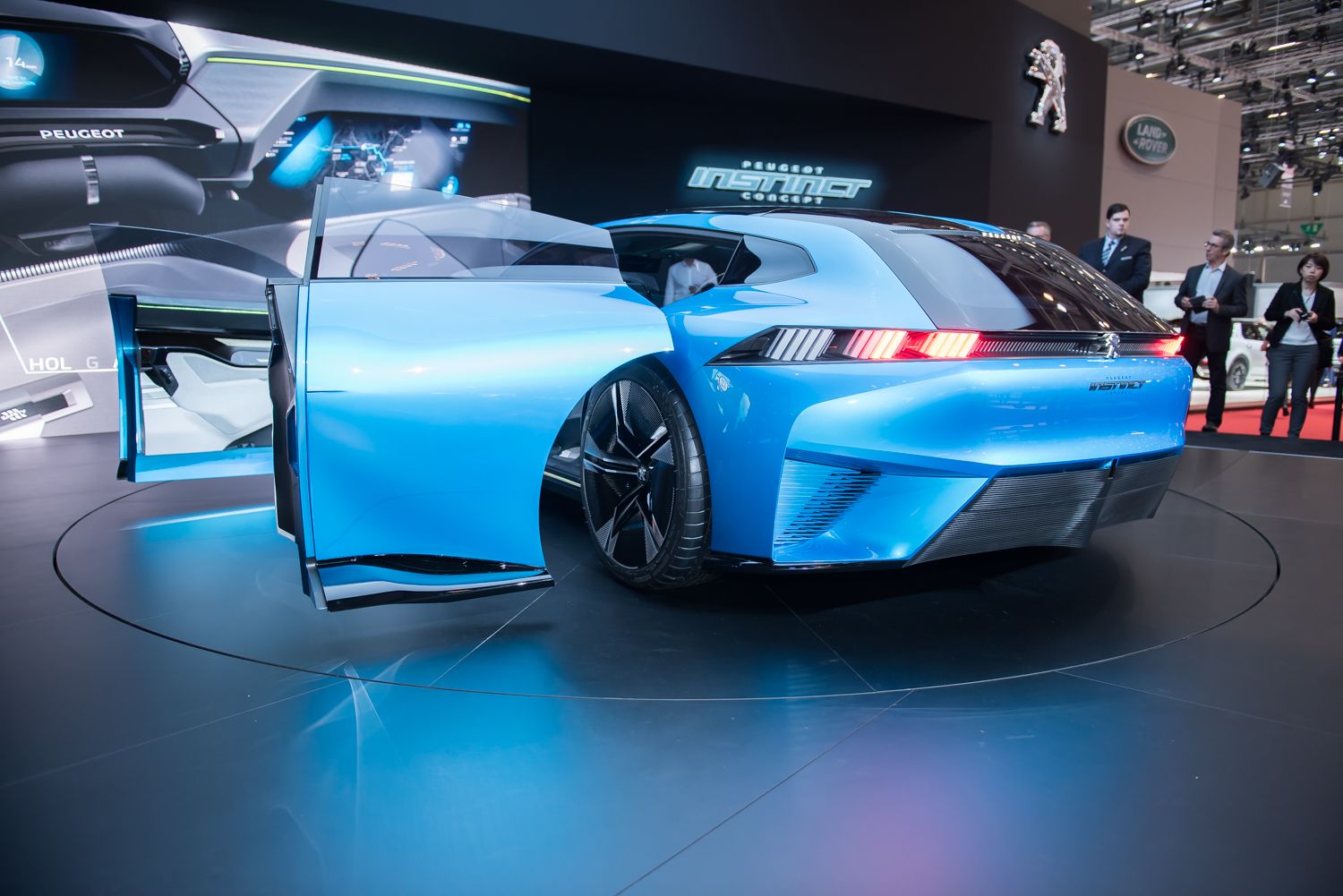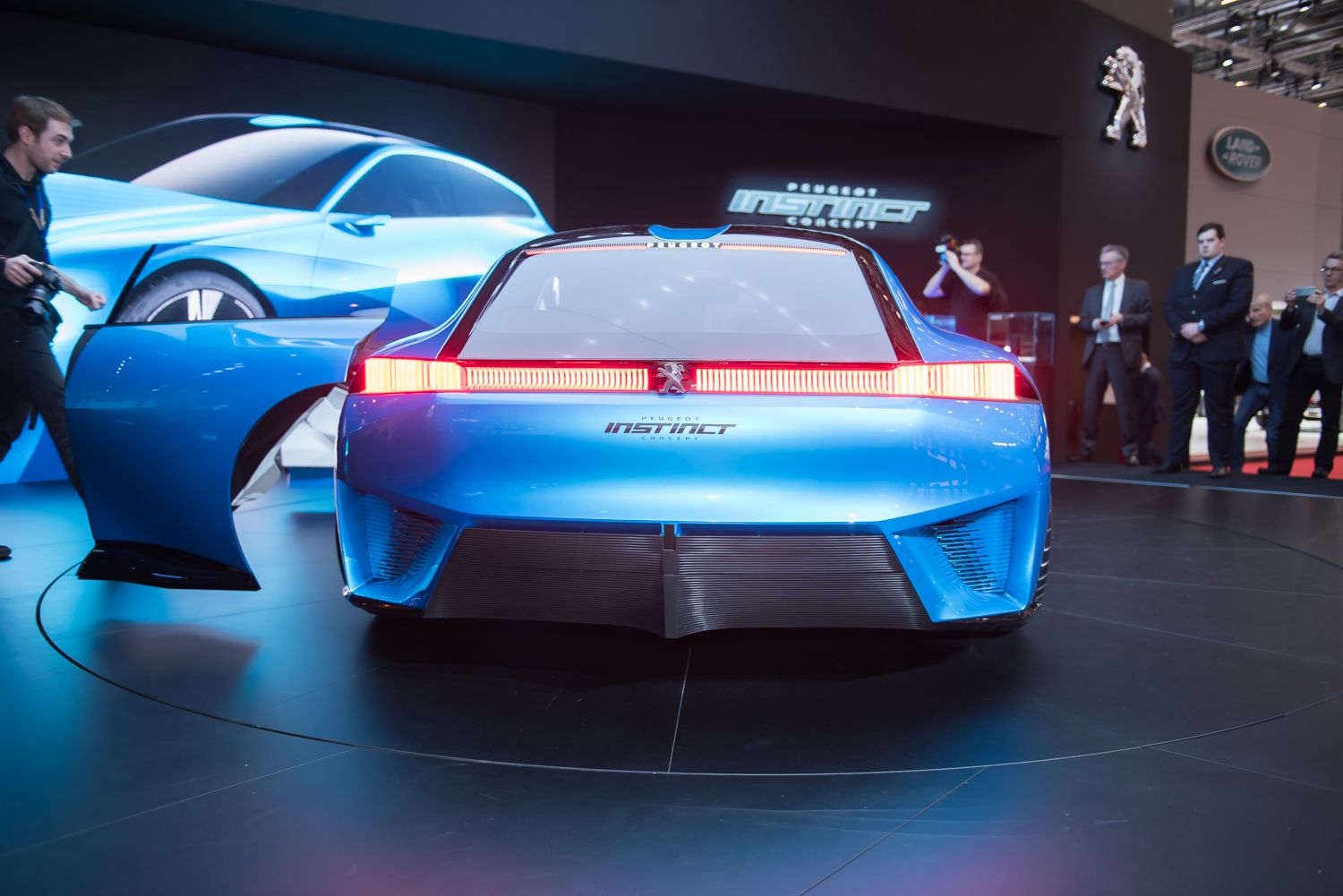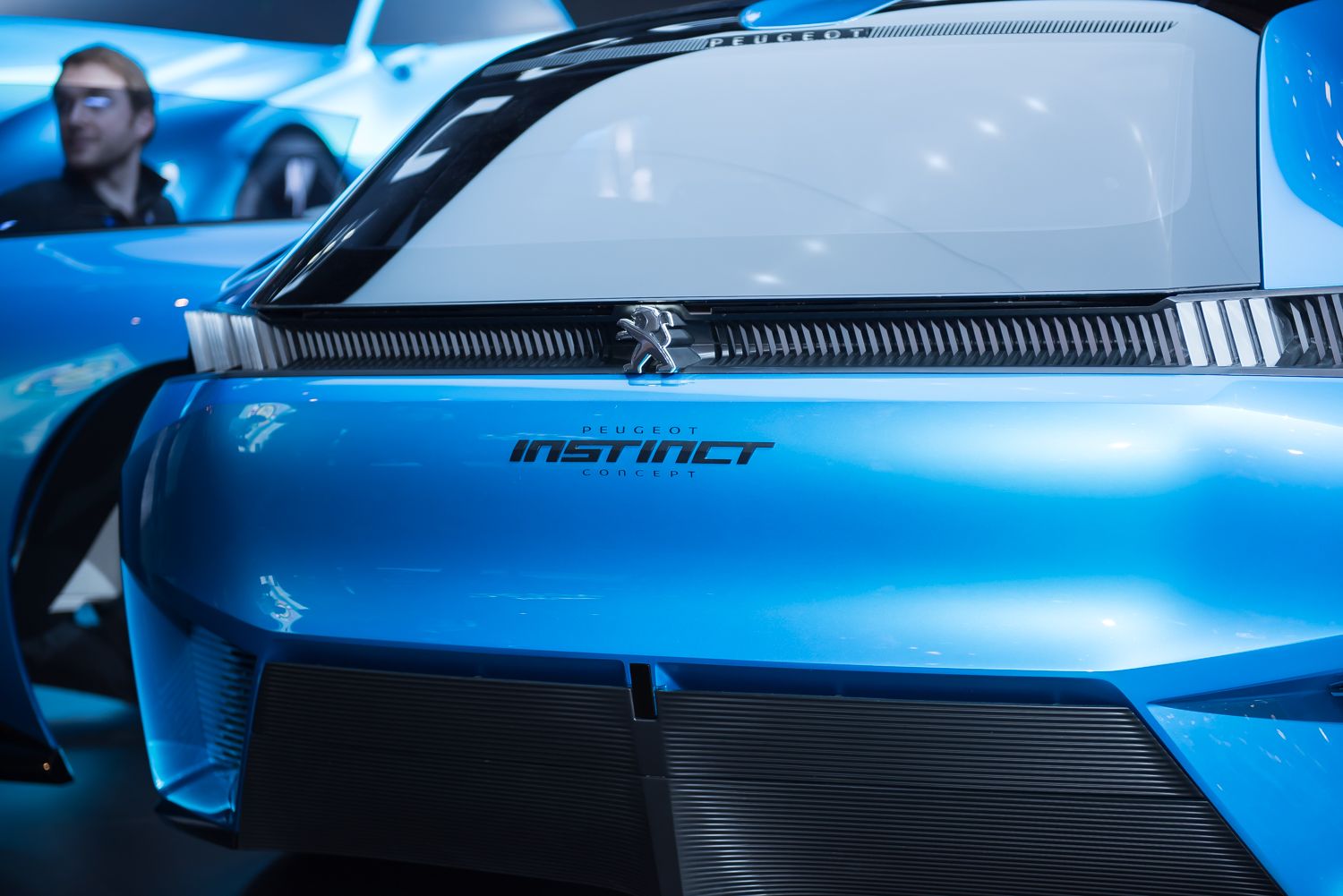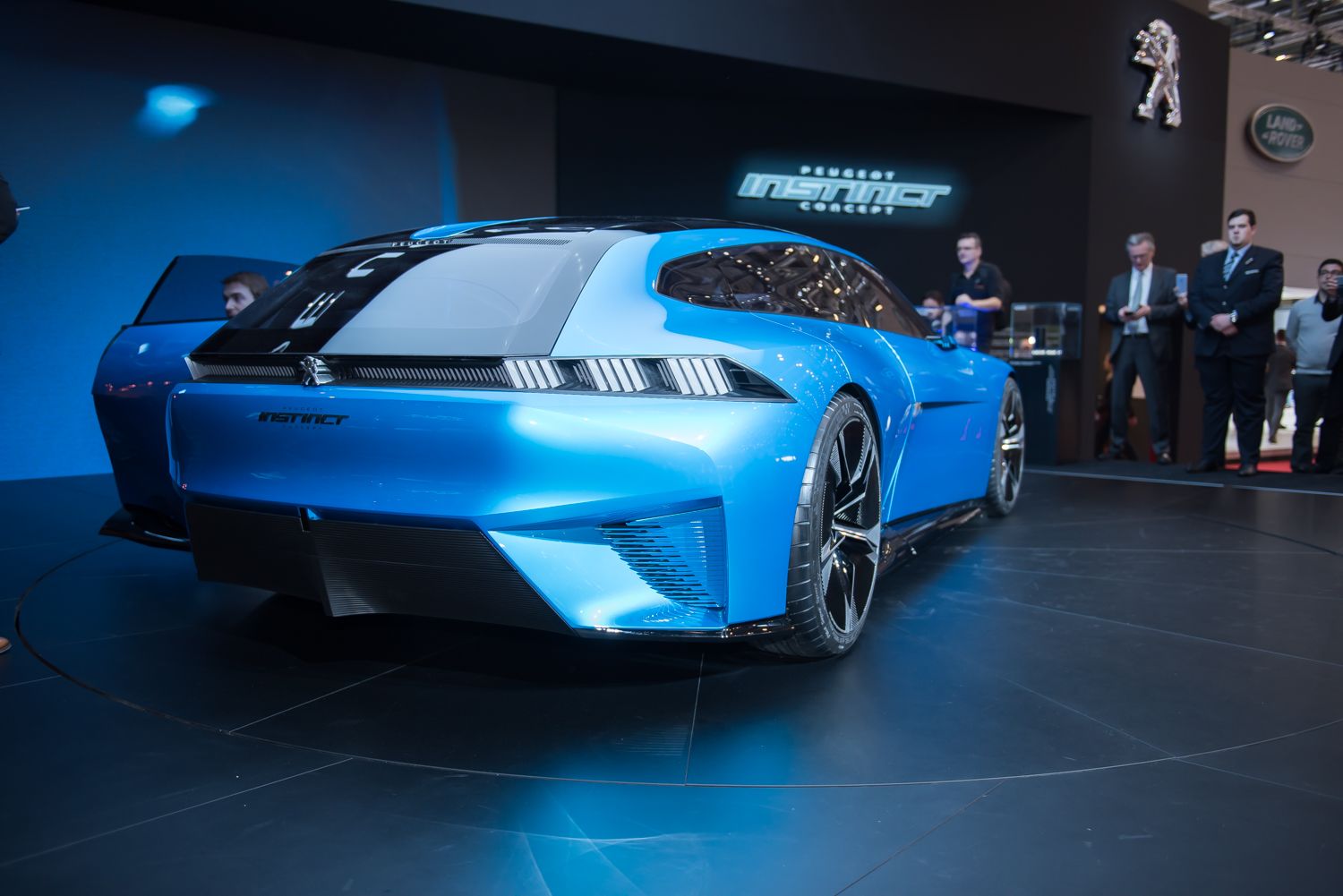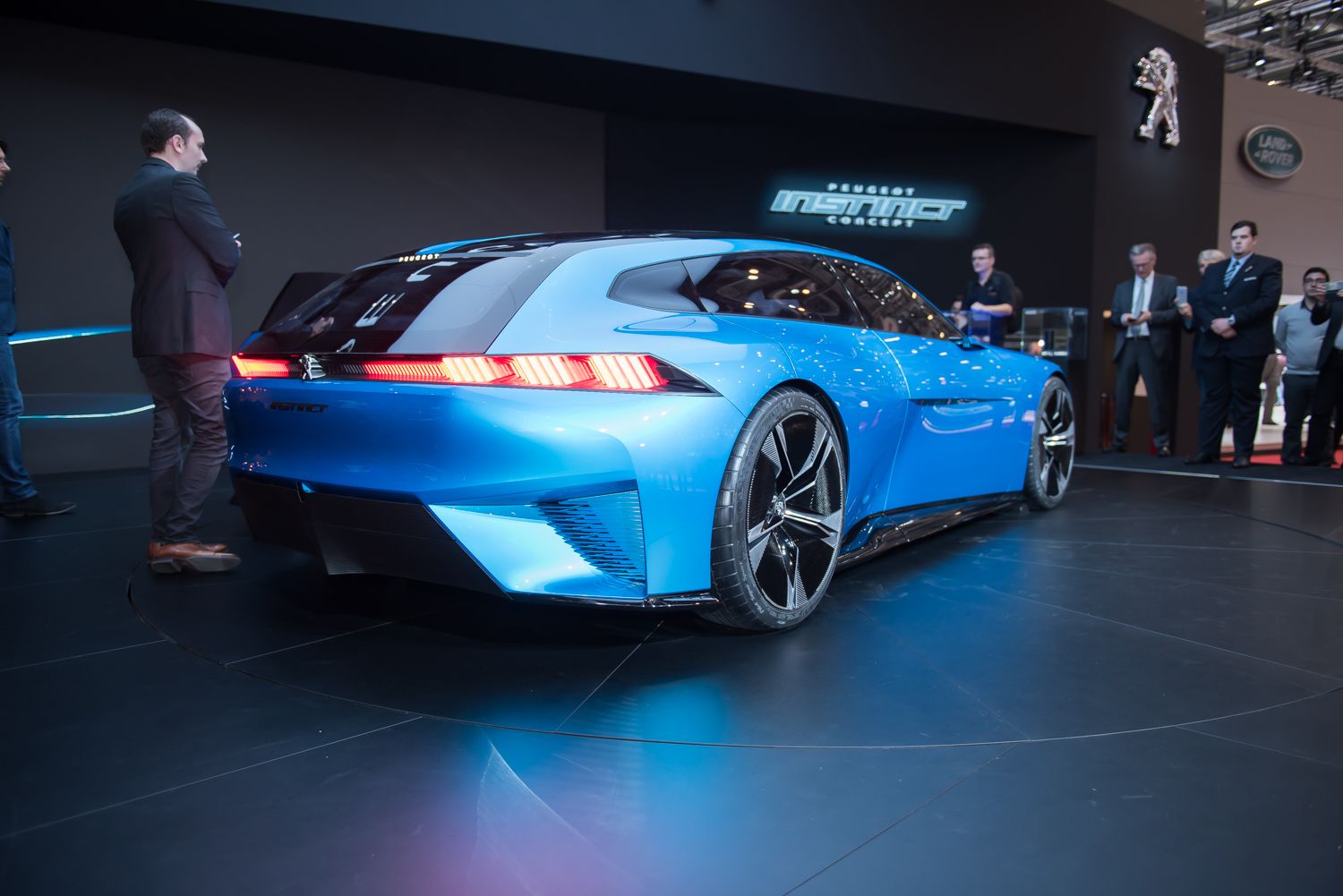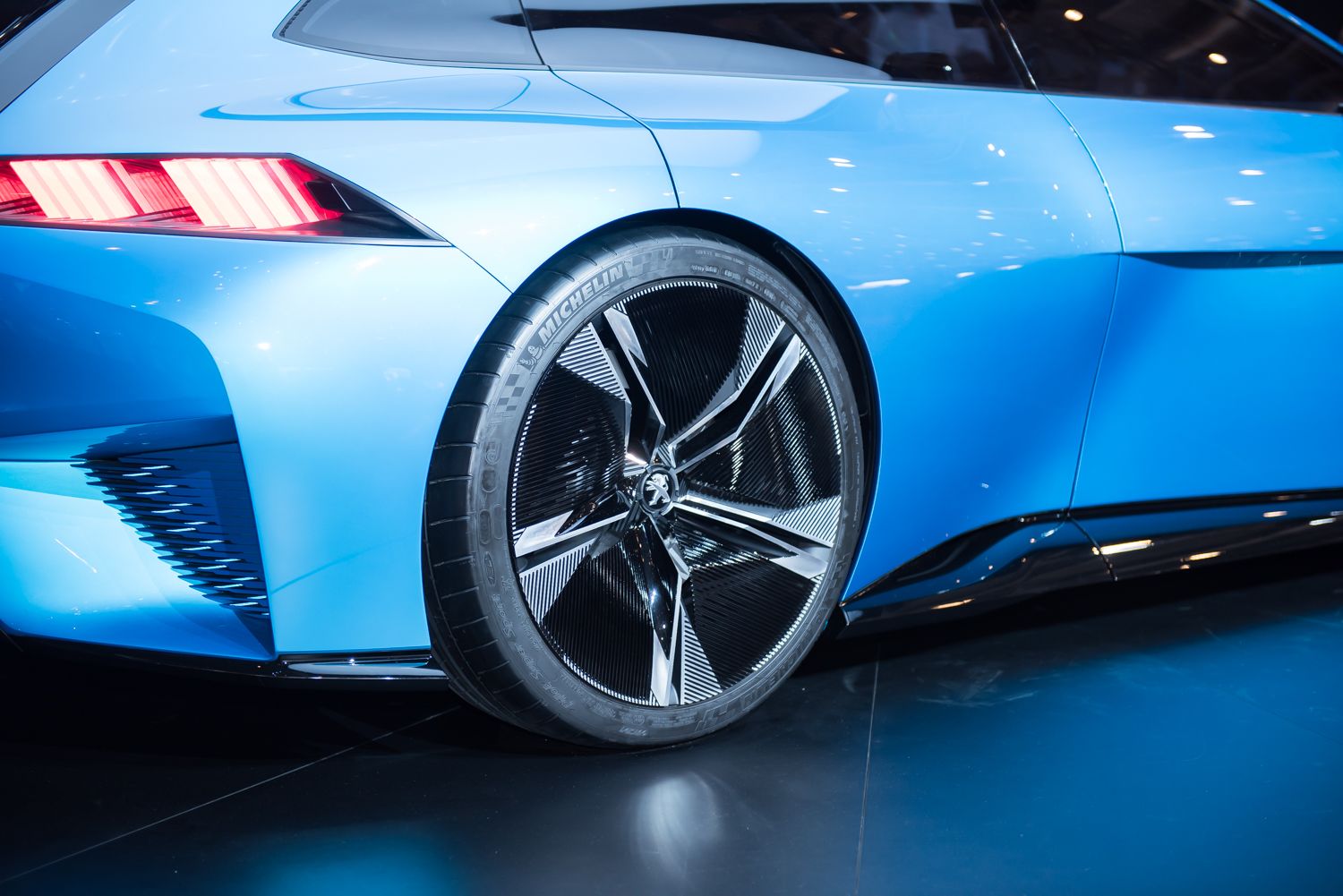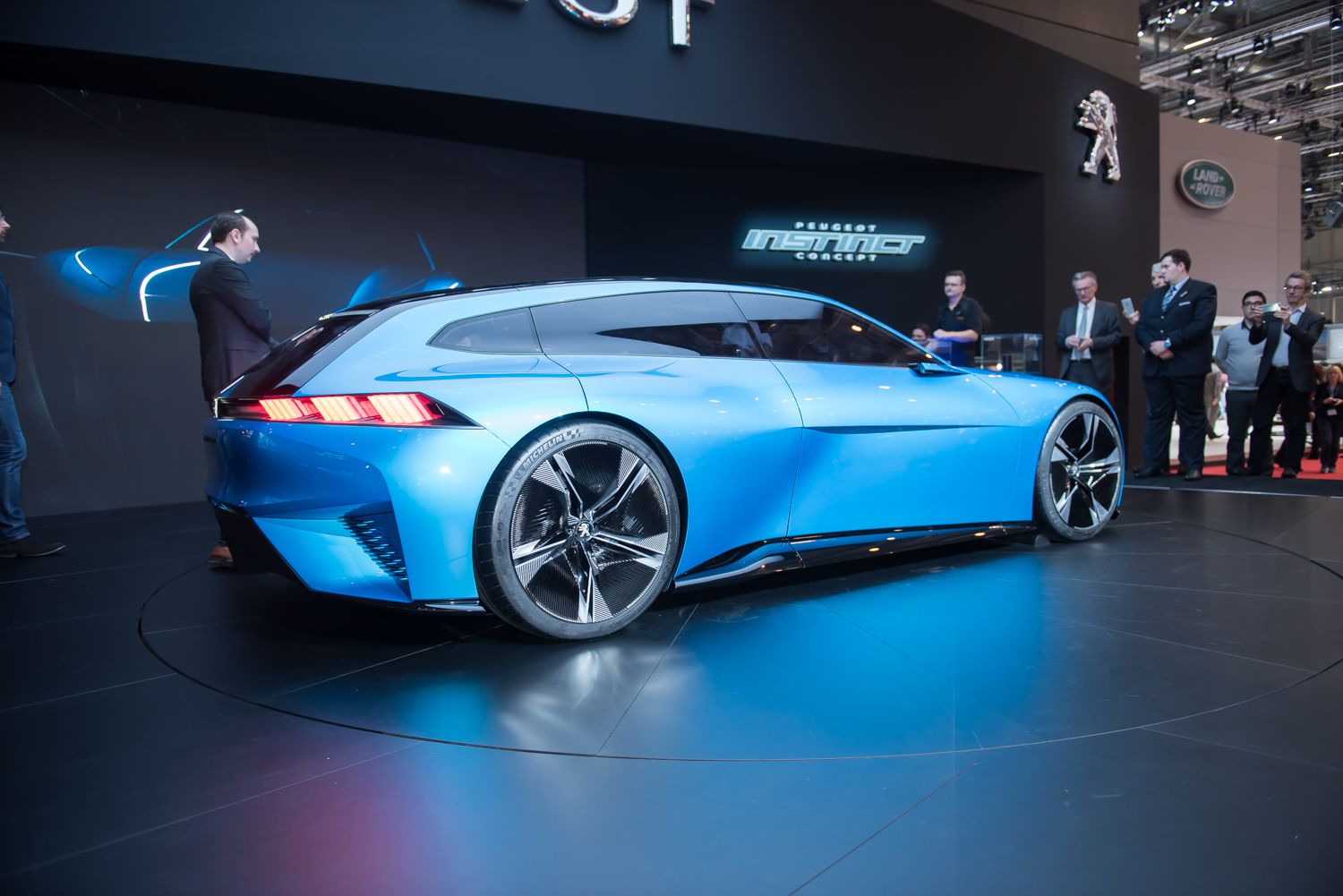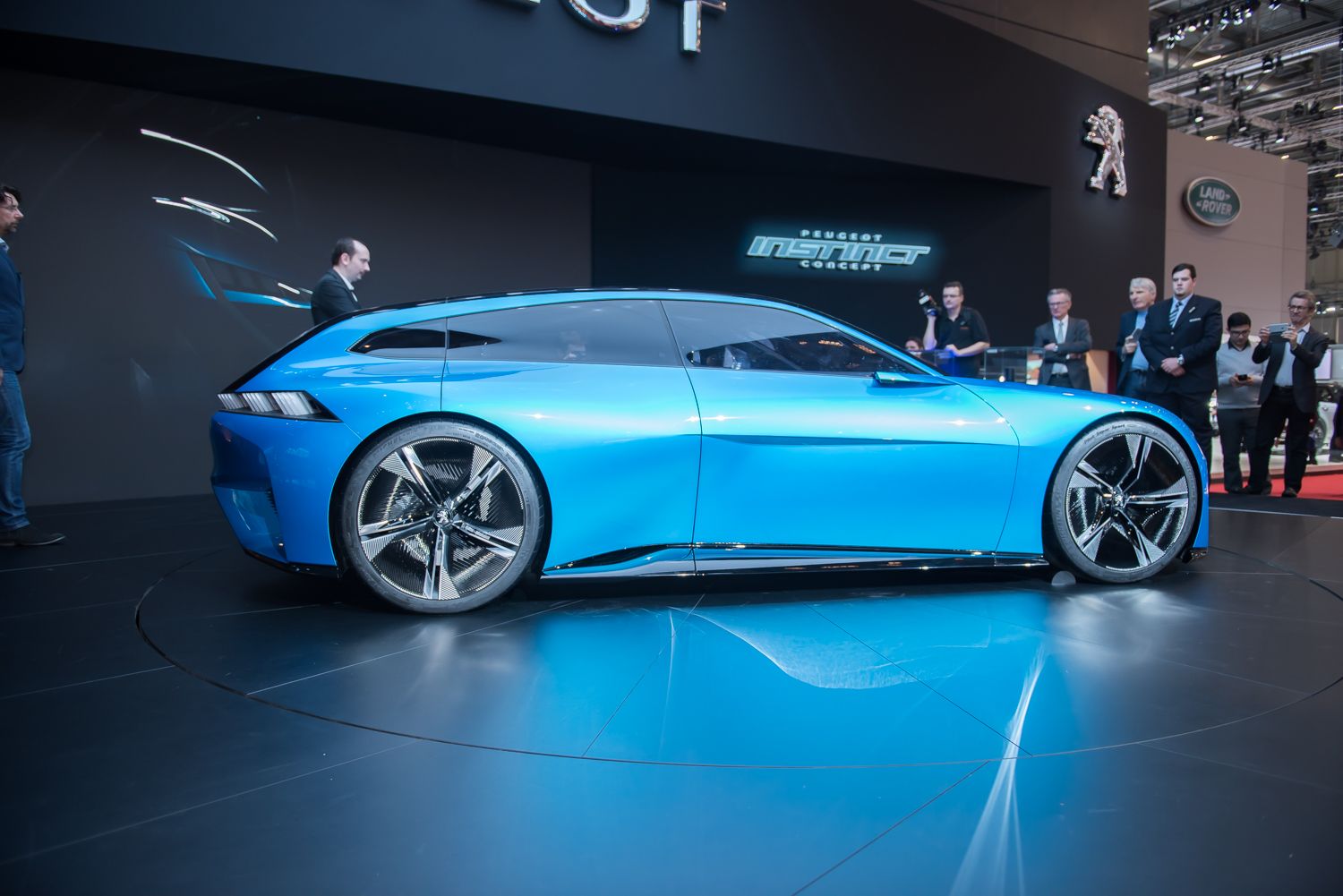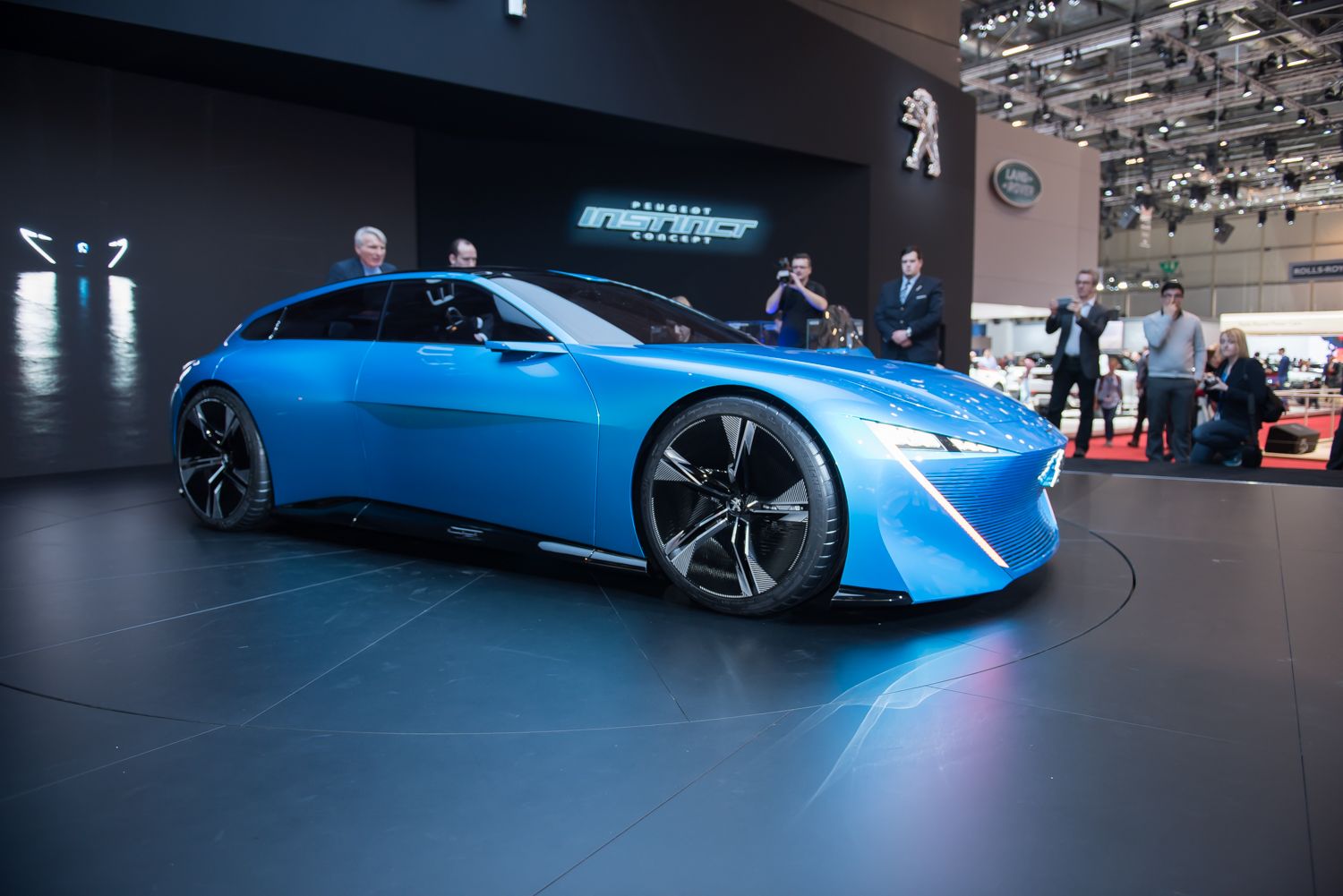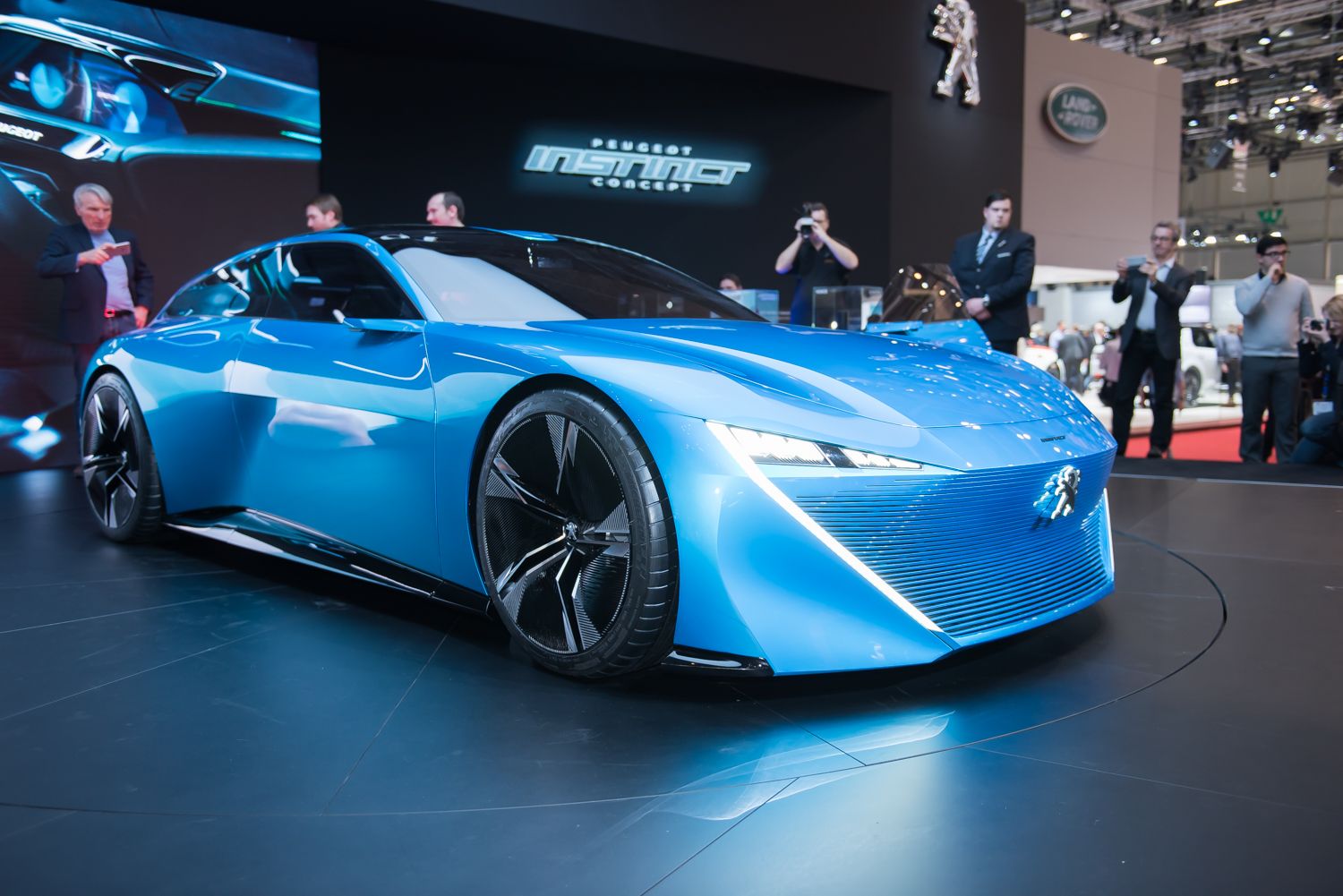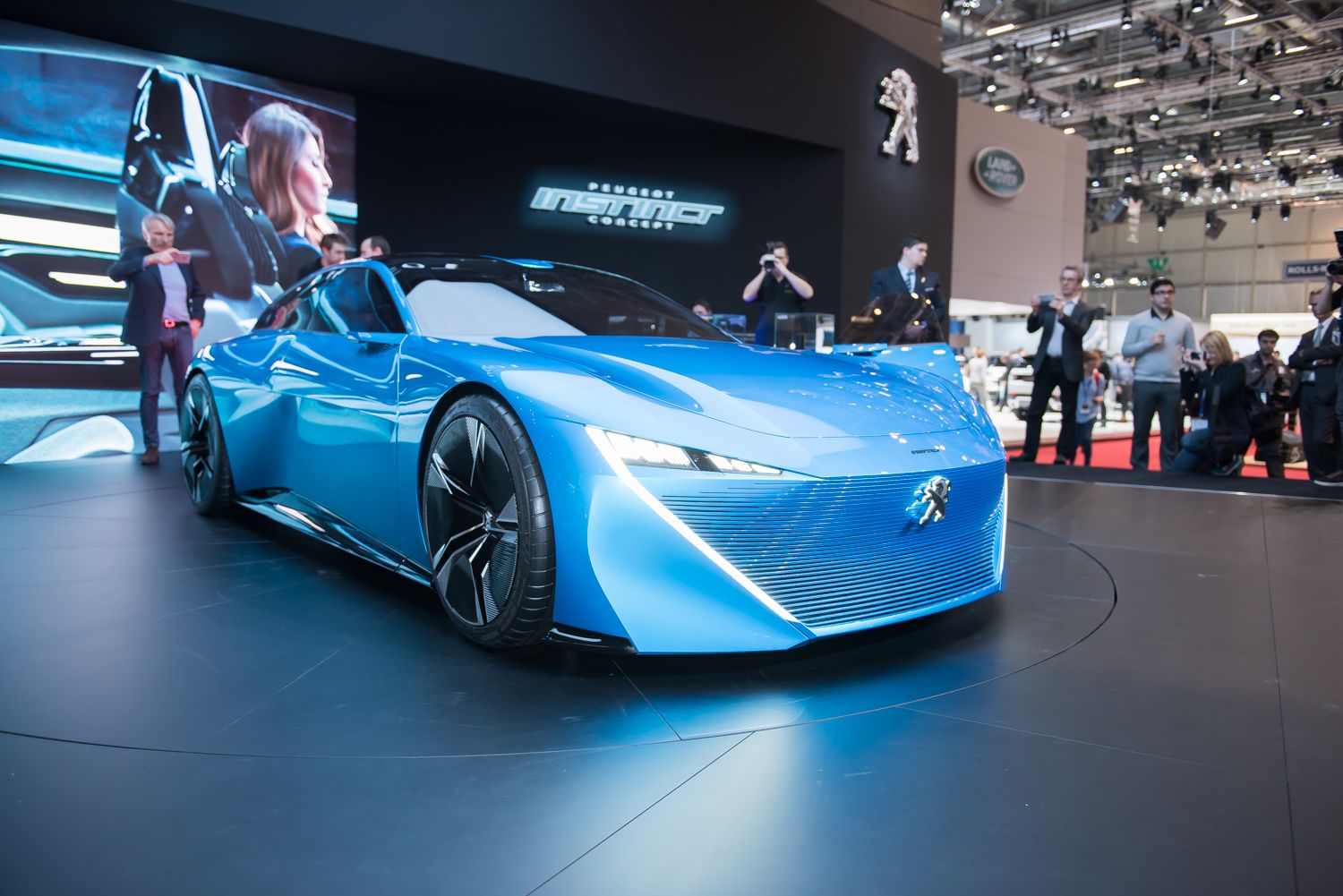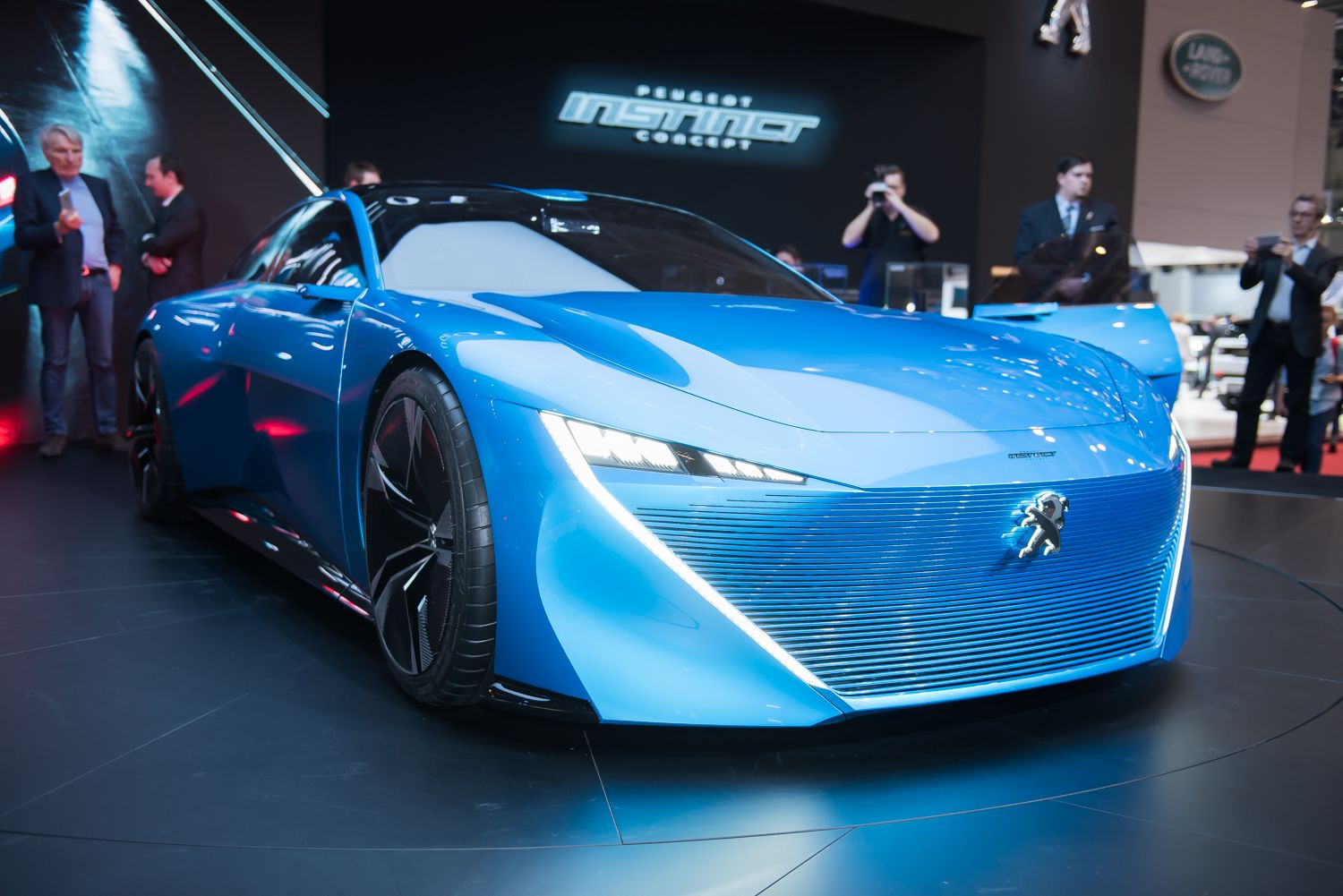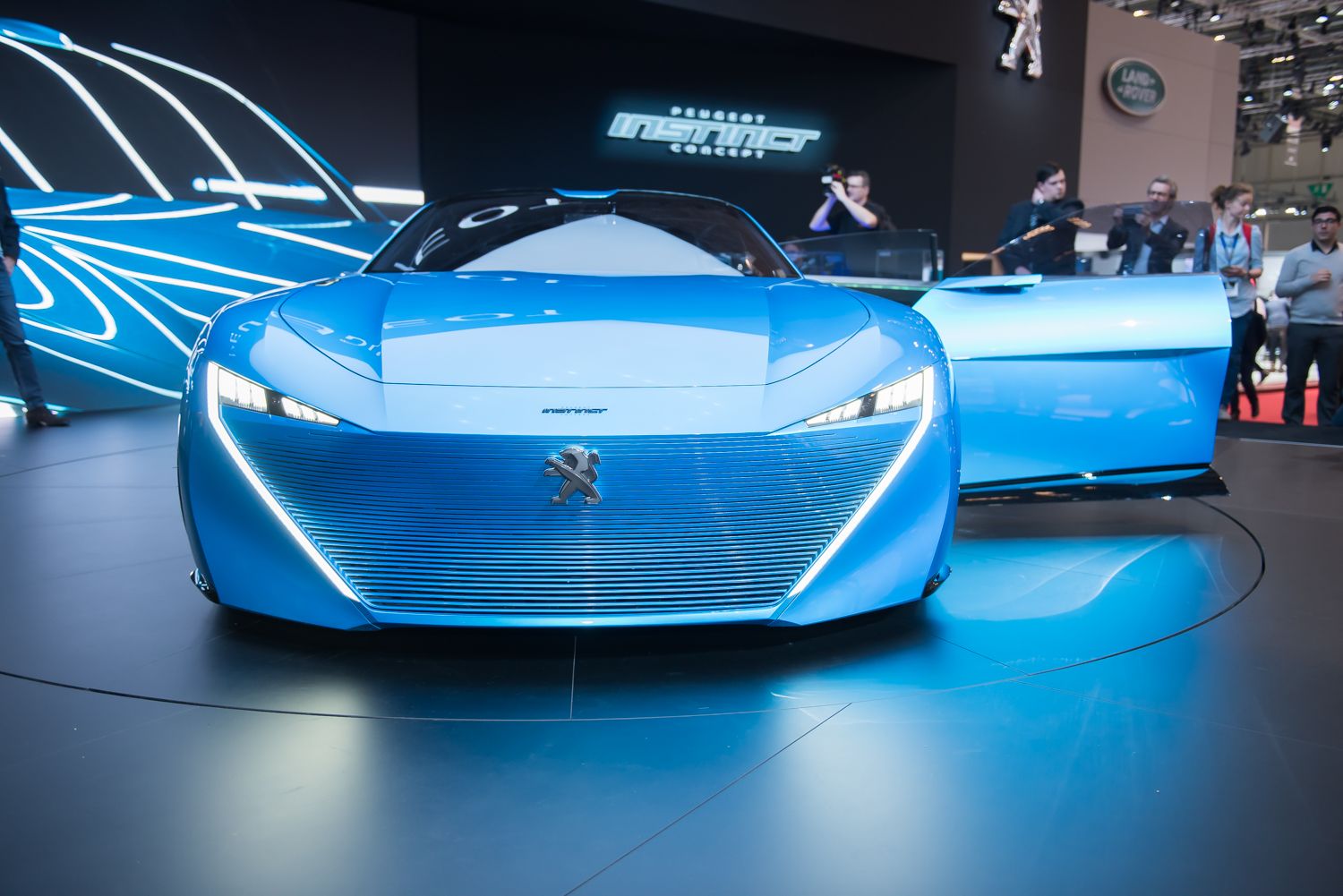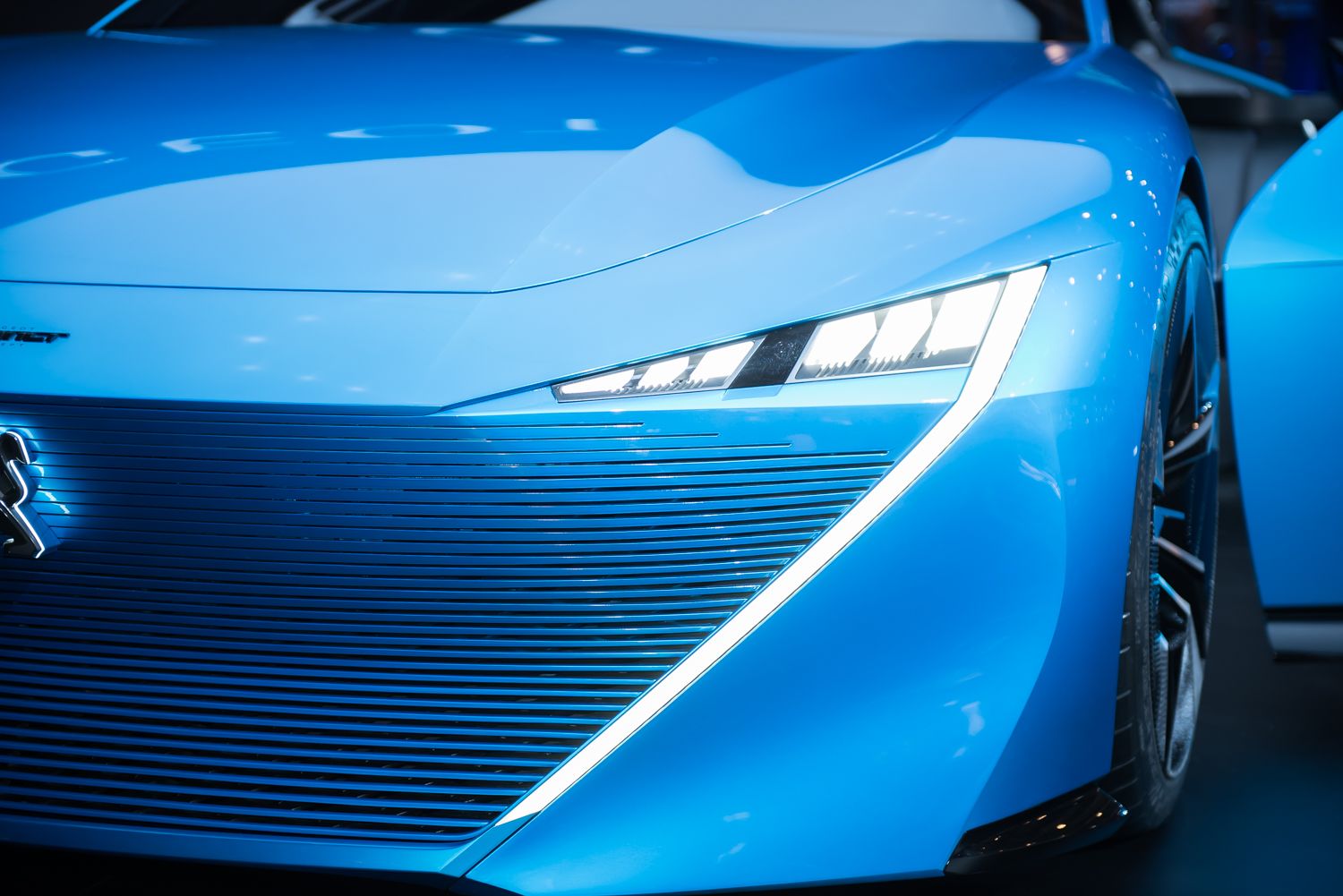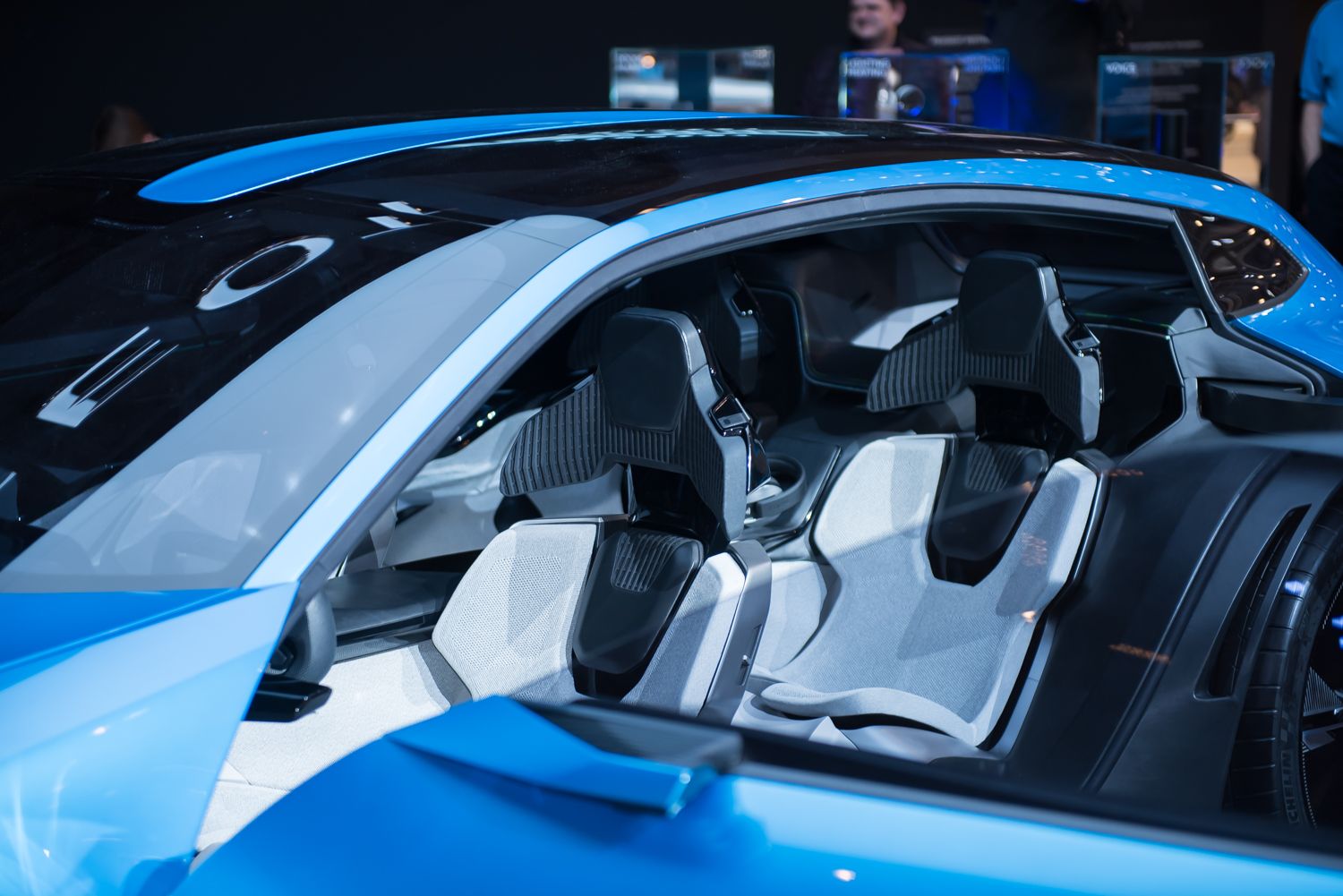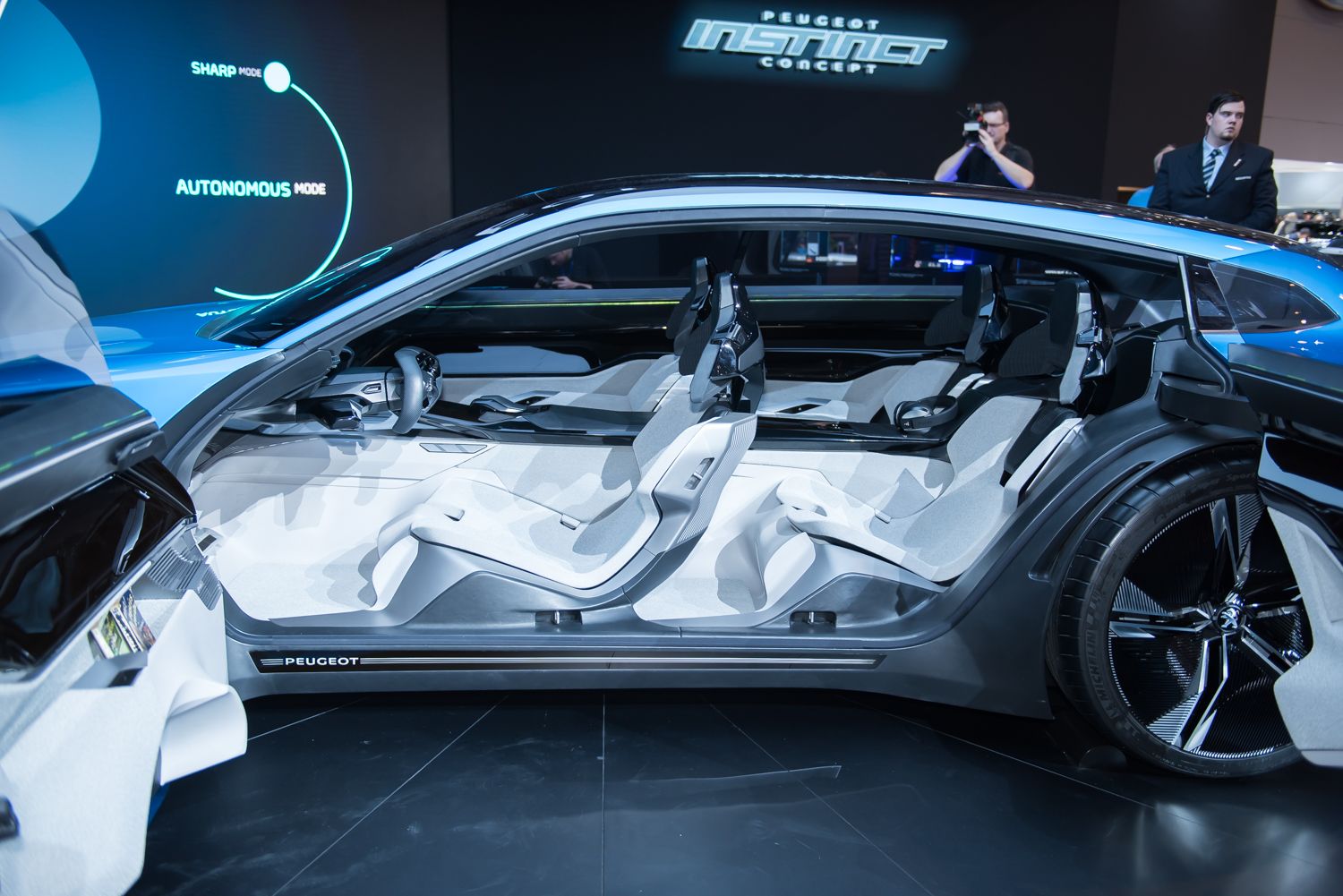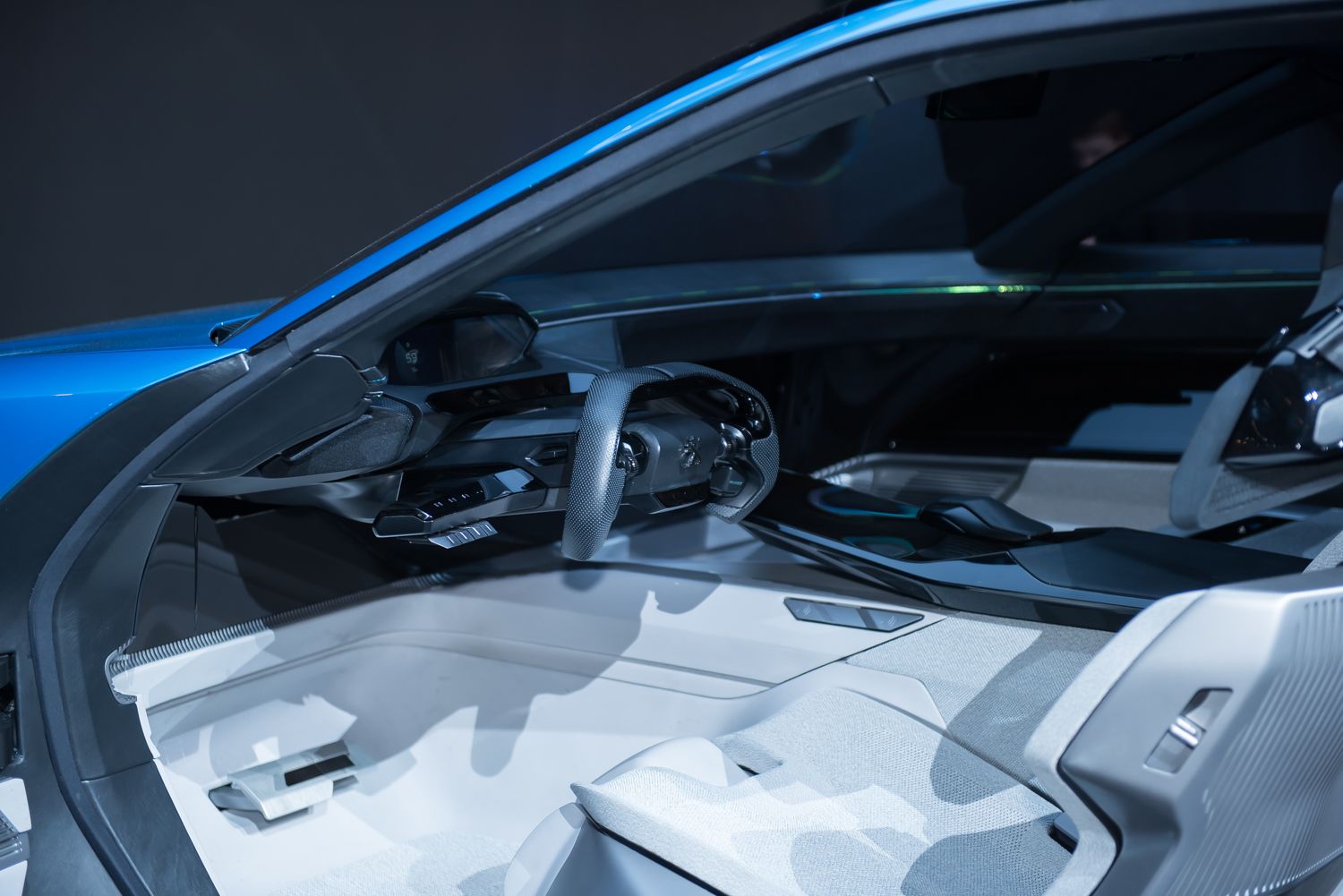Over the past few years, automakers have gone crazy with the concept of autonomous vehicles – something that has led to some futuristic, spaceship-looking concepts that have somehow embedded themselves into our brains as the direction cars will take some time in the future. Think about models like the Toyota Concept-I, the Faraday Future FF 91, or even the Honda NeuV – all of which blend four wheels with wild design and so much technology we’re not sure what to do with it. Now, Peugeot is joining the party.
It might be a little late to do so, but it’s put together the Peugeot Instinct, a shooting brake concept – yes, it’s a true shooting brake – that manages to bring connectivity, relaxation, driving pleasure, and style all into one exciting package. Samsung’s Artiktm Cloud system is used to connect the car to other devices like smartphones, watches, and even smart devices in your home when within range. So far, Peugeot has said little about what motivates this concept, but it’s apparently functional as the brand has said that the “lengthy bonnet hints at the 300 horsepower delivered by the PHEV powertrain.”
Of course, Peugeot concepts rarely turn into production models, and Peugeot’s concept designer, Matthias Hossann, has told Autocar that this concept won’t see production. But, it is quite likely that some of the styling seen here will find its way onto production models, so at least there’s that to look forward too. After all, the Peugeot brand has made some pretty big strides lately in the name of design with models like the 2017 Peugeot 3008, the new 5008 SUV, and even the updated Peugeot 301 all helping to usher in a new era for the brand that promises a bright and stylish future.
But, before we toot Peugeot’s horn too much, let’s take a better look at this concept before it makes its official debut at the Geneva Motor Show in March 2017.
Continue reading to learn more about the Peugeot Instinct.
2017 Peugeot Instinct
- Make: Array
- Model: 2017 Peugeot Instinct
- [do not use] Vehicle Model: Array
Exterior
Peugeot has called this concept is timeless, and it would be hard to argue with that statement. The front end is dominated by the massive grille that takes on a different look depending on your position. The thin LED headlamps each feature a camera right in the middle that acts as a pair of eyes for the car, constantly scanning the area ahead and sending information back to the driver assistance systems. Those LED headlights are flanked by active light signatures that apparently operate above 55 mph to reduce air drag on the body.
The Peugeot logo on the front fascia glows white when in autonomous driving mode to let the world know that the car is in control. The small dimples in the corners of the fascia seem to be counterintuitive to the car’s aerodynamic nature but apparently won’t slow it down at all. The long hood is fairly muscular with a couple of very sharp lines that are flanked by the slightly elevated front fenders that make the hood a bit of a valley before dropping off into the front fascia.
Moving over to the side profile, the name of the game is aggressiveness and intriguing design. The front fascia wraps around the front end and turns into the fender seamlessly, while the seam between the door and front fender is almost nonexistent. The wheel arches sit higher than the headlights and are filled with just the right mixture of wheel and tire. Moving farther back, an aggressive and protruding bodyline creates an overhang in the body work that is accented by a side skirt that extends from the side and fills the void between the door and the wide rear quarters.
Those wide rear quarters, which are necessary for the significantly wider rear track are also the widest part of the car, leaving the passenger cabin to be on the thinner side. And, be that as it may, it’s still very stylish and you can’t argue with the shooting brake design. It should be noted that this concept goes all out on futuristic design, and like most other concepts of this caliber features rearview cameras instead of mirrors, and lacks the traditional, mechanical door handles.
The rear end, on the other hand, is arguably just as, if not more aggressive than the side profile. The LED taillights start out in the center, extending from the lion emblem and getting taller as they approach the rear quarters. I want to call them wraparound units, but it really looks more like they are recessed into the body a bit and follow the slight contour of the rear quarters. The lens units themselves feature three clusters of four vertical LED lights that serve all rear lighting purposes, including taillights, brake lights, and side markers.
For a car so wide in the rear, it seems odd that the rear glass would be so thin, but it somehow works with the car's overall design despite being a bit awkward. Down below, the rear fascia is really aggressive with recessed corner vents that might actually be functional on an aerodynamic level. In the center sits a diffuser-like element with a single large fin situated vertically right in the middle.
All told, it’s such a stylish and interesting concept that it's quite sad that the likelihood of it becoming a production model is slim to none. But, at least we know Peugeot has its mind in the right place these days (think 3008, 5008, and the 301) so something tells me we’ll at least see some of the design cues here in future models.
Interior
The interior of the Instinct makes me feel like an F1 car, a space shuttle, and a Tesla came together and made some weird, cyclops love child – you know, the kind of child that’s cute, but you’re not sure if it has some sketchy super powers. Anyway, you open the suicide doors to reveal a cabin that’s both sporty and excessively easy to get into. The front and rear seats are almost identical. Apparently, the seat bottoms are fixed while the seatbacks can be adjusted for ultimate comfort.
The center console serves as a centerpiece that also divides the left and right passengers front and rear. Oddly, this concept doesn’t go with the usual pivoting seats, despite its autonomous capabilities. Sitting in the driver’s seat presents you with a small half-wheel that is void of any bottom spoke or rim and offers thumb control buttons on each side spoke. Wrapped in what appears to be perforated leather, the unit is likely heated and ventilated, but more importantly, will retract into the dash when autonomous drive is activated.
Ahead of the steering wheel sits a small, holographic instrument cluster that displays different information depending on what mode you’re in. In drive mode, it will display things such as vehicle speed, the energy levels of the PHEV powertrain, battery level, etc. In autonomous mode, the pedals, toggle switches, and pedals retract, while the holographic display provides information like remaining journey time, distance traveled, and the like.
In the center is a display that is molded into the center console and is likely used to choose various drive modes and control parts of the car, while the passenger side of the dash is fitted with a large display screen that provides a map and journey details as well as providing a home for the various infotainment system functions.
Furthermore, all passengers can interact with the car via a chatbot that operates similarly to that of Google voice and Siri. As an example, Peugeot says users can book cinema seats and pay online while on the go, so that should give you some idea of the actual functionality.
Apparently, the floor is finished with a “thin concrete layer” that has a “silky” feel to it. Not sure how that works out, but apparently, it invites passengers to kick off the old clodhoppers and relax in transit. A 3D mesh is used for most of the trim inside the vehicle, including the center console, door panels, and seats. All told, it’s an impressive interior design and somehow manages to border right on the line of too much and feasible in the next five years. Well done, Peugeot.
Drivetrain
So, we’ve seen what the Peugeot Instinct looks likes, and we’ve seen what the interior offers, but what about the motivation behind it all? Well, truth be told, we just don’t know. According to Peugeot, there’s 300 horsepower on tap from a PHEV “power chain.”
Outside of that, we don’t know anything. Is there a small ICE stashed away under the hood that’s paired with a battery and electric motor? What kind of electric range will it have? The 3008 is set to receive a plug-in model in 2019 that includes an electric motor on the rear axle to make it all-wheel drive. That model is said to use a smaller battery that offers just 31 miles or all-electric range. Plus, the brand is set to launch a total of seven PHEVs and four all-electric models by 2021, so what’s lurking under the hood could be a hint at what will motivate these future models.
Considering that Peugeot has gone so far as to give the Instinct at least some active aero features, it obviously had at least some focus on performance and handling, and 300 ponies aren't necessarily something to laugh at if the car is light enough. Hopefully, Peugeot will announce more details about the drivetrain when the car makes its debut in Geneva shortly. We do know that the car has four different drive modes: Drive Boost, Drive Relax, Autonomous Soft Mode, and Autonomous Sharp. The first two, are used for manual or semi-manual driving.
Drive Boost allows the driver to take full control and participate in spirited driving, while Drive Relax used the advanced driving systems to help assist the driver to make the journey easier. The Auto Soft mode is used to create a relaxing autonomous trip that makes for a smooth ride and gentle turns. Switch over to Autonomous Sharp mode, however, and the car will drive more precisely with efficient and sharp road handling – kind of like being spirited without putting in the legwork.
Conclusion
While I’m sad that this shooting brake concept will probably never end up being more than a concept, it’s nice to see that Peugeot can jump on board with the rest of the manufacturers out there and come up with an interesting design that could hint at the brand's future. Of course, we’re still waiting for Peugeot to root itself in the U.S., so the excitement is being kept to a dull roar over here, but the brand’s future looks like bright, and it’s painfully clear that the brand is ready to take on the future.
How much of what we see here will make it into future models? Well, that remains to be seen, but you can bet that we’ll see at least some of the technology and features eventually. Of course, we wouldn’t mind seeing a shooting brake production model either, so fingers crossed. But what do you think? Is it freaking amazing or is Peugeot way out in left field with this concept? Let us know in the comments section below.

